
Home » Travel Guides » Spain » 15 Best Things to Do in Pamplona (Spain)

15 Best Things to Do in Pamplona (Spain)
You can’t talk about this city in northern Spain without mentioning San Fermín, the explosion of merry-making every July. During a week of mayhem there are daily bull runs, in which crazy tourists and locals try not to get trampled or gored by marauding fighting bulls and steers.
There’s a lot more to the fiesta than just the bull-run, just as there’s much more to Pamplona: For most of the year it’s a quiet provincial city, with a quite peculiar history, beautiful sights, superb food and some of the best wine in Spain.
Let’s explore the best things to do in Pamplona :
1. Ciudadela de Pamplona

In the Vuelta del Castillo Park is this renaissance-era citadel, which shows off the flat star-shaped design that took shape after gunpowder was adopted by European armies.
Construction began in the 1570s and wasn’t completed until 1645, although extensions were made in 1685 to bolster the outer walls.
And after that, well, not much happened! It never faced a siege and so is in a good state of preservation.
The bastions now host art exhibitions and concerts take place within the walls in the summer.
During San Fermin in July the nightly fireworks competition takes place from the citadel walls.
2. Pamplona Cathedral

The site of this 15th-century cathedral has got a pretty eventful history.
This spot was the centre of the Roman town of Pompaelo, and it was here that its first Christian cathedral was built.
This was demolished when the Moors arrived, and put back up after the city was taken, before it collapsed and was replaced by another romanesque cathedral that also fell down! Finally this French-style gothic building was put up and has remained ever since.
Look up in wonder at the vaulting above the nave, and check out the choir, which is fitted with carved stalls from the renaissance.
Take a look at the Diocesian Museum leading off the cloister, where religious art from lost churches around Navarre is on display.
3. Plaza del Castillo

Pamplona’s main square is such a big part of the city’s social life that it’s often described by locals as their “cuarto de estar” “(the living room). It’s just south of the old town (San Cernin), between the former medieval settlements of San Nicolas and Navarrería.
The square is arcaded on all sides in the typical Spanish renaissance style, with the outdoor seating of cafes and restaurants next to lawns and rows of pollarded plane trees.
In the middle of the square is a stone bandstand and concerts are held here on summer evenings, especially during San Fermín.
4. Museo de Navarra

Some intriguing fragments from Pamplona’s earliest cathedral are on show at this museum that casts light on the entire human history of the Navarre region.
Inside this gorgeous renaissance hospital are large chunks of the romanesque cathedral’s stonework, including the elaborately carved capitals that stood atop the pillars of a long-lost cloister.
A little older is a mosaic of the Triumph of Bacchus, dating to the 1st century, while there’s also a Moorish ivory chest from the 1000s.
Part of the fun of the museum is its eclectic displays that cover anything from medieval frescoes to a Goya portrait of the Marquis of San Adrián.
5. Iglesia de San Saturnino

As we’ve seen, Pamplona didn’t start out as one city; it was a set of three neighbouring “burgos” (villages or boroughs) and none of them really got on very well with each other! The proof can be seen at this 13th-century gothic church, which was the parish of San Cernin.
If it looks a bit like a fort then this isn’t a coincidence as this church had a defensive role during skirmishes between the neighbourhoods.
These days the church’s two towers are one of Palmplona’s favourite postcard images, and the clock tower is the centre of attention on the 6th of July when it counts the start of the San Fermín at noon.
6. Iglesia de San Nicolás

From there you should make the five-walk down to the parish of San Nicolás, whose medieval church is just as well-defended.
This building has a reinforced watchtower with turrets on each corner.
Originally there were three towers on this gothic 13th-century church, which was built after a deliberate fire had destroyed the old romanesque building on this site.
The highlight of the interior is the magnificent baroque organ, considered the best of its kind in Pamplona.
7. Running of the Bulls

This is the spectacle that most people associate with the city, first brought to foreign attention by Hemingway’s classic The Sun Also Rises.
It’s part of the San Fermín Festival that starts on the 6th of July and runs to the 14th.
Bull-runs are held daily to the end of the festival and have taken place for at least 250 years.
Six fighting bulls and six oxen are released from a corral to run the 825-metre course through the old-town and into Pamplona’s bullring where they’ll be killed in fights later that day.
People running with the bulls tend to wear a white uniform with a neckerchief bearing the city’s coat of arms, and needless to say it’s a seriously dangerous activity, with hundreds hurt each year.
8. Chupinazo

At noon on the 6th of July is the emblematic opening of the festivities, held from the balcony of the Ayuntamiento (Town Hall). The tens of thousands gathered in the square below will hold their red neckerchiefs in the air with two hands and join in chants praising Saint Fermín, before a firework is lit to signal the start of the festival.
The event is usually broadcast live on regional TV, and the person in charge of leading the chants and lighting the firework is normally a local politician, but can also be a star football player or local celebrity.
9. San Fermín Procession

At 10.00 on the 7th of July a long procession leaves the Church of San Lorenzo and winds through Pamplona in honour of Saint Fermín.
It’s another of the essential events during the festival because of its sense of ceremony and the enthusiasm of the gathered crowds.
All sorts of musicians march through the streets, including the city’s official brass band, and impromptu chants and songs will start up in the crowd.
Also in the parade are the Giants, large papier-mâché figures that often date back decades or hundreds of years.
Lining the procession route are crowds several people deep, and almost everyone will dress in the white garb with a red scarf.
It’s a sight you won’t soon forget!
10. Urbasa Andía Natural Park

An hour west of Pamplona is where two mountain ranges, the Urbasa and Andía meet.
In between the high ground is an elevated corridor of green pastures and mossy beech forest.
It’s an idyllic landscape that is lush with vegetation and is the source of several of the region’s rivers.
The karstic geology of the park also creates some stunning natural landmarks to track down, like gorges with sheer walls, lofty waterfalls and dreamlike pools of turquoise water.
The source of the Urederra River is the most beautiful sight, where the spring splashes down a 100-metre cascade enveloped by woods of hazlenut, elm, maple, oak and yew.
11. Taconera Gardens

A light amble uphill to the west of the old city is Pamplona’s oldest park.
It’s a refined location for a stroll, laid out in the French style with long avenues between deciduous groves and trimmed hedges.
On the southeastern side of the park is a triumphal arch dedicated to Julián Gayarre, the acclaimed 19th-century tenor.
For the little guys there’s a small zoo with deer, peacocks, pheasants and ducks that live in semi-freedom.
The park also has portions of Pamplona’s old walls, and from the northern rim of Taconera you’ll have gorgeous vistas over the River Arga, Pamplona and the dark foothills of the Pyrenees behind.
12. San Sebastián

Just an hour north by road is Spain’s summer escape for generations of wealthy families.
On the Concha Bay, San Sebastián has two seductive golden sandy beaches.
The Atlantic is smooth here as the Island of Santa Clara, visible at the entrance of the bay, is a barrier against the currents.
You could laze by the ocean during the day or climb the small mountains and headlands that add a sense of grandeur to the landscape.
The crest of Igueldo to the west has a wonderful, clear view over the bay and city.
By night you’ll have the run of Spain’s best culinary city, whose restaurants have a reputation surpassed only by Paris.
13. La Rioja

Southwest of Pamplona are the sweeping vineyards of La Rioja wine region, one of Spain’s most exported labels.
Wine has been made here since the Phoenicians settled this part of Spain some 2,500 years ago.
The industry really took shape at the start of the 12th century when it got legal recognition from the King of Navarra and Aragon.
A superb place to connect with La Rioja’s viticulture is the city of Logroño, a veritable wine capital.
In the city there are cellars (bodegas) where you can share a bottle of wine with friends and pair it with cheese or cured ham.
There are also wineries and co-operatives in the countryside to show you how some of Spain’s best wines are made.
14. Regional specialities

Set just to the south, Pamplona’s cuisine has a few things in common with Basque food, but there some lovely local foods to seek out and even take home with you.
The obvious one is asparagus, which even have designation of origin in Navarre.
These are thick, white and grown on the fertile banks of the Ebro River.
They have that ghostly pallid appearance because they are grown entirely underground, but are delicious in salads, stews or even grilled.
Navarre’s signature liqueur is Pacharán, a bright red digestif flavoured with sloe fruits.
15. Pintxos

The northern Spanish form of tapas gets its name from the toothpick (pincho) that is used to hold each little dish together, usually on an open slice of crusty bread.
Friends will go out for pintxos at any time of the afternoon or evening , and unlike in some parts of Spain the dishes don’t come free with drinks.
They can be surprisingly imaginative concoctions, especially in the posher bars.
For something earthy and regional go for txistorra, a spicy sausage from the Basque region that is also a staple in Navarre.
If you’re out on a Thursday many bars have something called Juevintxo, when if you order a beer you’ll get a Pintxo to go with it for a reduced price.
15 Best Things to Do in Pamplona (Spain):
- Ciudadela de Pamplona
- Pamplona Cathedral
- Plaza del Castillo
- Museo de Navarra
- Iglesia de San Saturnino
- Iglesia de San Nicolás
- Running of the Bulls
- San Fermín Procession
- Urbasa Andía Natural Park
- Taconera Gardens
- San Sebastián
- Regional specialities
- Travel to Spain Itineraries
Travel to Pamplona: 9 Best Attractions, Food & Activities

Win a FREE Trip to Spain!
Exciting Announcement! For the first time, we're thrilled to offer exclusive trips to the heart of Spain - an experience like no other. This isn't your typical tourist journey; it's a unique opportunity to immerse yourself in authentic Spanish culture, alongside real locals and our passionate team.
But there's more! Simply by requesting information about this amazing trip, you'll be entered into a special draw to win a Fully Paid Trip to Spain for Two. And that's not all - everyone who inquires will receive an exclusive bonus gift, valued at $500, available only now.
Click Here ↑ to Request Information & Enter the Draw!
Although many believe the year is divided between “before and after San Fermin,” this beautiful Navarrese town has much life besides July 7.
In this article, I will provide all the necessary details to help you plan your visit to this modern, green, traditional and secure city, which boasts a huge variety of gastronomic delights.
This place may not have the best weather, but it’s still got its own charm. Just follow my local advice, pick the right dates, (have faith or cross your fingers) and you’ll probably end up with some great weather to enjoy!
Pamplona is a unique city that blends calmness and liveliness. But if there’s one thing that makes this city unique is its residents, who are extremely devoted to their customs and deeply admire their roots and traditions.
Whether you’re a local or a visitor, you’ll feel right at home in Pamplona. And I’ll show you how to experience it to the fullest!
Table of Contents ▼ ▶
What is Pamplona?
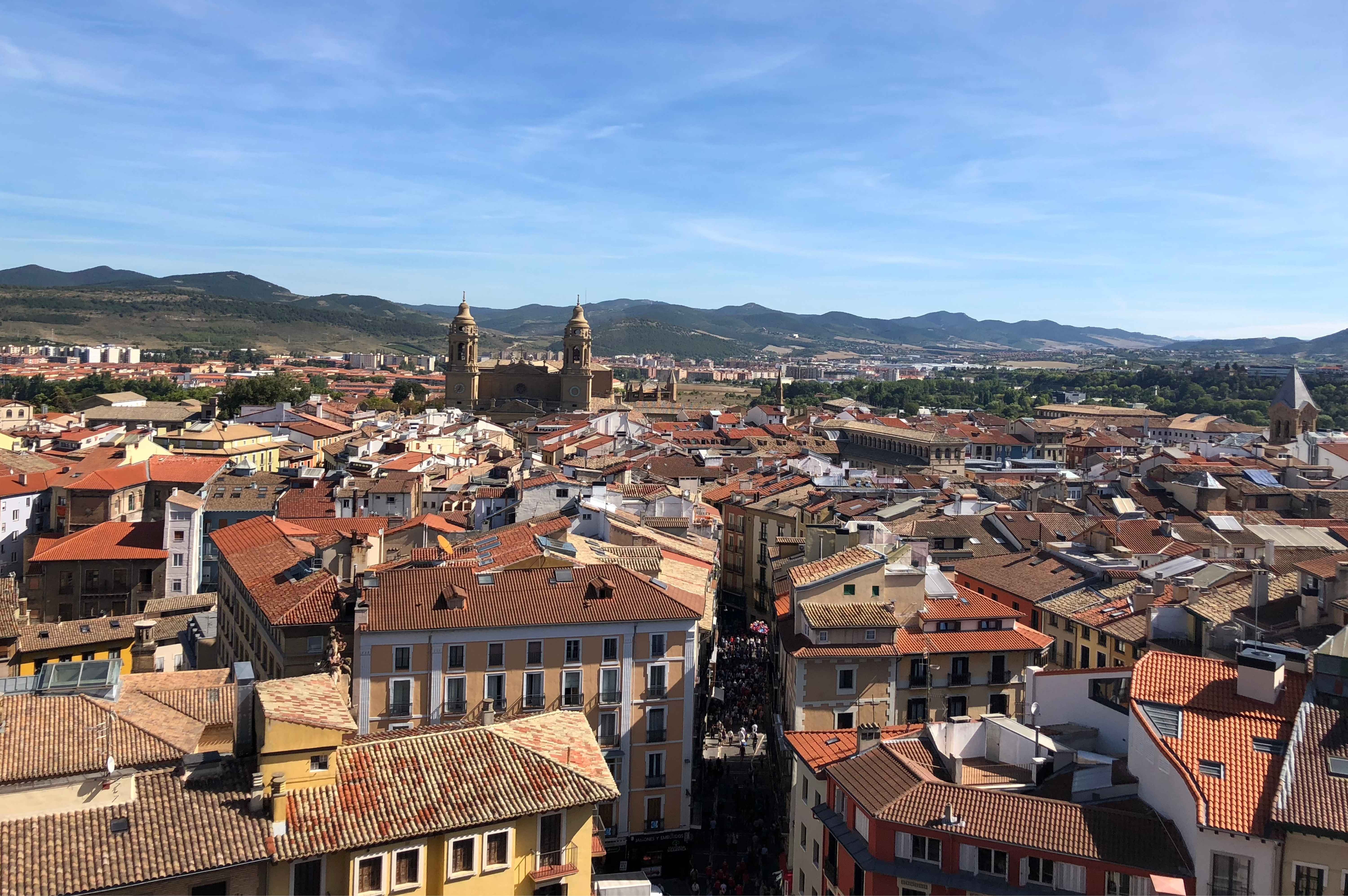
Pamplona, which is also known as Iruña in Basque, is a city located in the northern part of Spain and serves as the capital of the autonomous community of Navarra.
The city has a rich history and an interesting blend of traditions, making it a unique destination that offers visitors an unforgettable experience.
You’ll find mostly elderly population mixed with young students, as traditional families make up a significant part of the community. The quality of life, security, and health standards in Pamplona are exceptional, making it one of the best places to live in Spain.
Others might know this city for the University of Navarre, which is renowned internationally and has a huge green campus worth visiting even if you’re a tourist.
This makes it a lively place where young locals and international students come every year to fill the city with some extra joy.
In this article you’ll also find some iconic places worth visiting in the Navarra region. As Pamplona is the main capital, it becomes an ideal setting for hiking and nature excursions.
What better opportunity to discover some of Spain’s natural wonders than this?
Best Things to Do in Pamplona
1. experience the running of the bulls at the san fermin festival .
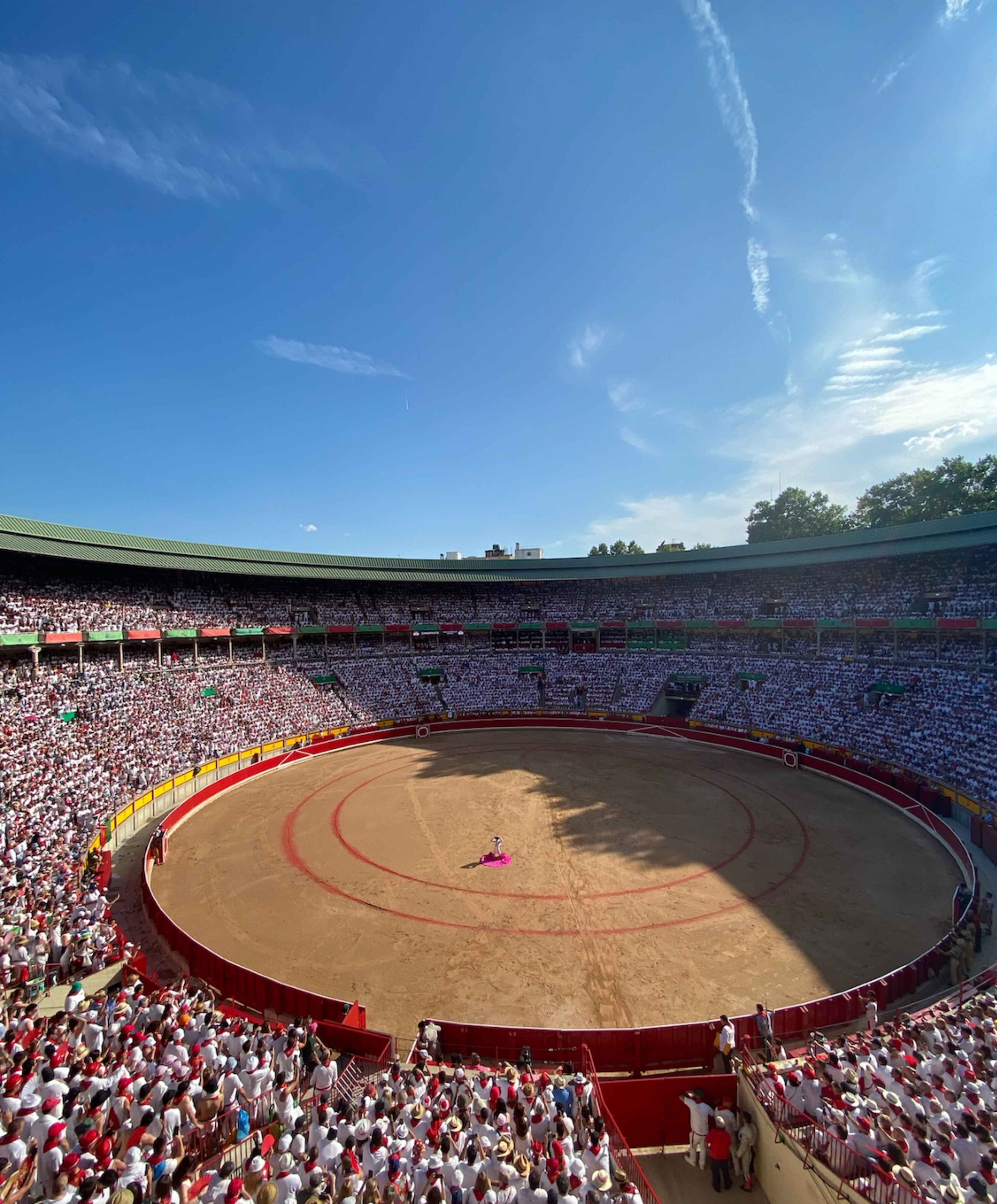
San Fermin is one of the biggest fiestas in the world, held in Pamplona from the 6th to the 14th of July.
This famous festival is dedicated to Saint Fermín, and the main event in San Fermin is the running of the bulls. It consists of running in front of a group of brave bulls released into the streets of Pamplona.
Thousands of people participate in this exciting and somewhat “extreme” event, running alongside the bulls from the pens to the city’s bullring.
In addition to the running of the bulls, San Fermin offer numerous activities and events throughout the week. There are parades of giants and big heads, live music, traditional dances, fireworks, and various cultural and sporting shows and activities.
2. Explore the Old Town
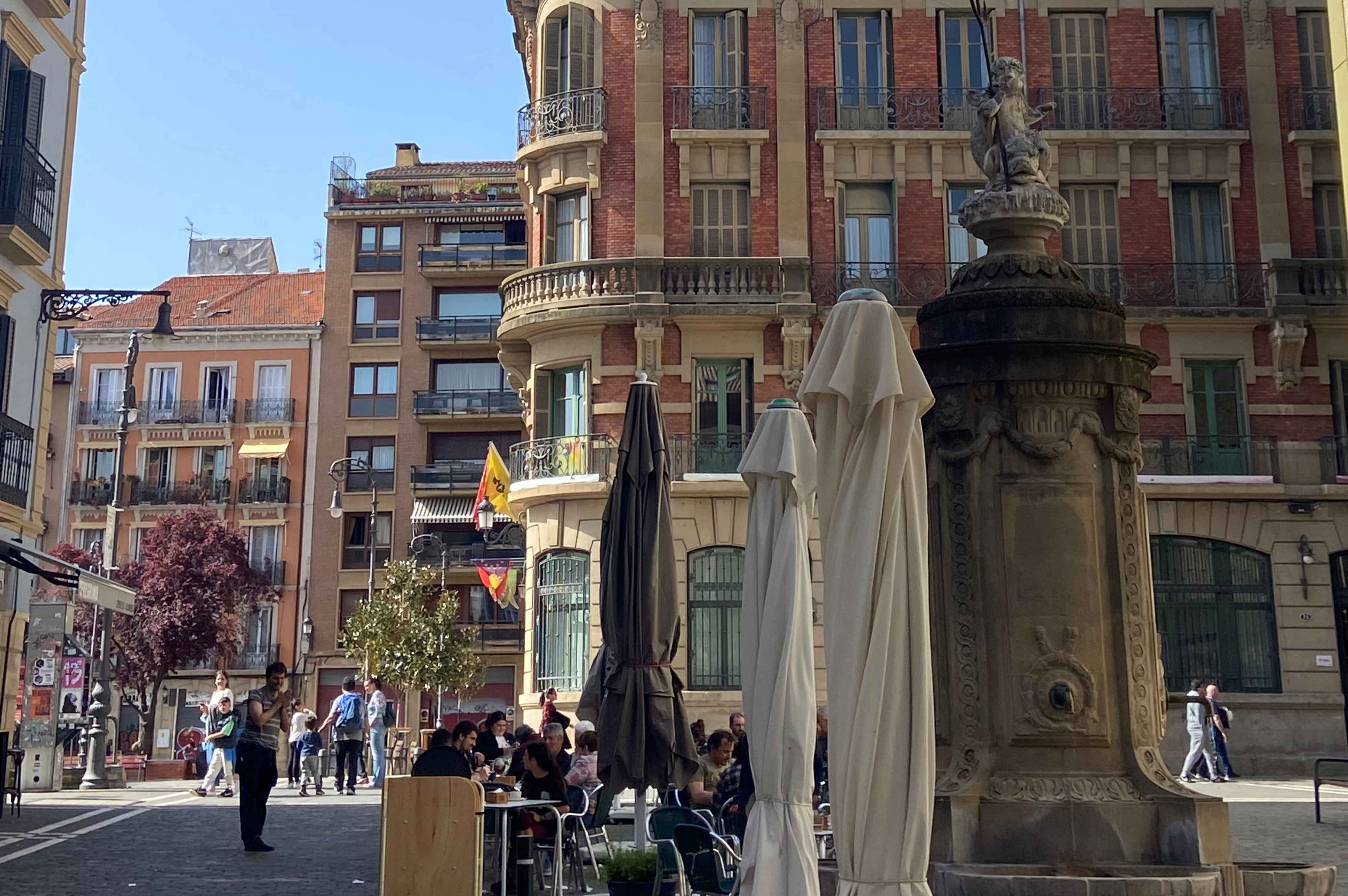
The old town of Pamplona is where you will want to get lost on a walk to grasp the essence of the place, soak up the Basque culture, how life unfolds in the streets, and the characteristic smells of the regional dishes.
Among the most important attractions you will find are La Plaza del Castillo , the iconic center of the capital of Navarra, probably the main image that comes to mind when you think of Pamplona.
You can see the Navarra Palace , surrounded by charming neoclassical and historicist-style buildings, and in the center, a kiosk.
Unlike many other large cities in Spain, the city center is not a tourist scam when it comes to authentic dining spots.
Pamplona’s narrow streets are filled with many bars and restaurants, making it perfect to savor the best traditional food!
You have the Pamplona Bullring and the outstanding Town Hall Headquarters a few meters away, where the chupinazo occurs every year during the San Fermin festivities.
3. See the Murallas de Pamplona
It is one of Spain’s best medieval remains of walls and fortifications. It was built long ago to protect the city with a fortified ring.
To see it, you can start in the Media Luna Park , where you cannot miss the monument to Pablo Sarasate , the Ronda Obispo Barbazán , and the Portal de Zumalacarregui.
Don’t forget to go to the medieval Magdalena Bridge and finish your tour by walking through the Taconera Gardens , reaching the iconic La Ciudadella Park.
This place was initially built as a Renaissance fortification by Philip II to protect the city. Later on, it was transferred to the City Council to serve as a public cultural and leisure space.
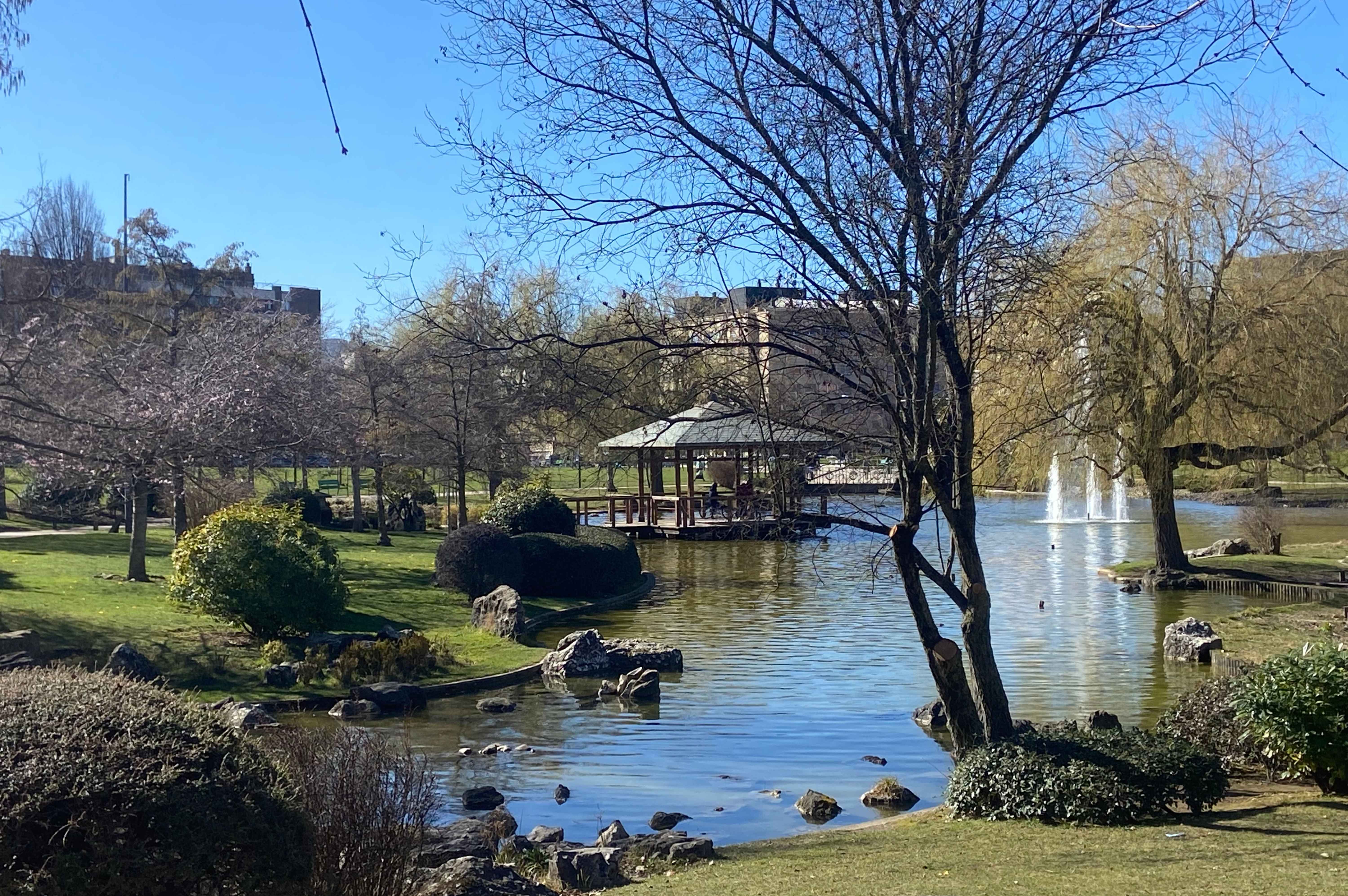
Take advantage of this opportunity to relax and enjoy a picnic after a long day of walking!
4. Catedral de Pamplona
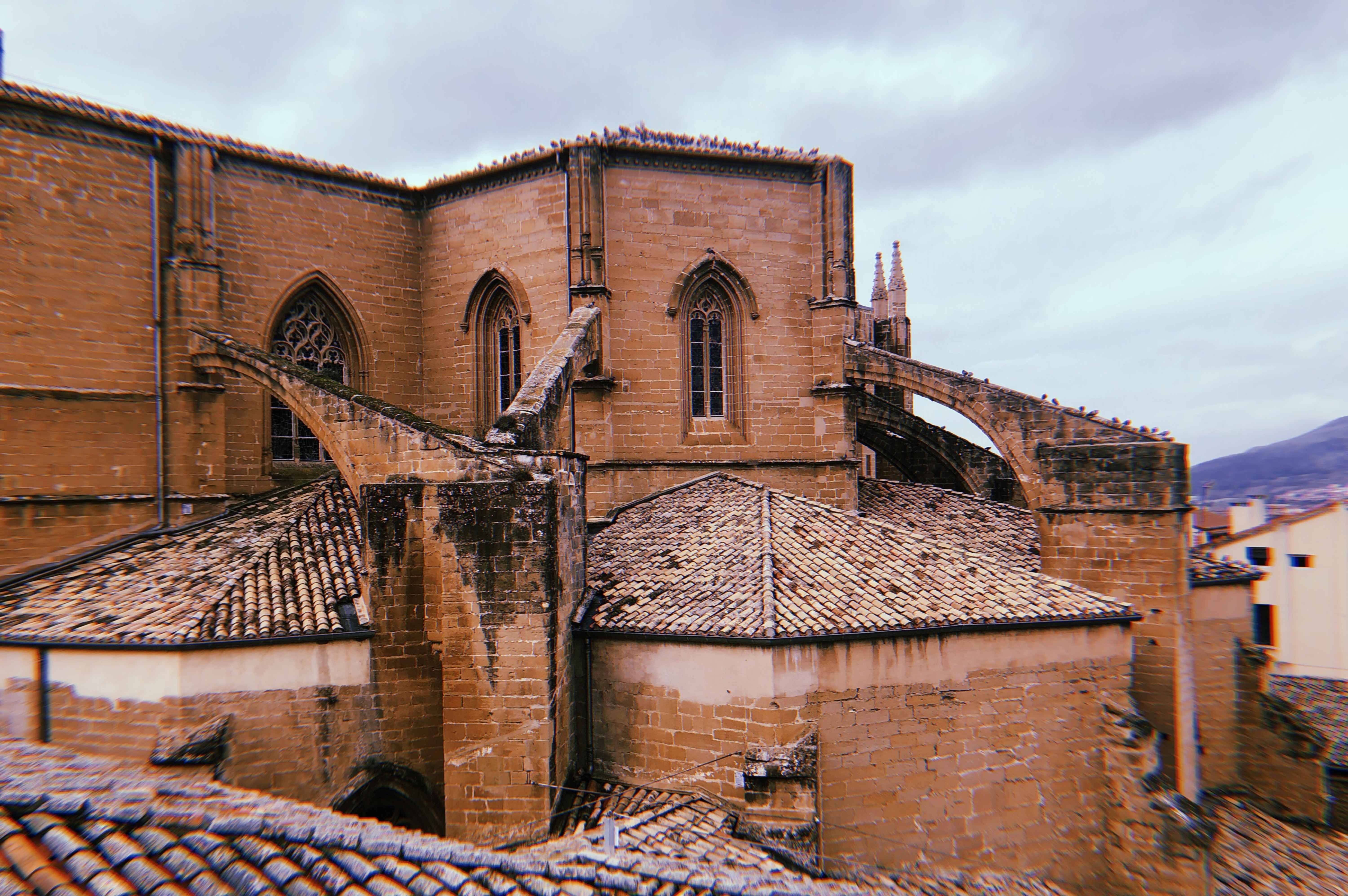
The Cathedral of Santa María la Blanca stands in the old town of Pamplona. It is the most important Cathedral in the city and was built in the 11th century by order of Sancho el Mayor and Bishop Pedro de Roda.
Although the diocese itself is much older, the current Gothic building was constructed between the 14th and 16th centuries on the foundations of the original temple consecrated in 1127, with San Fermín as the first bishop of the diocese in the year 80 of the Christian era.
It is worth a visit since it’s located on a unique uphill street called Calle Curia. It offers a picturesque image of the Cathedral, housing one of the most iconic pastries shops on its road, called Pastas Beatriz.
The Museum of Navarra currently has the few remaining Romanesque ornaments from the Cathedral.
5. Have drinks like a local and enjoy Juevintxo
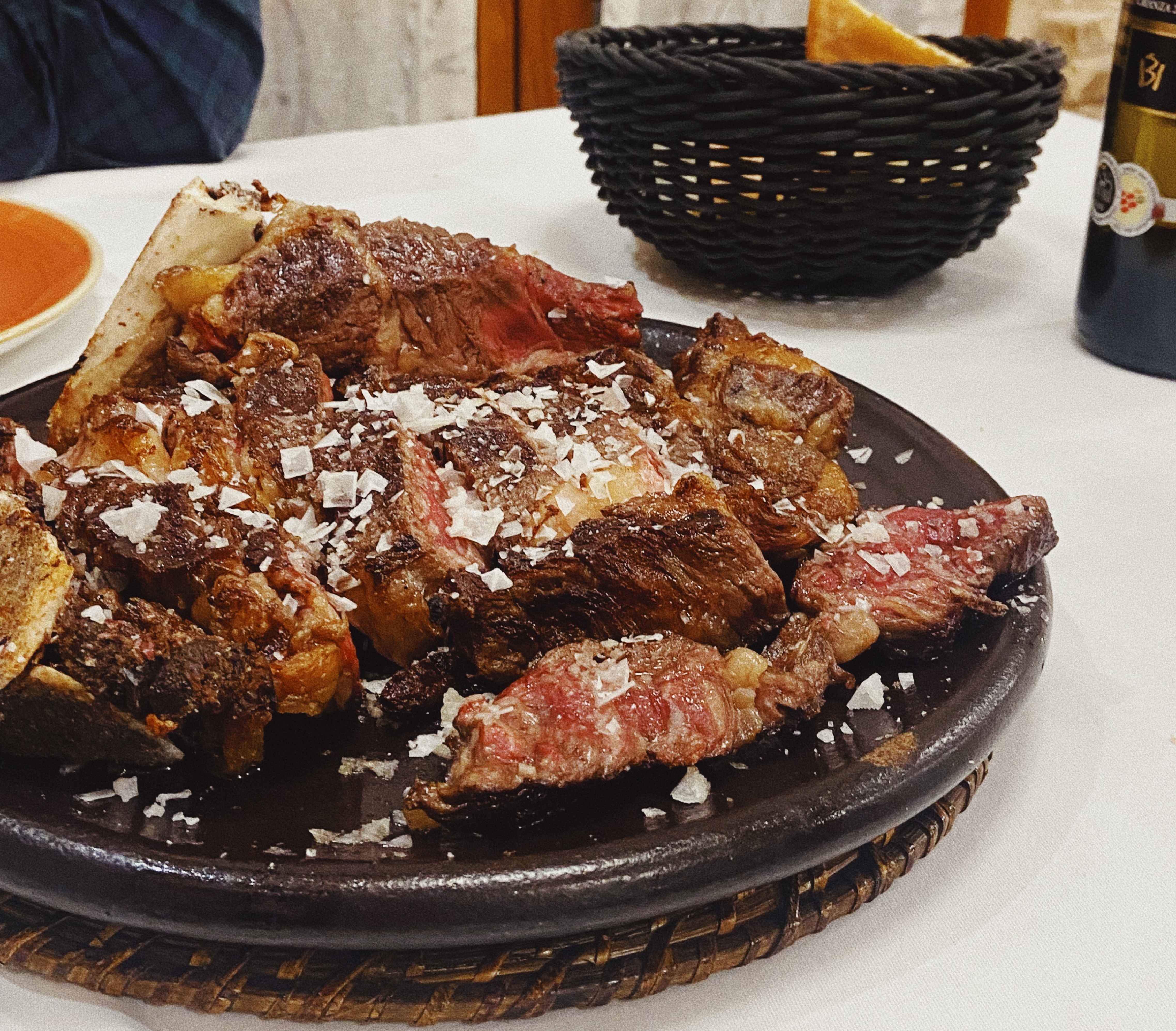
In Pamplona, it is a traditional activity to go out and enjoy pintxos on Thursdays. You can find these delicacies in the streets near the city center and the Bullring.
I have explored every corner of the city to find the best food. I can confidently say that Bar Gaucho, Katuzzarra, Iruñazarra, Basserriberri, El Temple, Bar Urrizelki, Chez Belagua, and La Cocina de Alex Múgica serve some of the best pintxos I have ever had.
Once you immerse yourself in Pamplona’s culture, you will realize they are very social and attached to their groups, or “cuadrillas.” They say that once you make a group of friends, it becomes an inseparable crew.
You will see the city filled with people socializing while enjoying beers, pintxos, and zuritos outdoors. (Zuritos are the equivalent of espresso but with wine.)
6. Visit the Best Museums in Pamplona
Museo de Navarra
You can find the Museo de Navarra in the heart of the old town, which houses an impressive historical relic collection.
This museum has a diverse collection of artifacts, including Paleolithic and Iron Age items, artistic samples from Roman, pre-Romanesque, Romanesque, and Muslim Navarre, Gothic and Renaissance art, Spanish and foreign paintings from the 17th and 18th centuries, works by Francisco de Goya, as well as Navarrese paintings from the 19th and 20th centuries.
Museo de la Universidad de Navarra
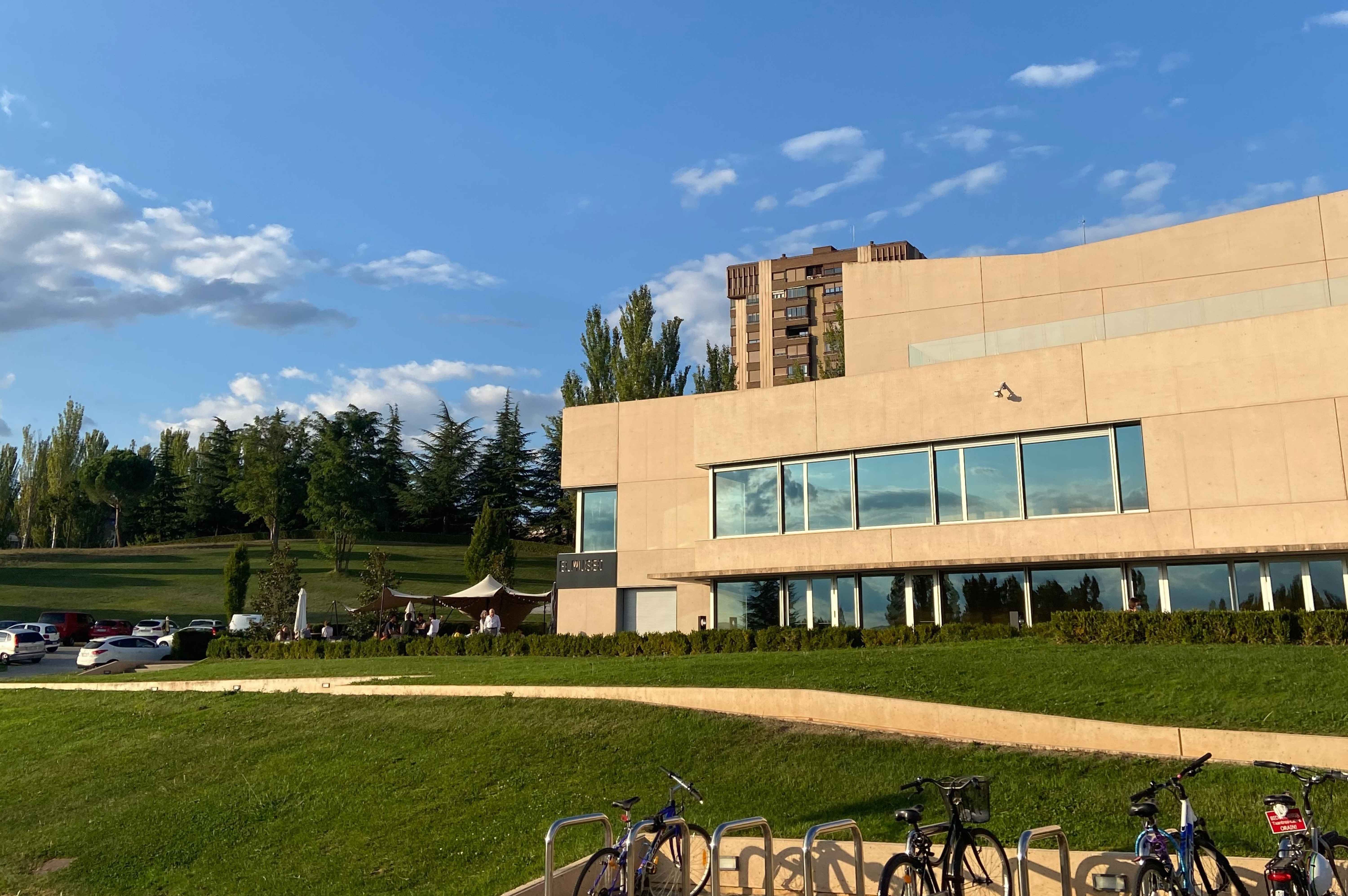
Then you have the Museo de la Universidad de Navarra (inside the University complex), which is one of the most fantastic university campuses in Spain, with the greenest area you’ll find! It has a gorgeous view of the countryside and is located in Pamplona.
I recommend you visit this contemporary art museum designed by architect Rafael Moneo. It serves as a bridge between the cultural and creative life of the region of Navarra, the university life, and the rest of the world.
Very interesting, the views are worth it, and it has a cafeteria to grab lunch outside on a terrace.
7. Embark on a hiking route to Foz de Lumbier
Navarra brags about some of the most stunning landscapes in Spain. If you’re looking to explore a popular yet less touristy natural reserve, then La Foz de Lumbier is the place to be.
Along with the Sierra de Leire and the Foz de Arbayún, it forms one of the most picturesque landscapes in the region.
It takes about an hour to complete the journey without any stops. You will reach the third tunnel after 30 minutes, and then it will take another 30 minutes to return.
8. Make a trip to Bardenas Reales
A dessert in one of the rainiest places in Spain, like Navarre? Yes, there is.
The Bardenas Reales is a Natural Park and has also been recognized as a Biosphere Reserve. If you love hiking and the outdoors, this is the perfect place.
It’s actually a semi-desert natural wonder with naturally sculpted formations resulting from the erosion of clay soils, sandstone, and gypsum that will leave you speechless.
There are numerous routes to explore it on foot. Some of them are:
- El Fraile Route: Begins in Corrales de Bea and has 4 and a half km, including a visit to Cabezo del Fraile, from where you have views of the old fortress.
- Circular route: a 34 km loop that will take you one or two hours to complete. Begins at the entrance to Arguedas, heading towards the Castil de Tierra.
- From South to North: visiting the entire extension of the Bardenas Reales, including Castil de Tierra, the Caldero track, the Roncaleses ravine, and the monument to Pastor Bardenero.
9. Explore nearby towns, San Sebastian and The Olite Castle
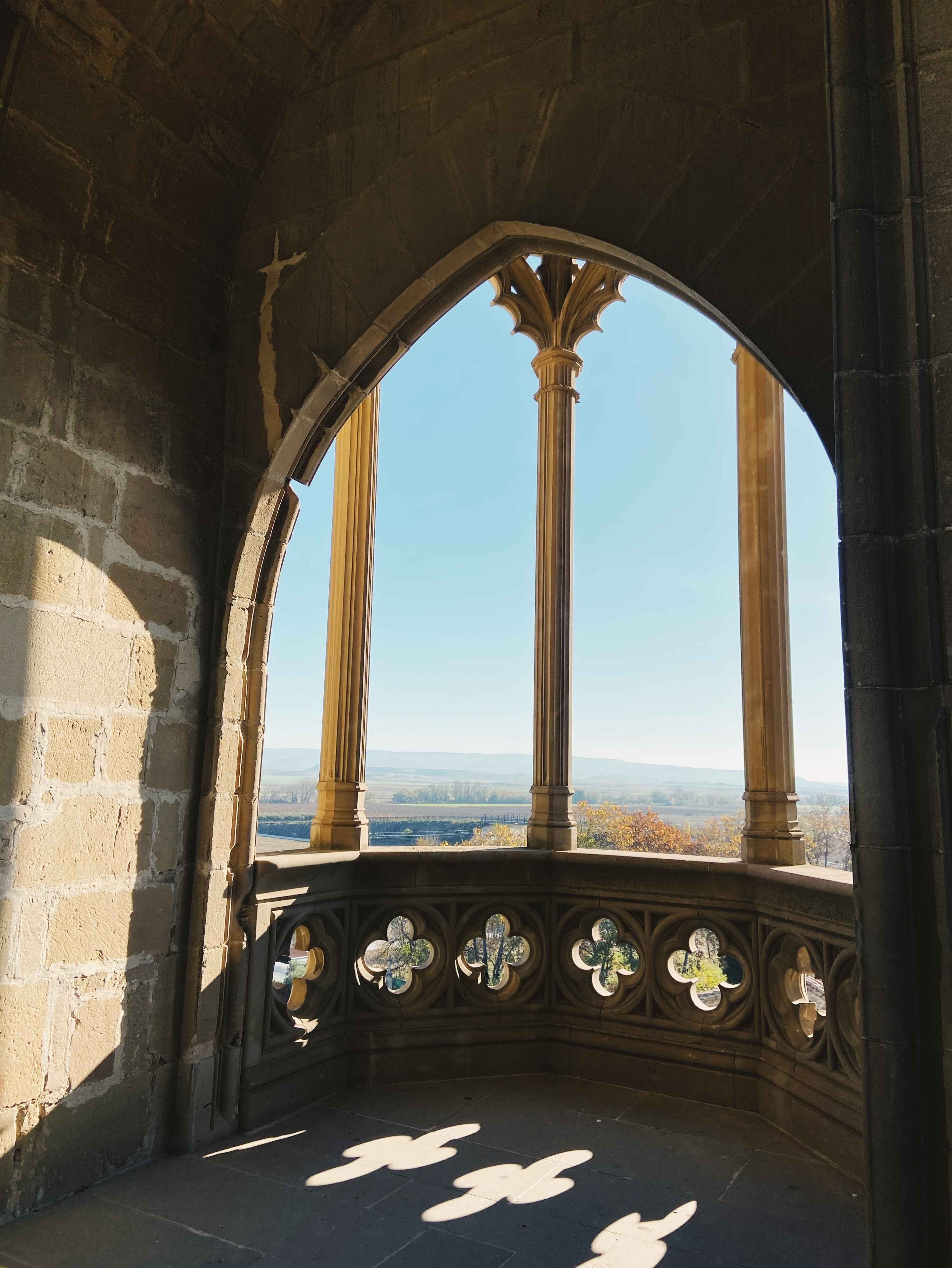
If you are in Pamplona, take the chance to visit one of the most iconic castles in Spain: The Royal Palace of Olite , located in a nearby town. This impressive architectural complex is perfect for a romantic getaway or a day trip with your partner.
It has a rich history, home to viceroys and the nobility throughout the centuries. After being settled by the Romans and Islamic groups, the palace was rebuilt on the site of an old fortress that had witnessed the French occupation and many other important historical events.
Read more: 20 Best Castles to Visit in Spain: Fairytale Sites!
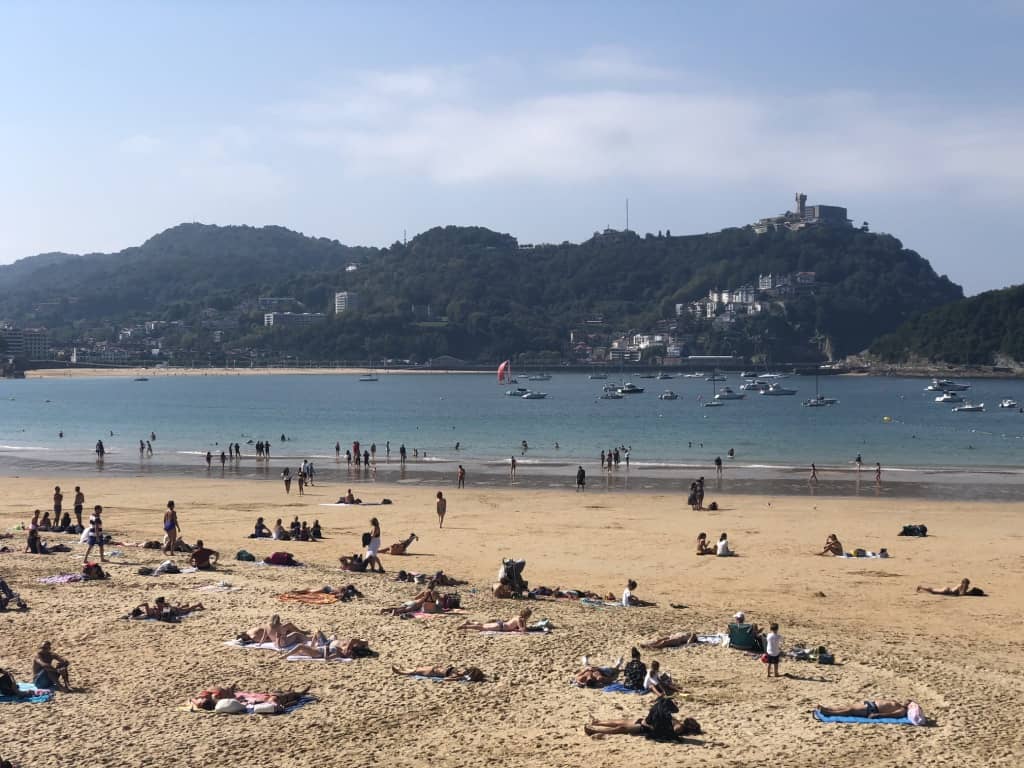
Moreover, you can get a beach getaway to San Sebastian and delight yourself with basque gastronomy, one of the most delicious cuisines in the country.
This small town is among the top 10 places to visit in Spain, and it happens to be less than an hour away from Pamplona!
This location is home to the San Sebastian International Film Festival and has some exclusive restaurants for authentic gastronomic experiences.
If you need help planning your trip, let me offer you some guidance!
Read more: Travel to San Sebastian: 7 Activities, Food & Attractions
Best Time to Visit Pamplona
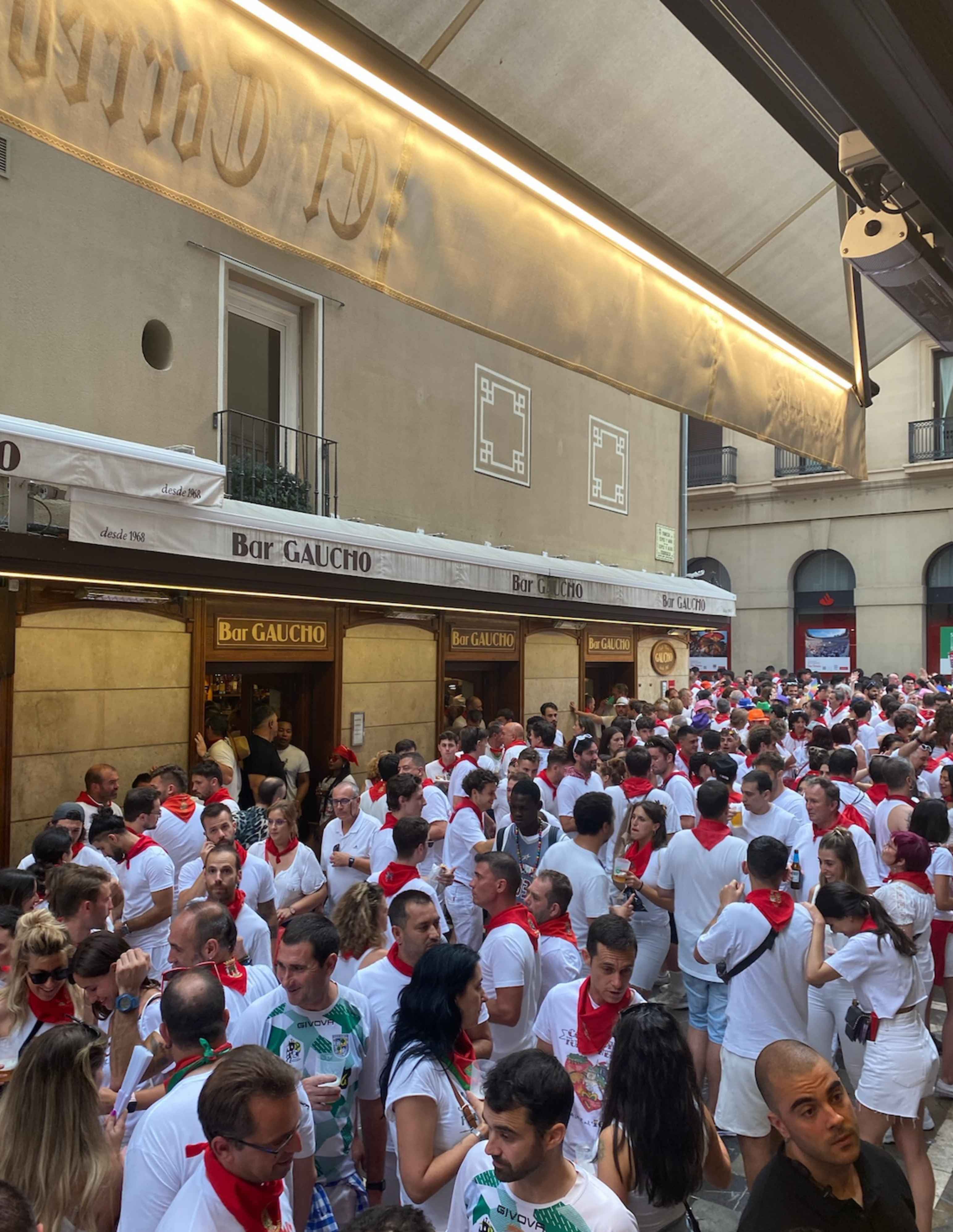
If you plan a visit to Pamplona, go between May and October. During summer and early autumn, you can expect pleasant temperatures with little rainfall.
The city’s most important festivities are held in July, offering a unique cultural experience. Also, late August and early September are great times to visit for leisurely hikes in the peaceful surroundings.
Read more: Spain in July: 7 Travel Tips, Activities & Weather
If you are looking for a warm climate, travel to Pamplona in July, where the average temperature is 21 °C and the maximum can reach 28 °C. Additionally, this month is when the city prepares for the most anticipated week of the year, San Fermin.
However, June and the first week of July are the most expensive months to travel, and it can get a bit harder to find accommodation, so book in advance or begin your journey in mid-June.
How to Get to Pamplona
By high-speed train (Renfe)
Renfe is the railway company offering connections in Pamplona, and it is one of the best options to reach the city in terms of price/quality.
- The train journey from Madrid to Pamplona takes about 3 hours, costing around 56€ for a one-way ticket. However, if you book in advance, tickets can be way cheaper.
- The train journey from Barcelona to Pamplona takes about 3 hours, costing around 50€ for a one-way ticket.
Tip: If you’re taking a taxi to your accommodation, RUN to the parade after you arrive. It is right next to the entrance after leaving the train station. You’ll probably see everyone else running in the same direction.
Still, the station is very well communicated with bus lines that provides easy access to many places in the city.
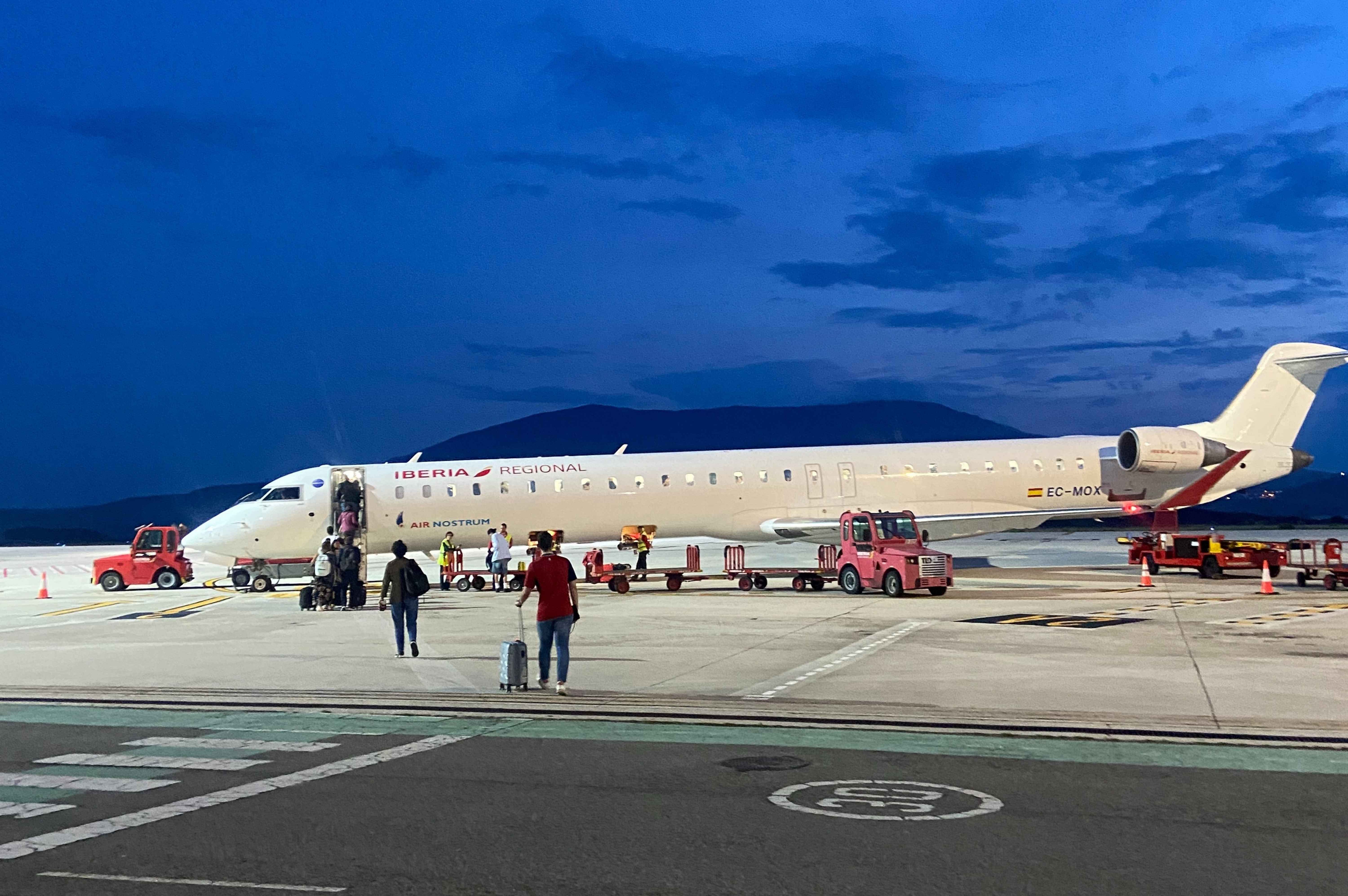
Pamplona has its own airport, located only 5 km from the city center. It is small but has national flights from American Airlines, Avianca, and Iberia Airlines. It also has a few connections with international airports, but they are uncommon.
It is a 45-minute trip from Madrid to Pamplona and usually costs around 80€ for a one-way ticket. But it depends on the season and whether you book them in advance.
- There are several bus lines that operate to Pamplona, including Bus, ALSA, and FlixBus.
- If you’re traveling from Madrid, the cost of the bus ride to Pamplona is approximately 53€ and takes around 5 hours and 20 minutes.
- If you’re coming from Barcelona, the ticket price will be around 58€, and the journey will take about 4 hours to reach the most popular bus station called “Pamplona Estación de Autobuses,” which is located in the city center.
- If you’re traveling from San Sebastian, the bus journey is approximately one and a half hours away, depending on the bus you take, and it will cost you around 16€ for a round trip.
Another option to get to Pamplona is to rent your own car. You can find many options in your typical car rental agencies.
Where to Eat in Pamplona
- Taste a “Pintxo de Foie” at Bar Gaucho
View this post on Instagram A post shared by Bar Gaucho (@bargaucho)
- Enjoy Pintxos at Baserriberri
- Fine dining at La Olla
- Try the best “garroticos” at Pastas Beatriz
- Traditional Chuletón Navarro at Asador Olaverri
Where to Stay in Pamplona
- Stay in La Plaza Mayor at 5-Star Hotel La Perla
- Stay at Hotel NH Iruña Park
- Budget-friendly hotel in Pamplona
How much does it cost to visit Pamplona?
Request information: [email protected]
How much money you need for your trip to Pamplona depends on many things, such as how many people are traveling, the type of activities you want to do, accommodation, the duration of your stay, restaurants, and most importantly, the time of year.
To help you more accurately, please don’t hesitate to reach out to us via email! Share the details of your desired trip to Spain, and we will provide you with a price estimate and offer local advice for all your travel needs.
Choose your Spain Itinerary
1 Day in Spain? 10 Best Things to Do in 24 Hours!
2 Days in Spain: Trip Ideas & Itineraries to Enjoy Your 48h
3 Days in Spain: What’s the Best Itinerary for Your Trip?
4 Days in Spain - Best Travel Itineraries for Short Trips
5 Days in Spain: Itineraries to See (almost) Everything!
6 Days in Spain: The 3 Best Itineraries for Your Trip!
7 Days in Spain: The 3 Best Itineraries for Your Trip!
Either you visit Pamplona during San Fermin or any other time of the year, I’m sure you’ll have a wonderful experience.
Great food, interesting culture, diverse natural landscapes, and lots of nearby towns to explore!
Don’t forget to reach out if you any questions, and we’ll be happy to help you plan your trip to Spain.
Happy travels! :)
READ NEXT: Spain Travel Guide: 21 Ultimate Tips (By a Local Travel Agent)
Rating: No ratings yet. Leave a comment!

You might also like...

Best Time to Visit Spain: Monthly Guide & What to Expect
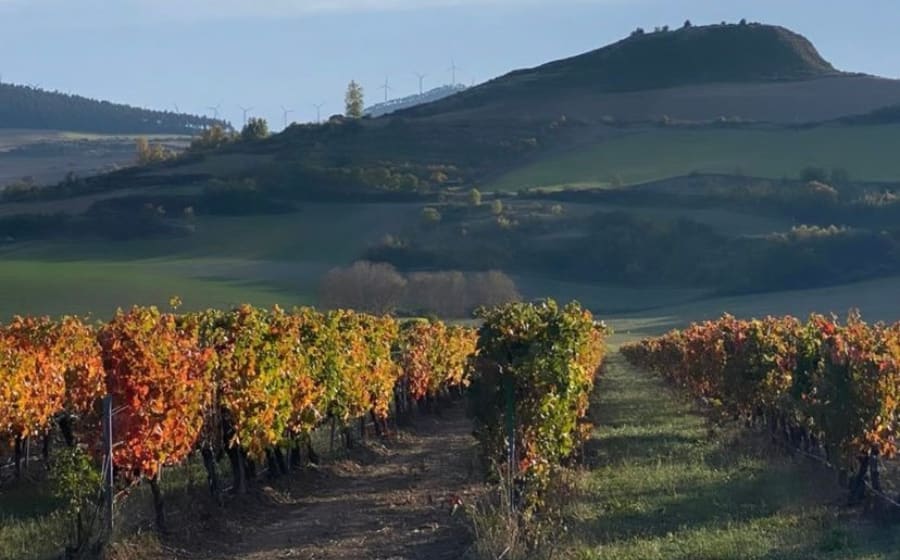
Spanish Vineyards: Insider’s Guide to the Best Wine Tours
Email address (optional), star rating (optional).
Be the first to comment!

Millions of people como to Spain every month! But many never get to experience the SENSATIONAL SPAIN!!
We're both born and raised Spaniards and our goal is to give you all the resources to plan a perfect trip to Spain.
Take a look! 👇
FYI! Some affiliate links may be sprinkled throughout the post. We'll receive a small commission when you purchase from our links (at no extra cost to you), which will help us keep creating content.
Join the waitlist
I'm about to release my City Guides for Madrid, Barcelona, Sevilla and Mallorca.
They're going to have everything you need to plan the perfect trip. From hotels and transport, to restaurants, attractions, activities, & a lot (A LOT!) of tips & tricks.

Spain Travel Guide: 21 Ultimate Tips (By a Local Travel Agent)

What do Spanish People Think of Americans?

What Song Are You Listening To? MADRID

What is the Best Show to Learn Spanish?

Things People Should NEVER do Dating in Spain

Can Foreigners Adapt To The Spanish Lifestyle?

14 Top-Rated Tourist Attractions in Pamplona
Written by Lisa Alexander Updated Dec 25, 2023
Thrill-seeking tourists flock to Pamplona to experience the famous Running of the Bulls event, a wild and rowdy spectacle that is part of the San Fermín Festival in July. Pamplona is also a worthwhile destination in itself.
Still partly surrounded by medieval walls, Pamplona's historic center is filled with architectural gems like its Gothic cathedral, 16th-century citadel, and Baroque town hall. The Casco Viejo (Old Town) is a delightful maze of atmospheric narrow streets and spacious squares, where locals gather to socialize with friends and family.
Tourists will enjoy taking a stroll through the Old Town's pedestrian thoroughfares and stopping at inviting outdoor cafés (especially at the Plaza del Castillo), which offer refreshments and a lively ambience. Pamplona is also well known for its restaurant scene, with offers everything from traditional Spanish cuisine and trendy pinchos (tapas) bars to Michelin-starred fine dining.
Discover the best places to visit in this vibrant historic city of Northern Spain with our list of the top attractions and things to do in Pamplona.
See also: Where to Stay in Pamplona
Running of the Bulls (Fiesta de San Fermín)
Catedral de pamplona, museo de navarra, la ciudadela, plaza del castillo, palacio de navarra, ayuntamiento de pamplona, iglesia de san nicolás, monumento al encierro, plaza de toros, iglesia san saturnino, baluarte palacio de congresos y auditorio de navarra, jardines de la taconera, archivo real y general de navarra, where to stay in pamplona for sightseeing, day trips from pamplona, museo oteiza in alzuza, monasterio de leyre: a serene 11th-century monastery, the historic town of sangüesa in the countryside, roncesvalles along the way of saint james route, the pyrenees mountain village of ayerbe, santo domingo de la calzada: a legendary pilgrims' town, map of attractions & things to do in pamplona.
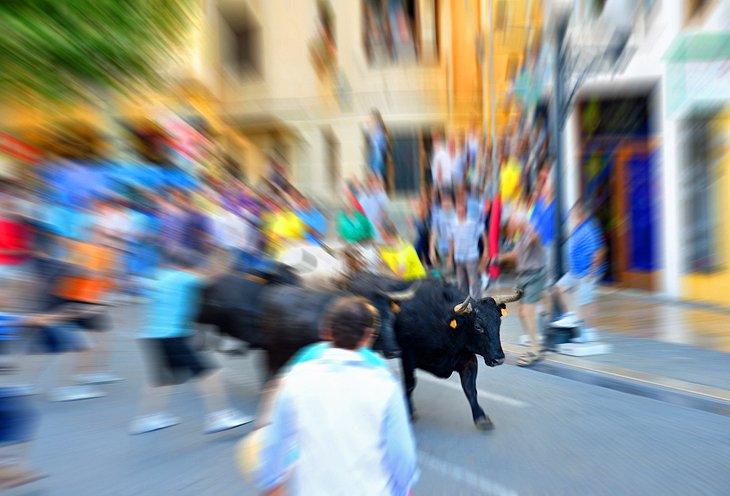
Pamplona is famous for its annual Running of the Bulls ( El Encierro ), immortalized by Ernest Hemingway in his novel The Sun also Rises . The event is part of the Fiesta de San Fermín, celebrated from July 6 to July 14.
The festival includes folkloric music and other entertainment, bullfights, parades of Gigantes (Giants) and Cabezudos (Bigheads), and a procession in honor of San Fermín (Saint Firmianus) on July 7 beginning with a morning Mass at the Chapel of San Fermín.
Every morning from July 7 through July 14 starting at 8am, bullfighting bulls are driven through the streets, which are closed off for the event by security fences. In a dramatic stampede, crowds of daring young men and women race ahead of the bulls, while being cheered on by thousands of bystanders.
The race winds through the narrow streets of Pamplona's Casco Viejo (historic quarter also called " La Navarrería ") in a harrowing course of over 800 meters. However, the race is quick: It's over in just three to four minutes.
Tips: Travelers must keep in mind that this thrilling but dangerous event should only be attempted by runners who are over 18 years and have an advanced level of fitness, quick reflexes, and cool nerves. For those who accept the risk and want to participate in the Running of the Bulls, they must arrive at the Calle de Santo Domingo by 7am.
Spectators should arrive early for good views. A wooden fence lines the route of the race. To ensure a front-row spot behind the fence, it's best to get there by 6am or before 6:30am at the latest.
Some hotels, such as the Gran Hotel La Perla , have balconies that offer views of the race along with a more relaxing ambience. Another option is to rent a balcony from a local resident; visitors can inquire about this at the Pamplona Tourist Information Office on Calle San Saturnino.
Tourists can also watch the Running of the Bulls in a calm atmosphere at various spots in the city (including the Paseo Sarasate, the Avenida Carlos III, the Plaza del Castillo, the Plaza de los Fueros, and the Parque Antoniutti) where the race is broadcast on large screens.
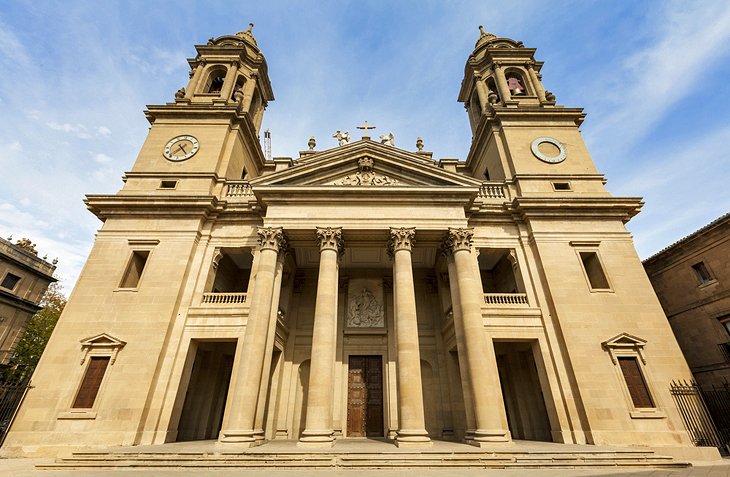
Built over several centuries, the Pamplona Cathedral blends various architectural styles in a surprisingly harmonious way. The monument incorporates the ruins of a 12th-century Romanesque church, which was on the medieval Way of Saint James pilgrimage route to Santiago de Compostela .
The main structure dates back to the 14th and 15th centuries. However, the Neoclassical facade was created in 1799 with twin towers that soar high above the town.
Inside the grandiose Gothic sanctuary is a magnificent choir and the alabaster tomb of Charles III the Noble and his wife Leonora de Trastámara by the Flemish master Jean de Lomme.
The Capilla Mayor displays an exquisite Gothic retablo created in 1507 with fine sculptural details.
In the south aisle, a richly gilded doorway features the 14th-century tympanum Death of the Virgin ; the door provides access to the Claustro (Cloister), considered one of the finest medieval Gothic cloisters in Spain.
The cathedral has retained the Romanesque crypt of the original church that stood at this site. Also from the Romanesque era is a precious 12th-century carved figure of the Virgin Mary, which presided over the baptisms and coronations of the Navarre kings.
The Diocesan Museum is housed in rooms opening off the cloister. The lavishly decorated refectory displays a carving of the Maiden and the Unicorn on the lector's pulpit. The other rooms contain the cathedral's treasury, with a 13th-century Gospel book, a French reliquary of the Holy Sepulcher, the Lignum Crucis (believed to be a fragment of the True Cross), sacred art paintings, and sculptures.
Located in the Casco Viejo near the Plaza del Castillo, just inside the ancient town walls, the cathedral is open for cultural visits Monday through Saturday and for worship every morning and on Sundays. It is also possible to go up to the top of the cathedral's bell towers. Guided tours are available in Spanish.
Address: 1 Calle Dormitalería, Pamplona
Official site: http://www.catedraldepamplona.com/en/cathedral/
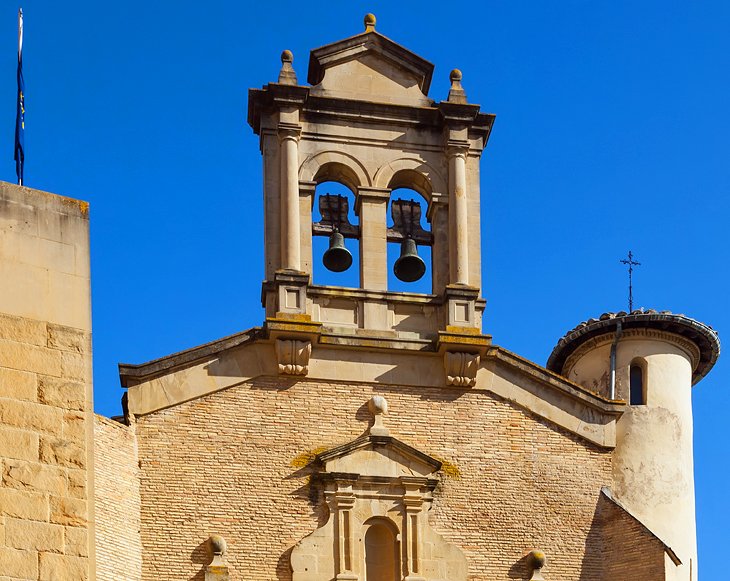
The Museo de Navarra is housed in an old pilgrims' hospital that dates to 1556. The museum's collections reveal the rich heritage of the Navarre region, with exhibits ranging from prehistoric archaeological objects to 19th-century fine arts.
Visitors learn about Pamplona's history by exploring the museum's diverse collections. Among the historical treasures are ancient Roman artifacts, medieval religious paintings and architectural elements, and old Moorish treasures.
Highlights of the antiquities, Romanesque, and Moorish collections are the 1st-century Roman mosaic depicting the Triumph of Bacchus , 13th-century capitals from the cathedral's cloister, and an 11th-century Hispano-Islamic ivory chest.
Not to be missed is the Marqués de San Adrián painting by Francisco Goya. This painting is considered one of Goya's finest portraits, exemplifying the mastery of his artistic techniques in creating light, texture, and realistic emotional expression.
Address: Calle de Santo Domingo, Pamplona
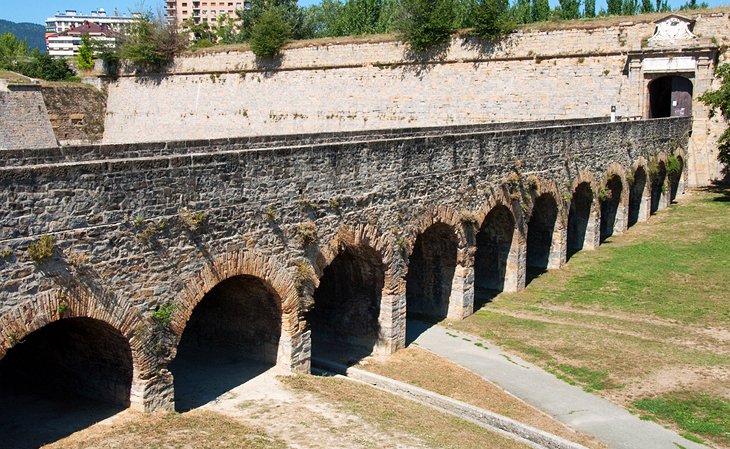
This 16th-century fortress was built during the reign of King Felipe II with the goal of providing defense against invasions by the French army. The pentagonal citadel was designed with defense bastions, although only three have survived.
In the 18th century, the citadel was converted into a prison that housed illustrious figures, including the Count of Floridablanca and the Marquis of Leganés.
Covering 280,000 square meters, the Ciudadela contains moats, pavilions, other buildings, and plenty of green space, surrounded by sturdy fortifications.
The Citadel buildings host cultural events and provide space for art galleries. Surrounding the Citadel, the lush grounds have been converted into a lovely public park called the Vuelta del Castillo , which is sometimes used for outdoor performances.
Visitors will enjoy taking a leisurely walk through the Citadel to admire this superb example of Spanish military architecture of the Renaissance era.
The Citadel is open to the public for visits Tuesday through Saturday and on Sunday mornings. The Vuelta del Castillo park is open to the public everyday.
Address: Avenida del Ejército, Pamplona
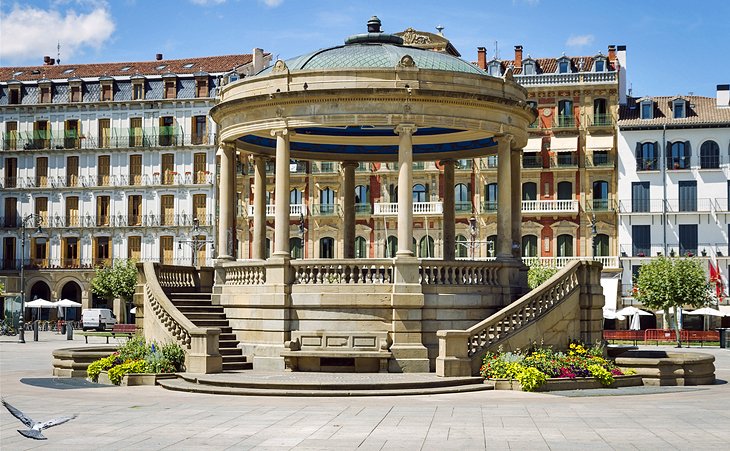
This elegant public square is the central feature of Pamplona, the heart of the Casco Viejo and a hub of social life. The Plaza del Castillo is used for public events, concerts, religious processions, and markets, and until 1844, it was a stage for bullfights.
Beautiful balconied, 18th-century buildings enclose the square, and the ground-level space is filled with shops, sidewalk cafés, and restaurants with outdoor seating.
The Plaza del Castilla is one of the best places to visit in Pamplona to soak up the town's lively ambience. Throughout the day, the square is an animated scene, where children play and all ages get together to socialize. The gazebo at the center of the square is a popular meeting place among locals.
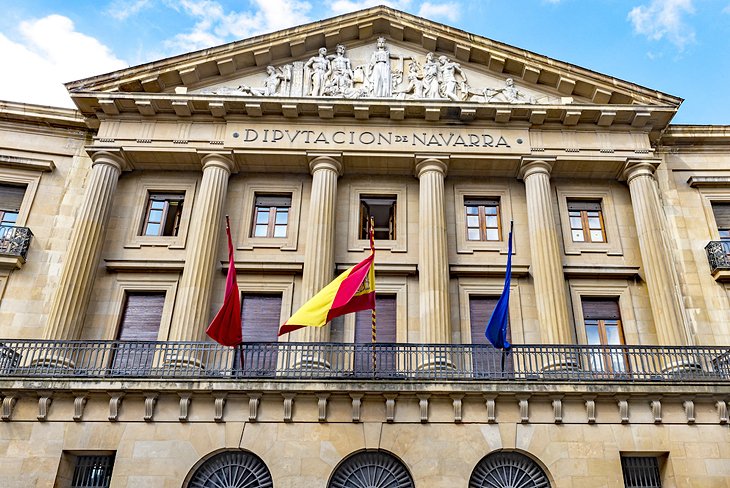
From the Plaza del Castillo, tourists can walk a few steps from the southwest corner of the square to the Palacio de Navarra, which houses the Diputación Foral (Provincial Council), the administrative offices of the regional government.
This splendid 19th-century Neoclassical palace is open to the public for guided tours (Monday through Friday at 3:30pm).
The palace dazzles visitors with its lavishly decorated Salón del Trono (Throne Room) and exceptional works of art, including a portrait of Ferdinand VII by Goya and a 13th-century tapestry depicting the Las Navas de Tolosa battle.
Address: 1 Avenida Carlos III El Noble, Pamplona
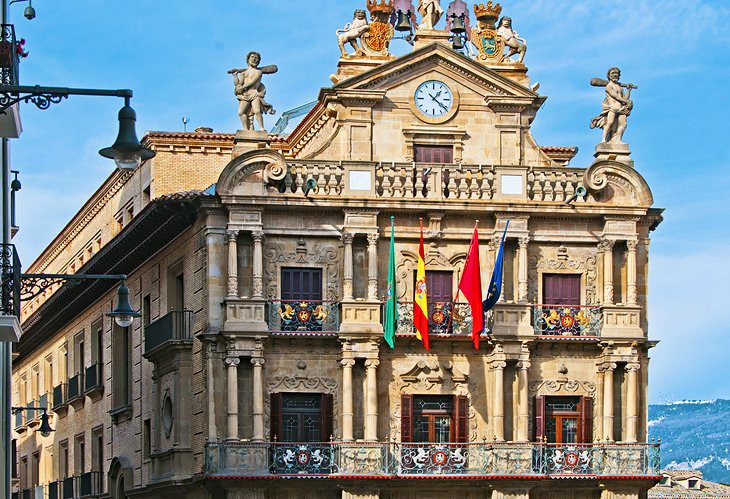
With colorful flags swaying from the facade, the Ayuntamiento is an impressive 17th-century Town Hall building. The Ayuntamiento is found northwest of the Plaza del Castillo on the Plaza Consistorial, a charming small square. The town hall was built on the site of an old moat, where three of the city's defense systems once met.
An emblematic monument of Pamplona, the building has an ornate Baroque facade of ochre sandstone crowned by lions bearing coats of arms and a trumpet-blowing allegorical figure of Fame.
To see the interior, tourists must request a guided tour by appointment.
Address: Plaza Consistorial, Pamplona
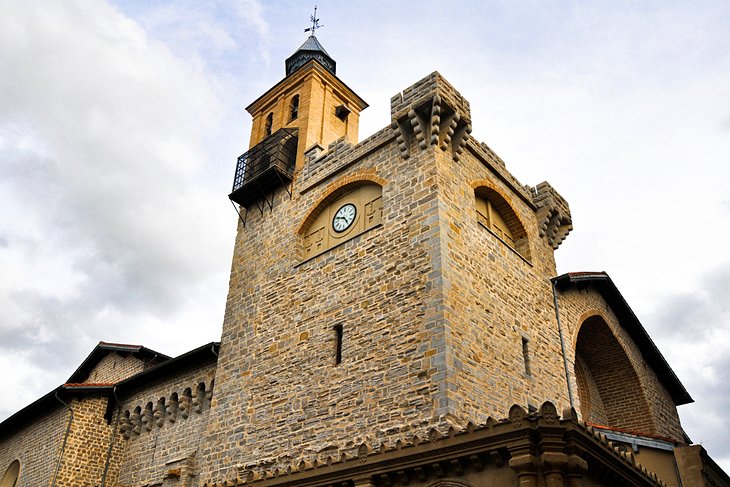
The Iglesia de San Nicolás is found along the Paseo de Sarasate, a broad avenue lined with monumental buildings. Built in the 12th century, the church was originally Romanesque in style. San Nicolás is the only church in Pamplona that has retained its original Romanesque structure (this ancient architecture is mainly seen on the exterior).
The fortress-like church historically served as a stronghold for the San Nicolás quarter but was largely destroyed during a Castilian invasion of the town. Most of the church's interior was renovated in Gothic style, with an inspiring vaulted nave and exquisite stained-glass windows.
The church is open to the public for worship and cultural visits every day. Mass is celebrated here daily.
Every year on February 3rd, the church celebrates the Fiesta de San Blas with a lively street market. At the market, locals and tourists can purchase special regional desserts: roscos , similar to doughnuts; caramelos , caramel candies; and piperropiles , spice cake made with cinnamon and almonds.
Address: 15 Calle de San Miguel, Pamplona
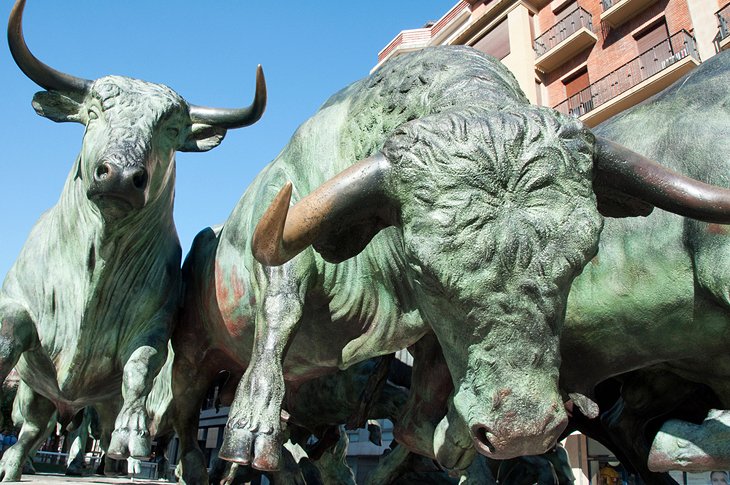
Near the Plaza de Toros is a striking contemporary sculpture called the Monumento al Encierro ( Monument of the Bull Run ) that illustrates a dramatic bullfight, the emblematic sport of Pamplona. Created by Bilbao sculptor Rafael Huerta Celaya in 1994, the monumental work was crafted from bronze.
The scene of nine bulls and 11 runners seems to magically freeze the moment in time while still capturing motion. Each figure is full of expression and emotion; viewers can easily relate to the anxiety and fear of the courageous runners trying to escape danger.
Address: Avenida Roncesvalles, Pamplona
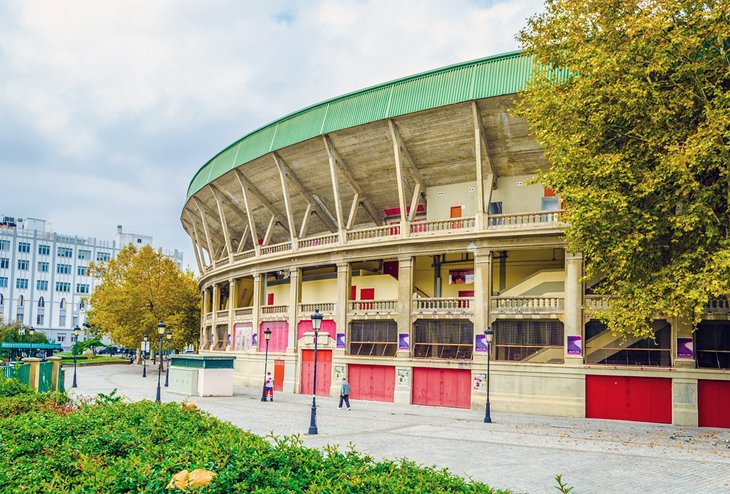
The Plaza de Toros is the Bullring of Pamplona , located on the Paseo de Hemingway, named in honor of Ernest Hemingway, who was a great aficionado of bullfighting. In front of the bullring is a monument that pays tribute to the famous author. Inaugurated in 1922, the Plaza de Toros has a capacity for 20,000 spectators.
During the Fiesta de San Fermín , the Plaza de Toros hosts bullfighting events.
Throughout the year, visitors can take a guided tour of the Plaza de Toros to see the bullfighting area and the corrals. The tour includes video projections of the Running of the Bulls (El Encierro) and the Fiesta de San Fermín. Guided tours are available daily.
Address: Paseo de Hemingway, Pamplona
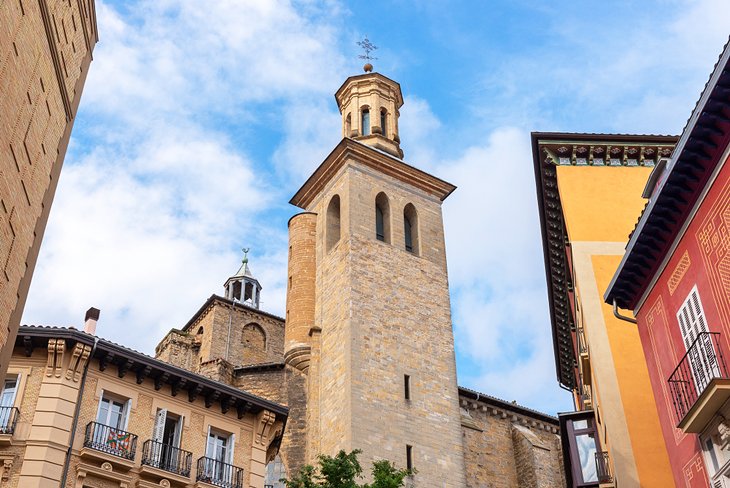
Just steps away from the Plaza Consistorial, this 13th-century monument is one of Pamplona's most noteworthy historic churches. The church towers represent the early Romanesque architecture, while the rest of the church exemplifies Gothic style. On the exterior, the north doorway is especially noteworthy.
The spacious vaulted interior features a marvelous retablo in the baptistery. The clock tower (the southern tower) is topped with a rooster weathervane, and the needles of the clock face mark the start of the Fiesta de San Fermín bull run (at 8am) each morning during the annual festival.
The Iglesia San Saturnino is open to the public for cultural visits and worship every day. Mass is celebrated here several times daily.
Address: 21 Calle Ansoleaga, Pamplona
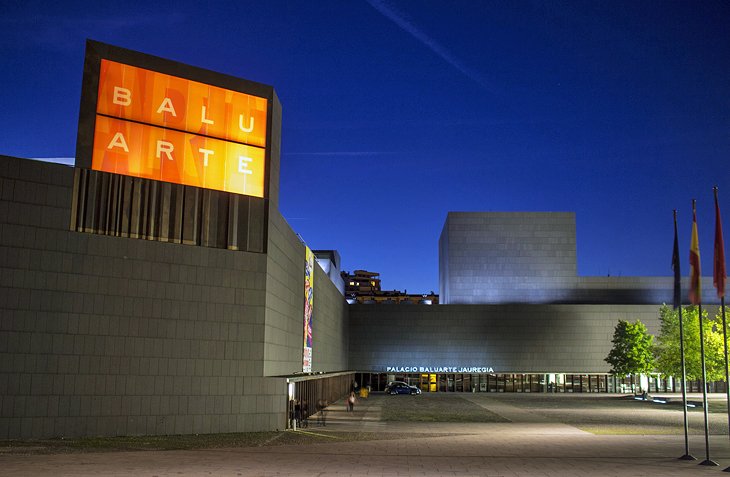
The Baluarte Conference Center and Auditorium is in the heart of Pamplona, between the Citadel and a bustling shopping district. Designed by the architect Patxi Mangado, the sleek, modern, granite-faced building hosts conferences and cultural events throughout the year.
The building has two auditoriums: the Main Auditorium (Symphony Hall), which stages music concerts, dance, classical ballet, opera, and theater performances, and the smaller Chamber Music Hall for smaller-scale events.
Visitors can choose to dine at the haute-cuisine restaurant or grab a more casual meal at the cafeteria with terrace seating on the plaza.
Address: Plaza del Baluarte, Pamplona
Official site: www.baluarte.com/eng/facilities-services/facilities
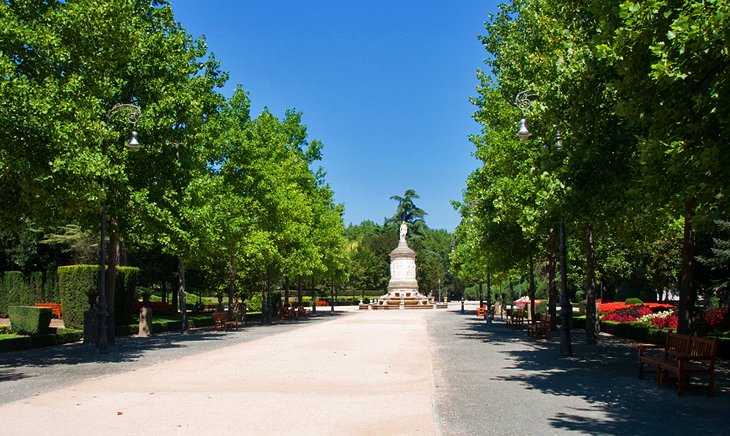
The first public park created in Pamplona (in 1830), the expansive Taconera Gardens cover 90,000 square meters. This beautiful green space near the ancient walls of the Casco Viejo has an old-world ambience.
The landscaping combines Romantic style and formal French elements reminiscent of the gardens at the Château de Versailles in France.
Visitors are delighted by the colorful flowerbeds and pleasant walkways lined by a variety of tall, leafy trees. Scattered throughout the park are nesting boxes for birds. There is also an open-air sculpture museum.
One of the highlights, especially for children, is the Mini Zoo , home to ducks, swans, peacocks, and deer. The ducks and swans glide through waters that fill a former moat.
The park's Café Vienés (Viennese-style café) is a favorite meeting place among local students and artists but also appeals to tourists seeking refreshments such as coffee and cake. This enchanting little café has garden patio seating at shaded tables.
Address: Calle del Bosquecillo, Pamplona
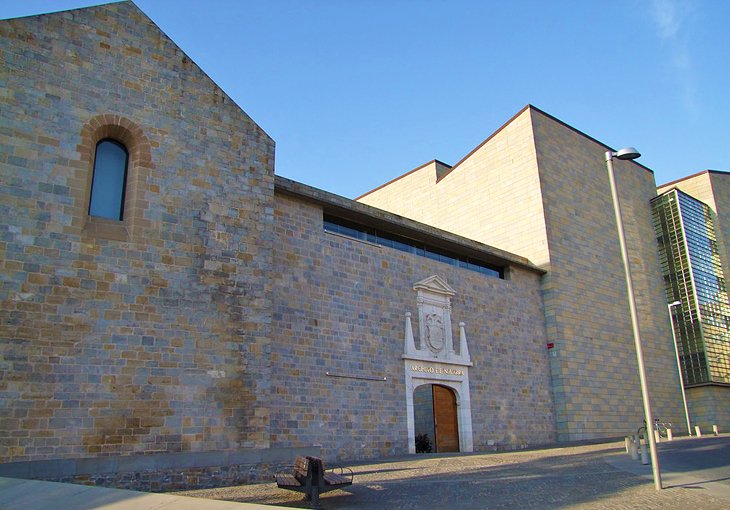
The Royal and General Archive of Navarra is housed on the site of the Palace of the Kings of Navarre where the monarchs lived. Built in the 12th century, the palace is one of the oldest buildings in Pamplona and once hosted illustrious guests, including the bishops of Pamplona.
Modern elements have been incorporated into the ancient building, which has retained its vaulted Gothic hall and a porticoed courtyard garden.
The archive is run by the Administration of Navarra, with the mission to preserve and share the documentary heritage of the region. Many historians and cultural organizations consult the archive for research purposes.
This site is open to the public Tuesday through Friday, as well as for limited hours on Saturday and Sunday. Admission is free. It's worth a look just to see the architecture of the historic palace.
Address: Calle Dos de Mayo, Pamplona
For sightseeing and old-word ambience, the Casco Viejo (otherwise known as the "La Navarrería") is the best place to stay in Pamplona. We recommend these highly rated hotels in the historic center of Pamplona, which are within easy walking distance of the city's top tourist attractions, including the cathedral, the Plaza de Toros, and the Plaza del Castillo.
Luxury Hotels :
- In a desirable location of the Casco Viejo on the Plaza del Castillo, the Gran Hotel La Perla is an exceptional five-star property that occupies an elegant 19th-century building. The sumptuous, spacious guest rooms are soundproofed to ensure a good night's sleep. Amenities include a restaurant, lounge, and room service.
- A short drive from Pamplona's historic center , the five-star Hotel Alma Pamplona offers sleek contemporary-style guest rooms and a spa with a wellness area, swimming pool, solarium, and sauna. Other amenities include a Michelin-starred gastronomic restaurant, a casual restaurant that serves traditional Navarrian cuisine, and a gourmet breakfast buffet.
Mid-Range Hotels :
- A good value in the Casco Viejo is the Maisonnave Hotel , which offers four-star contemporary-style accommodations, with a fitness center and a stylish tapas restaurant. Some of the guest rooms offer great views of the cityscape or the red-tiled rooftops of the city's historic buildings.
- Just steps away from the Plaza de Toros, the three-star Sercotel Leyre has contemporary-style guest rooms with updated bathrooms. This modern three-star hotel offers excellent amenities, including concierge services, a spacious lounge area, and a breakfast buffet.
Budget Hotels :
- It's difficult to find budget accommodations within the Casco Viejo of Pamplona. The three-star Sercotel Restaurante Hotel Europa near the Plaza de Toros is one of the few centrally located hotels that offers relatively affordable rates. The hotel provides cozy modern guest rooms, as well as a restaurant, lounge, concierge, and breakfast buffet.
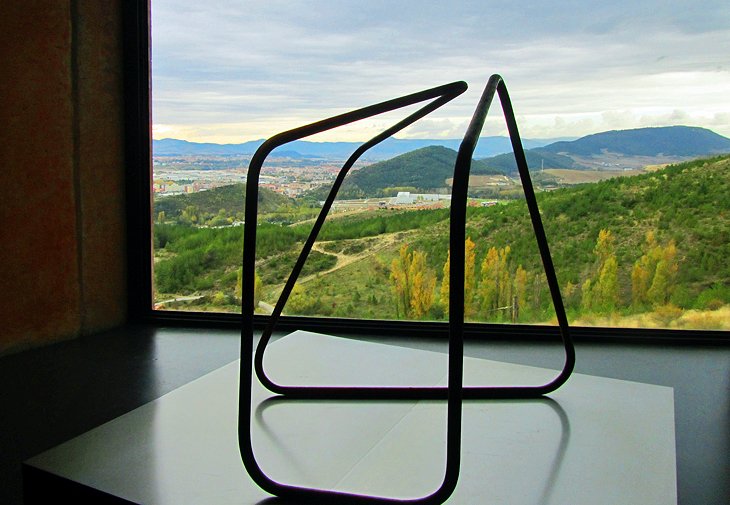
For art lovers, the Oteiza Museum is a worthwhile detour from Pamplona (only 10 kilometers away) in the idyllic rural surroundings of Alzuza. This large, modern exhibition space is dedicated to the renowned Basque sculptor and artist Jorge Oteiza, considered one of the most important sculptors of the 20th century. The collection displays thousands of sculptures, as well as an extensive collection of drawings and collages.
Address: 24 Calle de la Cuesta, Alzuza, Navarra
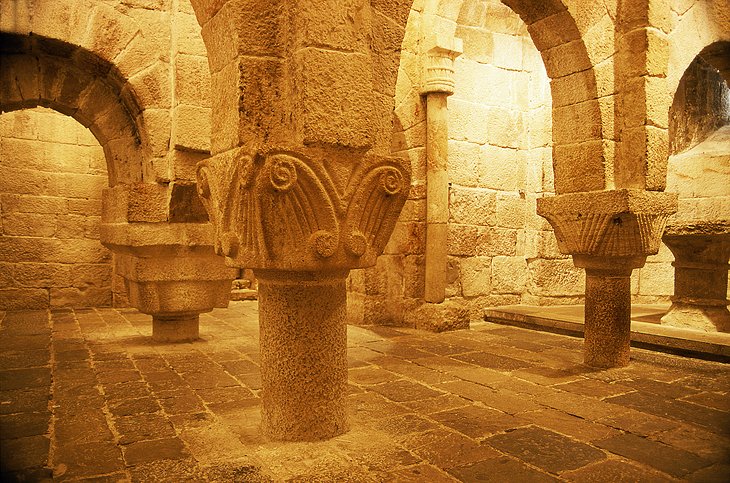
About a 30-minute drive (50 kilometers) from Pamplona, the serene Monastery of Leyre stands on a wooded hilltop of the Sierra de Leyre mountain range with commanding views of the surrounding landscape. Visitors will appreciate the tranquil escape in nature and spiritual inspiration.
The 11th-century monastery features a splendid Abbey Church (listed as a National Monument) with a Romanesque exterior and Gothic interior. The somber, unadorned crypt is the oldest part of the church and was an important burial place of the Kings of Navarre. Most of the monastery's other buildings date from the 17th and 18th centuries.
Guided tours (lasting 45 minutes) allow tourists to see the Abbey Church, learn about the monastery's history, and hear an organ recital. Canto Gregoriano ( Gregorian Chants ) are recited during the monastery's church services, which are open to the public.
The monastery has a small hotel, the Hospedería de Leyre , with 32 rooms and an excellent restaurant that serves local cuisine made from fresh ingredients.
Location: Monasterio de Leyre, Yesa, Navarra
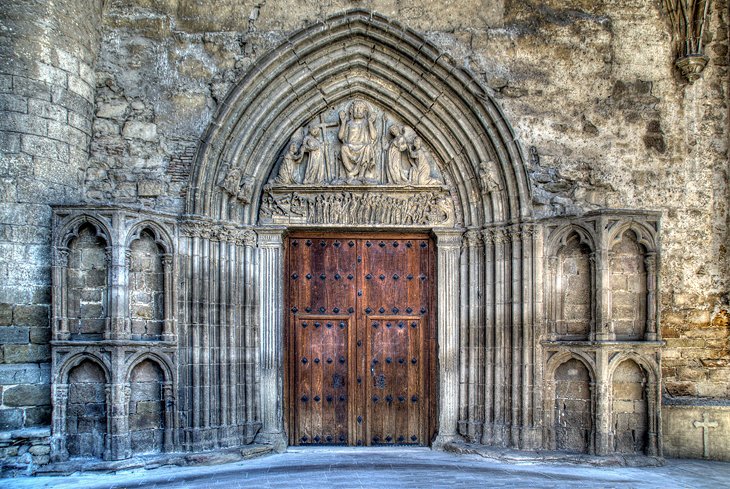
The little town of Sangüesa is nestled in a tranquil rural setting, about 45 kilometers southeast of Pamplona. In the 12th century, Alfonso el Batallador (King Alfonso I of Aragon, the "Battler") fortified the town to ensure its defense against invaders. In the 15th and 16th centuries, many aristocratic families built impressive mansions in the town.
One of the most beautiful mansions in Sangüesa is the 17th-century Palacio de Ongay-Vallesantoro featuring an elaborately detailed Churrigueresque facade. The palace now houses the Casa de Cultura (Cultural Center), which displays art installations.
The town also has an important Romanesque church, the Iglesia de Santiago , that was on the Way of Saint James pilgrimage trail to Santiago de Compostela . Dating to the 13th century, the Church of Santiago in Sangüesa is listed as a Monumento Histórico-Artístico (Historic Artistic Monument).
The Iglesia de Santiago is open to the public for visits (free of charge) daily. Mass is celebrated here every evening, as well as at 12 noon on Sundays.
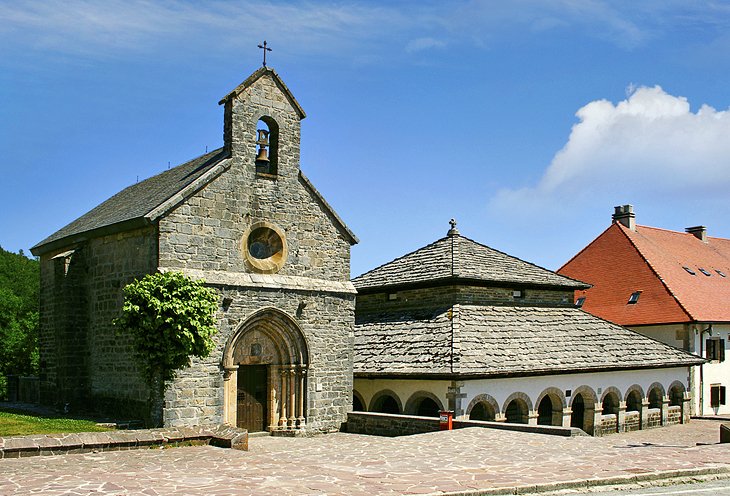
This medieval town was an important stop on the Way of Saint James route to Santiago de Compostela. Roncesvalles, just beyond the pass of the Burguete Valley (47 kilometers from Pamplona), was the most frequently traveled pilgrimage route through the Pyrenees Mountains.
The monastery and hostel of Roncesvalles were established to offer medieval pilgrims hospitality and spiritual sanctuary during their stop. Roncesvalles became one of the most famous establishments on the Camino de Santiago pilgrimage route.
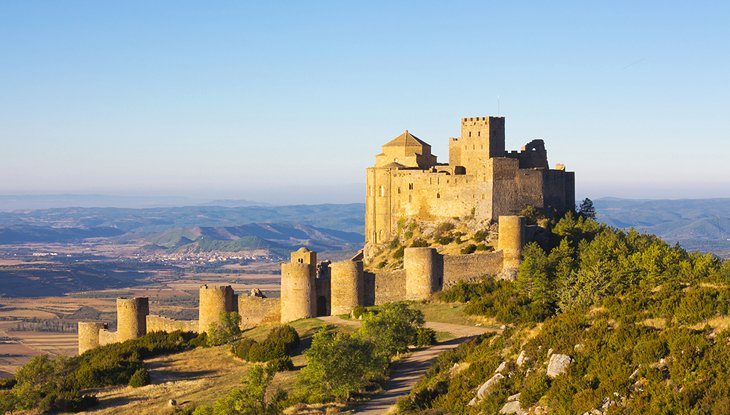
In the foothills of the Pyrenees Mountains, this picturesque little village (about 135 kilometers from Pamplona) offers a peaceful escape in the countryside. The main tourist attractions of this area are the nature sights, especially the Riglos and Agüero rock formations .
Hiking is a popular activity, as well as whitewater rafting on the Gállego River .
Nearby cultural attractions include the 11th-century Castillo de Loarre and the Colegiata de Bolea , a splendid Gothic church built in the 16th century.
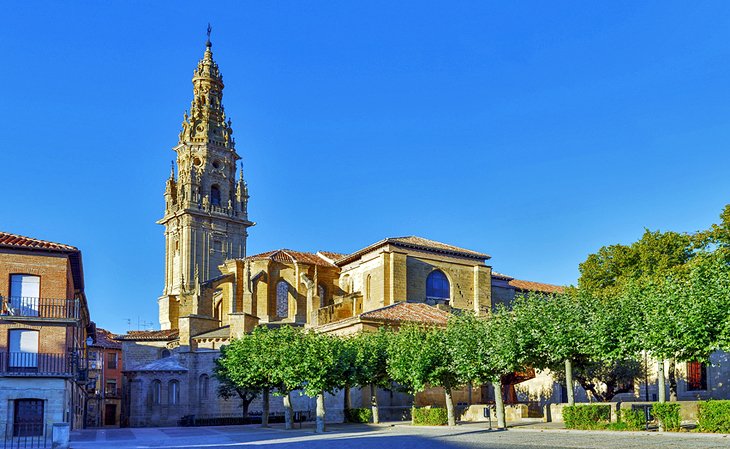
The little medieval town (about 130 kilometers from Pamplona) in the La Rioja region was an important stopping point for pilgrims traveling to Santiago de Compostela on the medieval Way of Saint James pilgrimage route.
Saint Dominique was a deeply spiritual hermit from the nearby village of Viloria who built the town's arched stone bridge, church, and a hostel. The saint also commissioned a stretch of paved road to ease the journey for pilgrims, giving the town its name: Saint Domingo de la Calzada ( Saint Dominique of the Causeway ).
The town has a magnificent Romanesque-Gothic cathedral, the Catedral de Santo Domingo de la Calzada , constructed in 1180 on the site of an earlier church built by Santo Domingo. The Baroque tower and facade date from the 18th century. While visiting the cathedral, tourists should be sure to see the 14th-century cloister and the 16th-century Plateresque choir stalls.
The cathedral is open to the public for visits every day; an admission fee is charged for entrance, which includes an audio-guide. Tourists can also opt to take a guided tour. Mass is celebrated at the cathedral several times daily, in the morning and in the evening.
More Related Articles on PlanetWare.com
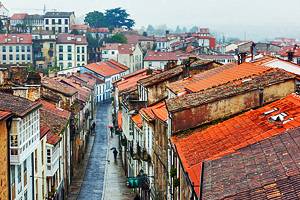
The Camino de Santiago : Capital of the historic kingdom of Navarra (and present-day province), Pamplona is found along the Camino de Santiago medieval pilgrimage route to Santiago de Compostela. Other important stops on this route are Burgos , renowned for its UNESCO-listed Gothic cathedral, and the city of León , which is filled with remarkable monuments of the 11th and 12th centuries.
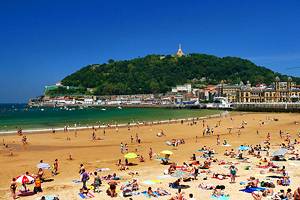
Spanish Basque Country: Favorite destinations in Spain's Basque Country include the seaside resort of San Sebastian (about a 90-minute drive), adored by tourists because of its gorgeous sandy beaches, quaint old town, and excellent tapas restaurants; and the cultured city of Bilbao (about a two-hour drive), home to the renowned Guggenheim Museum and several Michelin-starred gastronomic establishments.
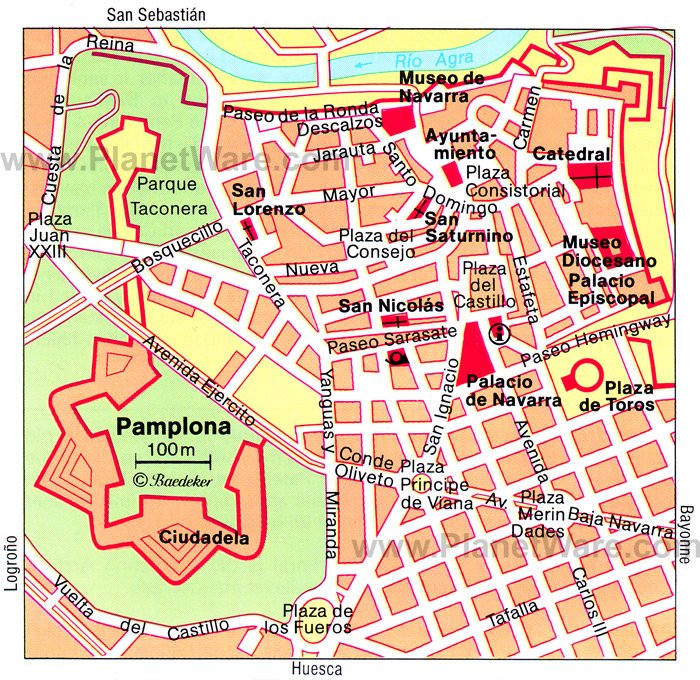
More on Spain

Must-see attractions in Pamplona

Museo de Navarra
Housed in a former medieval hospital, this superb museum has an eclectic collection of archaeological finds (including a number of fantastic Roman mosaics…

Catedral de Santa María
Pamplona’s cathedral stands on a rise just inside the city ramparts amid a dark thicket of narrow streets. The cathedral is a late-medieval Gothic gem…

The walls and bulwarks of the grand fortified citadel, the star-shaped Ciudadela, were built between 1571 and 1645 under the direction of King Felipe II…

Centro de Interpretación de las Fortificaciones de Pamplona
If these walls could talk. This excellent interpretation centre, located in the Fortín de San Bartolomé, explains the design and function of Pamplona's…
Monumento al Encierro
If you're not in town during the running of the bulls, you can get a dramatic sense of the action at this life-size bronze sculpture. Stretching 4m wide…

The Perfect One Day in Pamplona Itinerary
Published on March 11, 2024
by Neota Langley
Disclaimer: This article contains affiliate links. That means if you click a link and make a purchase, we may make a small commission. As an Amazon Associate we earn from qualifying purchases. For more information, see our privacy policy.

Whilst this city is famous for the annual San Fermín festival (also referred to as the running of the bulls), there is so much more to see and do when planning a one day in Pamplona itinerary.
The capital of the Navarra region in northern Spain, just one hour south of San Sebastian , the city of Pamplona is packed full of mediaeval charm a lovely old town, breathtaking natural surroundings and traditional Basque food and wine.
This underrated destination is the very definition of a hidden gem. Pamplona is the ideal day trip destination for those looking for an off-the-beaten-path city in Spain.
Table of Contents
How Many Days in Pamplona?
Pamplona is the perfect day trip from a Basque Country destination like Bilbao or San Sebastian , although if you had time to spare, you could easily spend several days exploring the city and its surroundings.
In one day, you’ll be able to get a real feel for Pamplona and visit all of the highlights. Discover the ancient past and see how it blends with the modern-day sophistication of the city. Bask in the sunshine at a local pintxos bar while watching the world go by.
One day gives you enough time to not feel rushed but if you did want to stay overnight and delve deeper, we have included some additional stops for your second day at the end of this itinerary.

Getting To & Around Pamplona
If you have a car for the duration of your trip to Spain, driving is the perfect way to reach the city. The drive is straightforward, within just over one hour south on the A-15, you will arrive in Pamplona.
You cannot drive into the city centre but there are several paid car parks on the outskirts where you can leave your car. You can browse car hire options here .
There are excellent public transport links between the cities of San Sebastian and Pamplona. The train is direct and affordable, taking around one hour. Even if you have a car, you may prefer to utilise the public transport network to remove the added cost of parking. You can check schedules here .
Alternatively, if you’re based in San Sebastian it is possible to take a full-day tour to visit Pamplona.
Pamplona is also the first Spanish city on the ‘French Way’ route of the world-famous pilgrimage, the ‘Camino de Santiago’.
Also known as the Way of St. James, this long-distance hike stretches for hundreds of miles, drawing pilgrims from around the world to traverse scenic landscapes and visit historic towns and cities on their journey to the shrine of St. James in Santiago de Compostela.
Once you have arrived in Pamplona, getting around is easy. The city centre is relatively compact, with most of the old town being pedestrianised. The best way to see the sights is to explore on foot, wander through the cobbled streets and out into the citadel.
If you think walking is too slow-paced, Pamplona is an incredibly bike-friendly city with dedicated bike lanes and a fleet of electric bikes available to hire from drop-off points across the city.

1-Day Pamplona Itinerary
Whether you are visiting on a Pamplona day trip from San Sebastian or are passing through on a longer Spanish road trip, you will never forget your time spent wandering around this beautiful city.
Citadel & Museum of Navarra
Our itinerary begins with a visit to the citadel and the ancient city walls. Located in the southwestern side of the city, the citadel was built in the 16th century as a military defence to protect the city from invaders.
Throughout Pamplona’s history, it has stood the test of time, seeing several battles and sieges across the centuries.
Now, the citadel and the gardens that surround it are free to visit. Stroll around the perfectly preserved ancient moats, towers, bastions and barracks of this national monument before wandering alongside the city walls, stretching for 5km around the old town.
If you are interested in learning more about the history of the Navarra, a short walk from the citadel you will find the Museum of Navarra. This converted hospital is home to a variety of artefacts, paintings, maps and mosaics. Entry to this museum is free and you can expect to spend between 1-1.5hrs wandering around the 4 floors.

Plaza del Castillo & Café Iruña
Encircled by elegant buildings adorned with picturesque balconies, hanging plants and colourful facades, this iconic square serves as the city’s main gathering place and social centre.
The beating heart of Pamplona, the Plaza del Castillo is always full of life. You’ll find the modern section of the city to the south, glass storefronts housing high street retailers. On the other side of the square, you can find the cobbled streets of the old town.
The square was originally built as a military parade ground but has evolved into the central hub of the city. At the centre of the square stands a charming bandstand, where live music performances and cultural events often take place.
One of the most popular cafes on the square is Café Iruña, a popular destination due to its inclusion in Hemingway’s novel, The Sun Also Rises .
Published in 1926, this novel follows a group of young British and American expatriates as they meander along the Camino de Santiago from Paris to Pamplona to watch the running of the bulls. This book was instrumental in putting Pamplona and the San Fermín festival on the international tourist map.
Ernest Hemingway was known to spend many hours writing in Café Iruña. They have even added a statue of him at the bar, making it a must-visit attraction for fans of the author.
Monumento al Encierro & Plaza de Toros
The next stop on our Pamplona itinerary is centred around the annual San Fermín festival. This week-long fiesta commemorates San Fermín, the city’s patron saint.
The celebrations kick off with the “Chupinazo,” a thrilling opening ceremony where a rocket is launched from the balcony of Pamplona’s Town Hall, signalling the start of festivities. The festival started as a local affair but following the publishing of The Sun Also Rises , it has become a world famous event.
Each morning at 8am, a group of seemingly unhinged souls participate in the iconic Running of the Bulls, sprinting away from a herd of charging bulls and steers. The course runs for 875m through the impossibly narrow streets of the city before ending in the bullring.
Beyond the adrenaline-fueled spectacle, the week-long San Fermín festival offers a range of cultural events, including traditional music, dance, and religious processions. The festival is controversial amongst animal rights activities and whilst not everyone agrees with the Spanish tradition, it is worth visiting the museum to learn about the history and develop your own opinion.
If you are not visiting Pamplona for the San Fermín festivities in July, you can still learn about the event and walk the ‘run’ through the centre of the old town. Start at the large bronze sculpture depicting the running of the bulls, Monumento al Encierro, before heading on to the Bullring – known as the Plaza de Toros.
There are several guided tours every day but if you miss them, you can still purchase a ticket and take an audio guide around the bullring and museum. The tour begins in the bullfighting arena, built in 1922. It is an impressive structure and can house up to 19,000 spectators.
From there, you continue on to the stables where the bulls are kept and a Bullfighter’s chapel. Along with costumes and artefacts from the bullfighters, you will hear audio from actual events and watch videos that give you an idea of what it is like to experience the sights and sounds of the true festivities.
Outside the bullfighting ring, you will see another Ernest Hemingway statue.

The Casco Viejo or Old Town of Pamplona is a truly enchanting place. Mediaeval cobbled streets lead to vibrant plazas, old buildings with vine-draped balconies and local artisan boutiques. It is so peaceful and beautiful that it’s almost impossible to imagine a herd of bulls charging down these tranquil streets.
You could easily lose yourself for hours in this rabbit warren of streets, shopping for souvenirs, grabbing a coffee and some churros and exploring the variety of stores. Wandering around this area is one of the best things to do in Pamplona.
Catedral de Santa María (Pamplona Cathedral)
On the edge of the historic town centre, just inside the city’s ramparts, you will find the Catedral de Santa María, which overlooks the Plazuela de San Jose. Dating back to the 15th century, its towering spires and intricate neoclassical façade make this late-mediaeval, gothic gem a worthwhile stop on your day trip to Pamplona.
Inside you will find a breathtaking Gothic cloister with detailed stonework, the 15th-century tomb of Carlos III of Navarra, stunning stained glass windows and ornate altarpieces. You can also climb up to the top of the bell tower for far reaching views across the city and out to the mountains on the horizon.
Entrance to the cathedral itself is free but to visit the cloisters and the museum, there is a small admission fee.
From the cathedral, take a short walk to reach the Mirador del Caballo Blanco in the Parque de Aranzadi. This is the best viewpoint in the city, overlooking the city walls, the Arga River and on a clear day, the mountains of the Navarran Pyrenees in the distance.
Alternatively, wander over to the Jardines de la Taconera and enjoy the tranquil surroundings in this lovely city park.

Pintxos Crawl – Calle San Nicolás
The evenings are when Pamplona really comes alive. The Basque tradition of a ‘Pintxos crawl’ is an absolute must when you are in this region.
Most bars serve just one type of Pintxos (small plates of local food, a little like tapas) and the idea is that you go from bar to bar, enjoying their speciality with a glass of wine or a ‘zurito’ which is a small beer – known as a caña elsewhere in Spain. Then, you move on to the next, repeating until you can no longer eat or drink any more.
The main street for Pintxos crawling in Pamplona is the Calle San Nicolás which can be found right in the centre of the old town. This is an unforgettable experience so if you have time, it’s well worth trying out the local culture for the evening.
Have More Time?
If you are lucky enough to have 2 days in Pamplona, there is plenty to see and do in the surrounding area. Whether you are an outdoor adventure enthusiast and want to explore more of the region’s natural beauty, delve deeper into Navarra’s culture or head to the nearby bustling capital of the Rioja region, Logroño.
Urbasa Andía Natural Park
The Urbasa-Andía Natural Park is located just one hour’s drive west of Pamplona in the Navarre region of northern Spain. It is a pristine wilderness area renowned for its rugged beauty and diverse ecosystems.
This natural park encompasses dramatic limestone plateaus, deep gorges, lush forests, and meandering rivers making it the ideal destination for outdoor enthusiasts. One of the park’s most striking features is the Urbasa plateau, expansive grasslands and towering cliffs, offering breathtaking panoramic views.
Here you may also find an array of wildflowers, orchids, eagles, vultures, and wild boar. This area is also a birdwatcher’s paradise, with the opportunity to spot rare species such as the Egyptian vulture and the Eurasian griffon.

Navarran Pyrenees
Pamplona is not too far from the Pyrenees mountain range that straddles the border between France and Spain. The Navarran Pyrenees form part of the Atlantic Pyrenees, taking up almost half of the northern section of the region.
Verdant valleys and rugged peaks, home to ancient ruins, cascading waterfalls, mediaeval churches and fortified castles.
One of the highlights in this region is the village of Zugarramurdi or ‘the village of witches’. Steeped in mystery and legend, this village is home to the Zugarramurdi cave, a witchcraft museum and the Urdazubi/Urdax caves.
If you are interested in learning about the area’s connection with magical legends, this area makes for a thrilling day trip.
Logroño
After just 1 hour by car or 1.5 hours by train, you can travel from Pamplona to the vibrant city of Logroño. The capital of the Rioja region, you would be correct to assume this is a wine enthusiast’s dream destination.
From here you could either opt to spend the day exploring the city or head out into the countryside to visit the local vineyards.
Logrono is also a must-visit destination if you are looking for the best Pintxos crawl experience in the whole of Spain. San Sebastian is by far the most popular Pintxos destination but Logroño is a true hidden gem, offering the most authentic Basque experience.

Where to Stay in Pamplona
Hotel Europa – A cosy 3-star hotel in the centre of Pamplona, it’s located within a few minutes from the Bullring. There are plenty of clean and bright rooms and a great buffet breakfast each morning.
Pamplona Catedral Hotel – This grand, modern hotel is perfect for those after a luxury stay in this Spanish city, There are countless spacious and chic rooms on offer, a restaurant, bar, and fitness centre on site, and amenities like breakfast and parking available.
Aloha Hostel Pamplona – This hostel is an excellent budget option. Situated in the city centre, there are lots of dorms and privates on offer along with great common areas and a good social atmosphere.
Not quite what you’re looking for? Click here to browse more Pamplona hotels!
Whether you are visiting for the San Fermín festival or prefer to wander the city streets in peace, spending one day in Pamplona is a delight, full of culture and natural beauty. It makes a great day out from a nearby city or, if you are on a road trip, you can spend several days exploring the region and all it has to offer.
Are you planning to visit Pamplona? Have any questions about this itinerary? Let us know in the comments!

Related Posts:

The Ultimate 5 to 7 Days in Basque Country Itinerary

Barcelona or Madrid: Which Spanish City to Visit?

How to Plan a Granada Day Trip from Malaga or Seville

About Neota Langley
Neota is a writer for The World Was Here First. Born and bred in Cornwall, she can usually be found with hiking boots on, ready to embark on an adventure. For the last 6 years, she has travelled throughout Europe in her self-built campervan with her trusty canine companion, Ivy. She loves exploring France, the Nordics and spending time in Alpine destinations.
Leave a Comment Cancel reply
- Pamplona Tourism – Things to Do in Pamplona
Overview of Pamplona, Spain
Pamplona certainly owes some of its fame to its adopted son, Ernest Hemingway, who spent a considerable amount of time in Navarra during the Spanish Civil War and was a big fan of the San Fermín Festival . Hemingway wrote about the festival and the “Running of the Bulls” (“Encierro” in Spanish) in his book, “The Sun Also Rises.”
The San Fermín Festival starts on July 6th and lasts for a week. During this time the city is flooded by more than 1,000,000 visitors and turns into one of the world’s largest fiestas. There is of course, the daily “Running of the Bulls,” where hundreds of people run in front of the bulls down a narrow stretch of the old town.
The bulls run lasts for just a few minutes before ending in the bullring. But the festival of San Fermín includes many more events and sights besides the bull related ones, such as parades, traditional Basque sports exhibitions and a nightly fireworks competition.
During the rest of the year, Pamplona or Iruña as it is known in Basque, is a pretty laid back city. There is a constant, steady flow of visitors, many of whom are pilgrims or hikers doing the Camino de Santiago (Route of St. James).
The city is very easy to navigate and almost every place of interest can be found within the well-preserved medieval city center and is within walking distance from the Plaza del Castillo (Castle Square).
San Fermin – Running of the Bulls
The legend states that San Fermín was the first bishop of Pamplona and baptized 40,000 pagans in three days. Celebrations in his honor have been taking place since before the 12 th century, but these were originally done the 10 th of October.
It was only in 1591 when, due to the weather inconveniences, the government of Pamplona and its bishop agreed to move the celebration to the 7 th of July.
On that date, fairs and running of bulls were already celebrated in Pamplona. By moving the date, the two separate celebrations were joined.
The San Fermín festival starts the 6 th of July at 12 pm with the “txupinazo” (a rocket fired from the City Hall balcony), which marks the official start of the festivity. During that week, Pamplona is flooded with party-goers of all over the world and becomes incredibly packed with everyone wearing a white t-shirt and a red handkerchief.

The most famous activity of the San Fermín is the running of the bulls (“encierro” in Spanish) which takes place every morning at 8 o’clock between the 7 th and the 14 th of July.
The runners are chased by six bulls for approximately 800 meters until reaching the bullring (“plaza de toros” in Spanish). This is a very dangerous activity and while some people train all year around preparing for it, others decide to join at the last moment, convinced by the amount of alcohol drank during the night (don’t be one of these!).
This makes the running even more dangerous and unfortunately 15 people have died doing it since 1924. Nevertheless, the running of the bulls is an extremely popular activity and something unique that is worth seeing at least once.
During San Fermín there is also a bullfight every evening in Pamplona’s bullring which is the second biggest of Spain and fourth biggest in the world. There are as well many more activities going on during that week such as concerts, rural sport competitions, Basque dance and music, nightly firework shows, etc.
Hotels in Pamplona
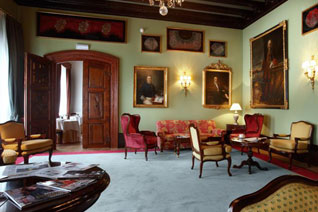
Search Hotels, Compare & Save
Pamplona's top things to do & see, casco viejo – old town.
Pamplona is proud to have a beautiful Old Town, which is definitely the nicest part of the city and also where visitors spend most of their time. The Old Town was once surrounded by a defensive wall and some sections of it can still be seen today.
The stone-paved streets of the Old Town are mainly for pedestrians and wind their way through the historical heart of the city, between medieval churches, palaces and, of course, plenty of bars and restaurants.
Castle Square
Throughout the centuries, the Castle Square has been witness of all types of events such as markets, concerts, celebrations, etc. For example, from the end of the 14th century until 1844, it was used as the bullring of the city.
When Ernest Hemingway was in Pamplona, he of course spent a lot time in the Plaza del Castillo. Some of his favorites at the square were the bar Txoko, the Hotel La Perla and the Café Iruña. A statue of Hemingway can be found at the Café Iruña.
Cathedral of Santa Maria la Real
Located in Pamplona’s Old Town, the Santa Maria Cathedral is probably the most important monument of the city and is definitely the one that contains the largest amount of artistic and historical treasures.
The cathedral is actually part of the Cathedral Museum. Inside, not only do visitors have access to the more common sections of any cathedral such as church, cloister and sacristy, but also to the cillería, refectory, chapter house, kitchen and bedrooms.
While the spaces that can be seen today in the museum were built in different periods of time, the majority of them were erected during the 14 th and 15 th centuries in the same place where originally a Roman temple and the Roman city of Pompaelo were located.
The building’s neoclassical western façade was completed more recently in the 18 th century. It is contrasted by the interior which was built in gothic style.
In front of the cathedral’s presbytery, stands the mausoleum of King Charles III and his wife. King Charles III is very important in Pamplona’s history because he was responsible for the city’s unification in 1423.
Underneath the mausoleum, there is a crypt with the remains of all the kings of the Kingdom of Navarre since 1134. Unfortunately, this crypt is not open to the public.
The cloister was built in gothic style between 1286 and 1472 and is considered to be the best preserved cloister of the 14 th century. Another very interesting room in the museum is the kitchen which was completely built of stone and has one huge chimney in each corner of the room. It is one of the only three existing gothic kitchens in Europe.
Even if you are not into churches, if you are going to visit a museum in Pamplona, this should be the one.
Casa Consistorial (City Hall)
King Charles III ordered the construction of the city hall in 1423. It was built in the center of the town where the three neighborhoods of the three ethnic groups met so that it could act as a symbol of peace. Since then, the seat of municipal government has been located at that same place.
By the middle of the 18 th century, the city hall building was a mere ruin and, in 1752, it was completely demolished to be rebuilt from scratch. The new construction became one of the most outstanding examples of baroque civil architecture in the city.
However, in 1951, the building was torn down again, but this time the façade was preserved. While the lower part of the façade that we see today and all other decoration have a baroque style, the figures that adorn the top of the building are neoclassical.
Navarre Museum
The Navarre Museum is a public museum from the Government of Navarre that houses an archeological and artistic collection related to Navarre and its history. It is one of the main museums of the city.
Although it originally opened its doors in 1910, the Navarre Museum has been housed in the current location in Pamplona’s Old Town since 1956.
The building where the museum is located dates back to the 16 th century and it first functioned as a hospital (the hospital of Nuestra Señora de la Misericordia). Currently, however, only the façade and chapel are original.
The collection of the Navarre Museum is comprised of pieces from prehistoric times and continues until the 20 th century. Apart from some Roman artifacts and mosaics, the other highlight of the collection is an impressive portrait of the Marquis of San Adrián made by Francisco Goya.
The Navarre Museum is a very interesting museum in a very interesting location that sadly seems to be undervalued. If you have the time, we recommend to check it out.
Medieval City Wall & Interpretation Center
In its early days, Pamplona was a fortified town encompassed by a wall. Although much of that wall was demolished when the city expanded in 1915, some of its sections still remain today.
For those interested in learning more about Pamplona and its wall, it is possible to visit the Center of Interpretation of the Fortifications. It is located in the "Fortín de San Bartolomé,” where the streets Arrieta and Aralar meet, next to the bullring.
Citadel & Vuelta del Castillo Park
The citadel and the Vuelta del Castillo Park that surround it, form the biggest and most important green area of Pamplona.
The citadel was built by order of Philip II of Spain in 1571 as part of the general strengthening of the city’s fortifications. It was designed in pentagonal shape to be able to combat every angle of attack. The citadel is now considered the best example of military architecture in Spanish renaissance style.
The citadel was used by the military until 1964, and afterwards was turned into a park. Today, the citadel as well as the green area that surrounds it, is frequented by locals of all ages.
Apart from people walking and practicing sports, the buildings that were left from the military are now used as art and cultural exhibition centers. Among those buildings are the Magazine (Polvorín) which is the oldest building of the complex, the Oven (horno) where bread was baked and the Weapons Building (Sala de Armas) which was originally the artillery warehouse.
There are also several sculptures spread throughout the park from artists such as Jorge Oteiza and Faustino Aizkorbe.
Taconera Park
Dating back to 1830, the Taconera Park is the oldest and finest park of Pamplona. Its gardens are nicely taken care of and feature colorful floral arrangements.
The perfect entry point to the Taconera Park is the Saint Nicolas Gate, which is a beautiful baroque recreation of a triumphal arch. Originally, it was one of the six entry gates into the walled city. Some parts of that original wall can also be found within the park.
There is also a small zoological park in the lower part of Taconera Park, next to the moats. The zoological area is home to deer, ducks, rabbits, etc.
Saint Lawrence Church
The main highlight of the church is the Saint Fermin chapel, a neoclassical style chapel where the Saint Fermin figure is located. The figure dates back to the 15th century and is made of wood and silver. Saint Fermin is also locally known as the “morenico” (the “little tanned one”) because his face has a dark complexion.
The figure of Saint Fermin is kept at the Saint Lawrence Church for the entire year and only leaves the building the 7th of July, the day of the Saint Fermin festivity, when it is taken in procession through the streets of Pamplona’s Old Town.

Get In & Around
In Pamplona, all touristic attractions are within walking distance and concentrated in the Old Town, so you will probably not need any type of transportation.
However, it may be of interest to know that, while there isn’t a metro or tram in Pamplona, there are 25 bus lines circulating around the city during the day (10 buses at night).
Pamplona is also trying to become more bike friendly and during the past few years, more and more bike paths have been built. The government offers a bike rental service known as nbici.
If you want to rent a bike for longer periods of time or want to take it out of the city, such as for use on the Camino de Santiago (Route of St. James), another bike rental option is offered by Mundoraintxe.
Arriving to Pamplona
PLANE – Pamplona has its own airport, located 6km outside of the city. It only offers flights to Madrid and Barcelona (operated by Air Nostrum).
The airport of Biarritz is 90 minutes away. There is one daily bus operated by the company ALSA and the trip takes 1 hour and 50 minutes. The airport of Bilbao is about two hours away but there aren’t any direct buses.
CAR – Pamplona is connected by the highway A-15 to San Sebastián (83 km) and by a combination of the highways A-1 and A-10 to Vitoria (97 km).
From Pamplona, it takes about 4 hours to drive to Madrid or Barcelona.
Car Rental – Search, Compare & Save
BUS – The bus station of Pamplona is located at the street Yanguas y Miranda 2, a couple of minutes walk away from the Old Town. It is a modern underground station that offers connections to a lot of the villages and towns of the surroundings as well as to the main cities of the country. For example, there are multiple daily connections to Madrid, Barcelona, San Sebastian, Bilbao, Vitoria, etc.
During summer, the company EDSA also offers a bus that communicates Pamplona with Hendaye , Saint Jean de Luz , Bidart, Biarritz and Bayonne .

TRAIN – The train station of Pamplona is located about 1.5 km northwest from the city’s Old Town, at the Station Square. The local buses 7 and 9 stop at the train station.
There are several daily trains to Madrid, Barcelona, San Sebastian, Vitoria and many other Spanish cities.
Other Places of Interest in the Surroundings
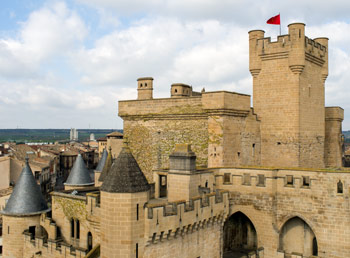
Map – Things to Do in Pamplona
Is Eusko Guide helping you plan your trip?
If so, please consider booking your hotel through the links to booking.com found on our website or use the following link: https://www.booking.com/?aid=360107
That way, you get the best rates on your hotels and at the same time, it helps us to continue contributing to this site. Everyone wins!
11 Very Best Things To Do In Pamplona

Pamplona, Spain is the birthplace of Basque culture. It is also one of the most visited places in the Basque world. What it is probably most famous for globally is the Running of the Bulls . Don’t let that fool you. There is so much more to see and do in Pamplona than just that. Here are the very best things to do in Pamplona, Spain.
What to do in Pamplona
Wander the streets of casco antiquo.
The Old Town of Pamplona, known as Casco Antiquo. Besides the narrow streets and fascinating architecture you will discover many interesting shops. You can find anything from bakeries to vinyl records. Furthermore, it has souvenir shops, museums, markets, restaurants and cultural centers.

It is the perfect place to “get lost.” Immerse yourself in the Basque experience. Enjoying Casco Antiguo is most fulfilling by lazily strolling around Above all, take your time, window shop and savour the tranquil pace of life here.
Plaza del Castillo
Plaza del Castillo is at the center of many events that happen in Pamplona. Locals often refer to the plaza as the “living room” of the city. Furthermore, this large plaza is usually bustling with locals and tourists living their best life.
Plaza del Castillo which translates to Castle Plaza once housed such a fortress. Although the castle no longer exists, the name has lived on. The plaza took its current form in the 1800s.

A large bandstand is in the center of the plaza. This focal point plays host to a variety of concerts and events. The Palacio de Diputacion, which is a government building, is located on the south side of the square. Without a doubt, it is definitely worth admiring.
Plaza del Castillo has a nice variety of restaurants and cafes that offer pintxos , paella and other traditional Spanish food. Most of these places to eat have patios so you can enjoy the square while enjoying your meal.
Cafe Iruna is an institution. Undoubtably, it the most famous restaurant and cafe in Pamplona. Opened in 1888, it is located along the north wall of Plaza del Castillo in Casco Antiguo.
Why is it famous?

Cafe Iruna regularly played host to Ernest Hemmingway. Famously, he used this cafe as a place of inspiration. It is said that he wrote part of at least five different books here. While you are there make sure to see the bust honouring him inside the cafe.
Walk the Ancient Walls
The walls of Old Pamplona are incredible and are absolutely a must see while in Pamplona. This ancient engineering feat will not let you down. These walls of fortification are more than 5 km long. Construction of the walls began during the reign of the Kingdom of Navarra in the 1400s.

The views from atop the walls are amazing. You can see a long distance over the new city below and off towards the Pyrenees Mountains.
Portal Francia is the only entrance to the old city that is still intact in its original location. It can be found at the north end down a steep pathway.
Taconera Park
Taconera Park might be the most relaxing and mystical location in Pamplona. The botanical gardens provide a romantic atmosphere while the wide pathways allow for you to enjoy your company without feeling cramped.
One section of the park acts as a wildlife reserve and allows you to feel more in nature. A variety of birds laze about while the deer prance back and forth though their section of the park.

The Taconera Park now showcases two ancient portals from the old city. These portals, also known as gates, have been relocated to the park and are named the Taconera Gate and the San Nicolás Gate. Visitors can find these historical artifacts at the southern end of the park.
The citadel is a massive fortress that you must see. Literally built to fortify and protect the city of Pamplona from invaders, its walls and footprint are massive.

You can walk around the exterior of it and see the different walls, ditches and embankments. Imagine how difficult it must have felt for those who wanted to invade when looking upon such methodical fortification.
The interior of the Citadel is free to enter as it is now a public park. There are a few historical buildings including the old munitions building and ammunition dump.
Yamaguchi Park
The city of Pamplona has many beautiful parks and attractions but none of them are like Yamaguchi Park . This Japanese inspired park is expansive and offers many relaxing elements along with over 1,000 different species of vegetation.

The botanical gardens, pond with center fountain and the Galaxy Garden are all worth taking in. There is also a planetarium on site which adds a completely different experience to an already entertaining afternoon.
The Pamplona City Hall is a beautiful building built in the 17th century. The architecture is in the baroque fashion. Atop the building stand two figures that watch over the city.

Next to the City Hall is a part of the fence used during San Fermin. Just around the corner from the City Hall is the famous corner during the running of the bulls.
San Fermin is a week-long festival that runs from July 7-14. It is the most famous event in Pamplona and Navarre as a whole. Festivities kick off with the launch of a single firework. This event is known as Chupinazo.
The next morning is the running of the bulls. Six bulls and six steer chase hundreds of runners that attempt to make it to the end of the 825 meter race untouched.

The race takes roughly 3 minutes and ends at the Pamplona bullring. Festivities and celebrations continue throughout the rest of the week.
Pamplona Cathedral
The Pamplona Cathedral formally known as Santa María de la Asunción is the largest cathedral in Pamplona.

This 15th century gothic cathedral is amazing to see inside and out. This cathedral is where coronations of Basque kings would take place.
Monumento al Encierro
The Monumento al Encierro is located on Calle Estafeta. It is just outside of Casco Antiguo, the old town of Pamplona.
The statue itself is a monument to the running of the bulls. It shows several bulls charging through the street angry and possessed.

The competitors dart frantically in an attempt to evade their opponents. Some participants narrowly avoiding being crushed underfoot.
Map Of The Very Best Things To Do In Pamplona
Pamplona is steeped in rich Basque culture. Its historical importance cannot be understated. Whether you’re a first-time visitor or a returning traveler, Pamplona is sure to offer a wide range of entertainment options to keep you engaged and entertained.
- The Top 10 Things To...
The Best Things to Do and See in Pamplona

Pamplona is both blessed and plagued by its status as the world’s bull running nexus. In the last few years the local government and the media have tried to draw attention to the other, no less important, aspects of the Navarrese capital’s cultural identity. One of Spain’s greenest cities and a former bastion of the Roman Empire , Pamplona is just as much worth a visit during the remaining fifty weeks of the year for its history and modern art museums, its open recreational spaces and its glorious religious monuments.
Plaza del castillo.
Natural Feature
The people of Pamplona affectionately refer to the main square as their living room ( el cuarto de estar ), and it is indeed the epicenter of social life in this Basque city. Historically significant as a venue for military parades, political demonstrations and even bullfights until 1843, locals while away the hours in its cafés, the most famous of which is Café Iruña, where Ernest Hemingway supposedly spent his time writing the iconic The Sun Also Rises, in which much of Pamplona’s cityscape is immortalized in prose.


Guided tour of the Bardenas Reales of Navarre by 4x4
This private 4×4 tour of Bardenas Reales allows you to explore the unique semi-desert landscape of this natural park in Spain. The trip includes visits to the park’s most iconic spots, with opportunities for stunning photography and a guided explanation of the area’s geological formations.
Museo Universidad de Navarra
Pamplona’s latest artistic project , which has been compared to the Guggenheim in Bilbao, has global dimensions. The driving force behind its collection is the daughter of a Spanish impresario, María Josefa Huarte, who in 2008 made a generous donation which included paintings by Picasso and Kandinsky. Meanwhile the University of Navarra contributed rare photographic material from its archive chronicling artists from the 19th century. And as if that wasn’t enough, then consider that the building itself was formed by the shaping hand of acclaimed Spanish architect Rafael Moneo!
In the second week of July every year, the Spanish media turns its entire attention to Pamplona to cover the controversial, but exhilarating festival of San Fermín . Spectators rent out flats with balconies lining the Calle de la Estafeta for the best vantage point, while the more daring of festival goers participate in the running of the bulls—between the town hall where the crowd initially gathers and the bull ring itself—the third largest of its kind in the world. People typically dress for the occasion in white with red handkerchiefs around their necks, and after the adrenaline rush subsides, revelers continue the celebrations on the streets of Pamplona well into the night!
Private City Tour Pamplona
Discover Pamplona with a private guided tour, which covers the city’s main attractions including the historical center, the famous bull-running route, and significant cultural landmarks. This tour offers a personalized experience with detailed insights into the history and culture of Pamplona.

Become a Culture Tripper!
Sign up to our newsletter to save up to $1,200 on our unique trips..
See privacy policy .
The city walls
Pamplona has been a strategic enclave in the north of Spain since Roman times, and even though the Spanish army had to knock down sections of the fortress due to overpopulation within its city walls, the majority of these bulwarks still stand proud and magnificent. On summer evenings visitors can enjoy reenactments of battle scenes and concerts which seamlessly integrate these structures into their performances, while those who wish to explore the role of the city’s foundations through the ages may visit the old Fortín de San Bartolomé .
The Riverside Park
Spanning a whopping total of nearly a million square meters, Pamplona’s Riverside Park is the lung of this great city. Leaving behind the stone enclosure of the ancient city walls, you can enjoy a leisurely walk in the outdoors along the 17 kilometers of pathway meandering the banks of the Arga, Elorz and Sadar rivers. It isn’t unusual to spot the odd rower or fisherman along the way as you follow one of several routes which take walkers across bridges and into the city’s tranquil countryside.
Planetarium
For over twenty years Pamplona’s state-of-the-art planetarium, built in 1993 and set in the Yamaguchi Park, has wowed its 200,000 annual visitors. The origins of the universe as well as the latest discoveries in the field of astronomy are the subject of the numerous expositions projected up onto the impressive dome of the Tornamira Hall, which measures in at 20 meters in diameter—making it one of the largest of its kind in the world! A perfect all-weather activity for people of all ages, particularly those interested in the sciences.
Museo Oteiza (Alzuza)
Around 10 kilometers from Pamplona in the town of Alzuza is a memorial museum which pays homage to the work of Jorge Oteiza. The much revered Basque sculptor donated the collection housed within the museum , which was designed to be an extension of Oteiza’s original workshop. The most noteworthy exhibits are those which form part of the series that won him the Grand Prix for Sculpture at the Biennial in Sao Paulo . What’s more, the avant-garde red-panel building of this museum rises on the southern slope of Alzuza, boasting a gorgeous view over Pamplona city in the distance.
Camino de Santiago
Pilgrims walking the French Way on the Camino de Santiago will inevitably pass through Pamplona, which is the first major city on the Spanish side of the border and a popular stop-off for weary travelers. You don’t have to be carrying a backpack to follow in the footsteps of the pilgrims, whose route through Pamplona is lined with monuments of religious significance. After starting at the Magdalena Bridge with a stone cross (or cruceiro ) bearing an image of St. James, the old city is entered via the Portal de Francia. Pilgrims normally collect their stamps from the Cathedral before continuing on through the medieval city and out through the Portal de San Nicolás.
La Ciudadela and Parque de la Vuelta del Castillo
In the western part of the city centre lies the Ciudadela, nestled within the Casco Antiguo and built in the 16th and 17th centuries as a means of protection against incursions by neighboring France. Much of its distinctive pentagonal shape has been preserved despite two of the sides being knocked down to make room for the Avenida del Ejército. Outside the perimeter of the walls is the Parque de la Vuelta del Castillo, a preferred place for locals to view the fireworks during the festival of its patron saint, San Fermín, or else go for a run or casual stroll on a nice afternoon.
Catedral de Santa María la Real
The extensive period over which this one was built—over 150 years during the 14th and 15th centuries—explains the variety of architectural influences that can be seen, from the neoclassical facade to the Gothic cloister and the interior Renaissance motifs. The cathedral honors the monarchs of the former kingdom of Navarre, many of whom are interred in the crypt underneath the temple, whilst in the Diocesan museum, visitors will find a stunning collection of religious artifacts from churches that used to exist in the region.
Full Day Tasting The Unknown Rioja Wine Region
This tour takes you on a journey through the renowned Rioja wine region, including visits to local wineries, wine tastings, and an exploration of the picturesque vineyards. It provides an intimate look into wine production and the chance to taste some of the region’s finest wines.

14 Gorgeous Beaches in Andalusia You Won't Regret Visiting

The 10 Best Things To See And Do In Albaicín, Granada

How to Spend the Perfect 48 Hours in Ronda

The 11 Most Romantic Cities in Spain

The 20 Best Things to See and Do in Spain

Must-Visit Attractions in Spain’s Sierra Nevada

The 7 Best Beaches to Visit in Spain

A Visual Guide To Barcelona's Street Art

The Most Picturesque Towns and Villages in Galicia

The 12 Best Things to Do in Murcia, Spain

Things to See and Do in Guernica, Spain
Culture Trip Summer Sale
Save up to $1,200 on our unique small-group trips! Limited spots.

- Post ID: 386677
- Sponsored? No
- View Payload
Editor's Choice
- Latest Articles
- How to Move Out of the U.S.
- Daily e-Letter
- All Destinations
- Best Places to Retire
- Our Experts
- Testimonials
- Real Estate
Pamplona, Spain
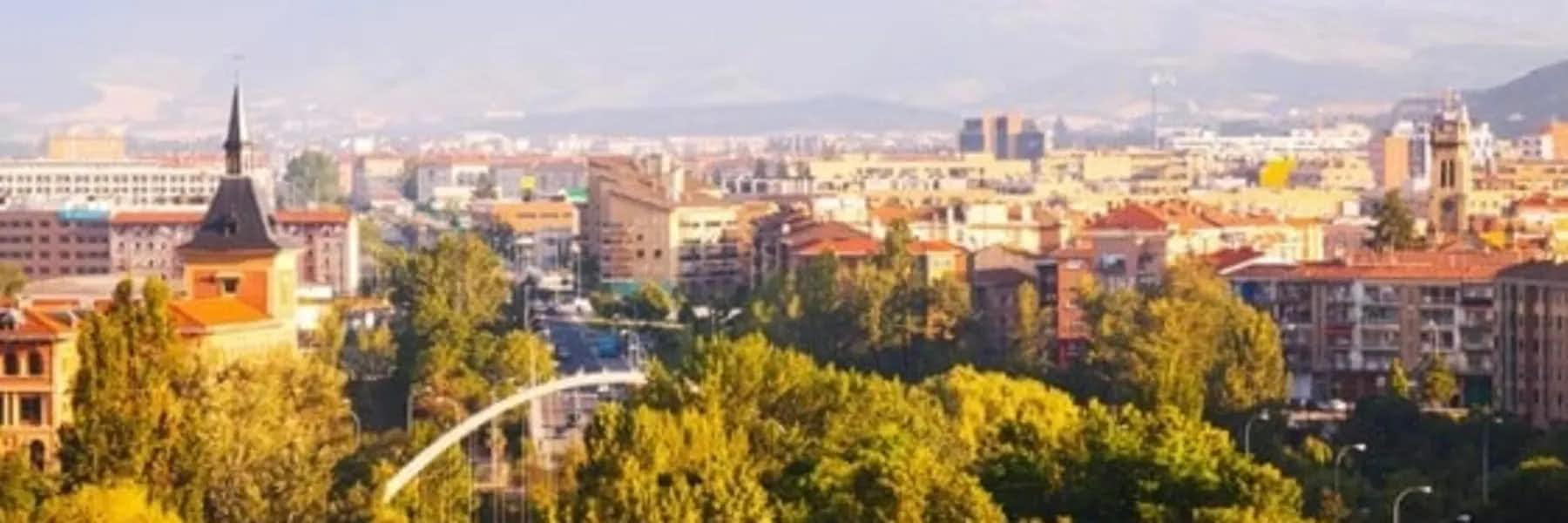
Pamplona, Spain - The Best Things To Do and Reasons To Visit The City
By Sally Pederson
Aside from popular cities like Barcelona or Madrid , another place worth visiting in Spain is Pamplona. There is so much to explore in this city apart from it being the world's bull-running nexus. This town, full of tradition and history, is the capital of Spain's Kingdom of Navarre. It is ideally located in between Aragón and the Basque Country. If you head south, you can quickly go to the La Rioja wine region. It's not just a perfect base to explore the nearby destinations, but Pamplona itself is a beautiful city.
Like other cities in Spain , Pamplona has gone through several dominations. It was in 1000 to 1035 during the reign of Sancho III when the city was made the capital of Navarre. By 1571, Pamplona became the most strongly fortified town of the north. The second half of the 20th century was the beginning of Pamplona's demographic, industrial, and economic growth. Eventually, Pamplona became known for its ancient crafts of sandals, wineskin, rope, and pottery making. The city's primary source of income comes from the manufacturing of metal, paper, kitchenware, liquor, chemicals, and the milling of sugar and flour. Furthermore, Pamplona became a vital center for communication between Spain and France .
In Pamplona, the climate is slightly continental. The coldest month is January, where the average temperature can drop to 41 F. Meanwhile, the hottest month is August, with the average temperature around a manageable 71 F. Spring and autumn are considered the best time to visit Pamplona as the temperature is ideal for outdoor activities. Travelers also flock to the city during summer, especially during the San Fermin Festival in July. Records show that there are over one million tourists that join this festival every year. So, if you don't like crowds, you will want to avoid the city during this time.
There is much more to Pamplona aside from the crazy San Fermin Festival. The major epicenter of Pamplona is Plaza del Castillo. It has been the venue of military parades and stage bullfights for centuries. Today, people here go to watch concerts or have a good time with friends and family at cafes and restaurants.
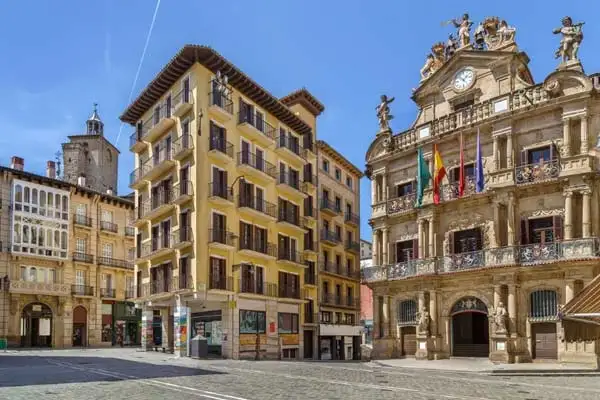
There is a wide array of museums to visit in this town. If you're interested in ancient art pieces, go to the Museo Universidad de Navarra or the Oteiza Museum. Pamplonetario is the perfect venue for astronomy enthusiasts. The fortress and walls of Pamplona may not be a typical museum, but a tour around this area will transport you to the city's rich historical past.
Pamplona is one of Spain's greenest cities ensuring nature lovers a pleasurable time. The Riverside Park and the Yamaguchi Parque are ideal places for a tranquil, leisurely walk. In Vuelta del Castillo Park, you can visit La Ciudadela and discover why it's the most impressive fortress in Spain. Don't forget to drop by the Taconera Gardens, the oldest, yet one of the most beautiful, parks in Pamplona.
A visit to Pamplona wouldn't be complete without sampling authentic Spanish cuisines. You can't leave Pamplona without trying out a lamb stew called cordero al chilindrón and a white bean dish called pochas estofadas. People in this town not only let the bulls run during the festival, but they eat them too! Have a taste of their traditional bull stew called estofado de toro.
In the southwest part of Pamplona is the stunning wine region La Rioja. Don't miss the chance to visit wineries in this area to learn how wines are made and, of course, taste them. Pacharán, a bright red digestif flavored with sloe fruits, is Navarre's signature liqueur.
Get Your Free Spain Report Today!
Learn more about Spain and other countries in our free daily postcard e-letter. Simply enter your email address below and we'll also send you a FREE REPORT — Live the Good Life in Sunny, Affordable Spain.
By submitting your email address, you will receive a free subscription to IL Postcards and special offers from International Living and our affiliates. You can unsubscribe at any time, and we encourage you to read more about our Privacy Policy .
10 Things to Do in Pamplona
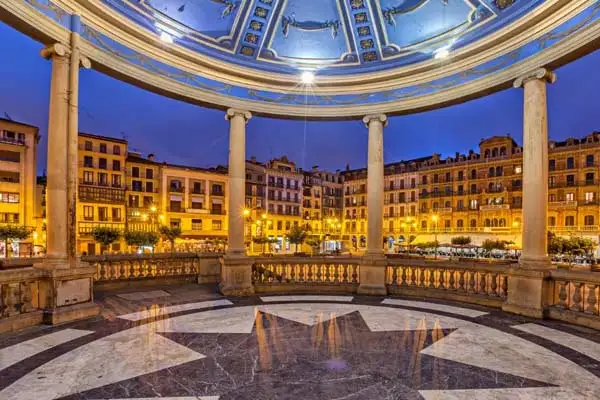
There's more to Pamplona than being the yearly venue of the "Running of the Bulls. " The city's vast array of archaeological treasures and overall lush scenery will surely leave a majestic mark. Exploring the town will allow you to understand why most people, like Ernest Hemingway, have fallen in love with Navarre's capital. If you don't have a specific itinerary yet, here are some of our recommended activities in Pamplona:
1. Tour Plaza del Castillo Like Ernest Hemingway
Ernest Hemingway was an iconic American fiction writer who traveled to Pamplona several times. It was reported that he often spent many hours drinking in Café Iruña, located at Plaza del Castillo. He even immortalized the café in his famous novel The Sun Also Rises. Plaza del Castillo is a lively central square in the Old Town of Pamplona. Aside from Café Iruña, there are many tapas bars people can lounge in here. It's also where you can watch street performers, concerts, and other religious festivals. Just like Hemingway, you'll surely get an energetic vibe when you stop by this area.
2. Admire the Art Collection at Museo Universidad de Navarra
If you're an art enthusiast, the Museo Universidad de Navarra is the place to go in Pamplona. This newly built museum is comparable to the Guggenheim in Bilbao because of its similar global dimensions. It boasts of a collection of paintings by Picasso and Kandinsky. The University of Navarra also donated rare photographic materials from its chronicling artists from the 19th century. Furthermore, the museum's building is a work of art designed by the well-respected Spanish architect Rafael Moneo.
3. Pay Respects at the Cathedral of Santa Maria la Real

One of the most important monuments in Pamplona is the Cathedral of Santa Maria la Real. Aside from being a cathedral, it holds a large amount of artistic and historical treasures. This cathedral was built during the 14th and 15th centuries. The interior's architectural style is French Gothic. Meanwhile, it has a neoclassical façade installed in 1799 by Ventura Rodríguez. The cathedral's cloister, which was finalized in 1472, is recognized as one of the most appealing in Europe. Other notable features inside the cathedral include the 12th-century carving of the Virgin Mary, the alabaster tomb of King Carlos III ('el Noble') and his wife by Johan Lome de Tournai, the Holy Christ by Anchieta, and the octagonal Gothic vault of the Barbazana chapel. The altarpieces and choir stalls by Esteban de Obray are also impressive.
4. Pass by Casa Consistorial (City Hall)
The heart of the Old Quarter is where the historic Casa Consistorial or Pamplona's City Hall sits. The building's construction started in 1423 through the order of King Charles III. It was built exactly in the middle of the town where the three neighborhoods of the three ethnic groups meet. The building's construction symbolizes peace. The seat of municipal government has been in this historic building since being built. The original building was demolished in 1752 but was reconstructed and had an exceptional baroque civil architectural style. The building was again torn down in 1951, but the façade was preserved with its baroque style while the top section has a neoclassical style.
5. Get Lost in the City Walls of Pamplona
Fundamental to Pamplona's past is the city walls. Walking along these walls with a perimeter of 3.1 miles will transport you back to the city's rich history. After all, they wouldn't be the best-preserved city walls in all Europe for nothing. Pamplona had an ideal strategic location from the beginning, and city officials built walls to protect it from attacks. Walls were continuously being added, modified, demolished, and reconstructed throughout history. The city walls are now part of a park open to the public to explore.
6. Stroll Along Citadel and Vuelta del Castillo Park
Take it easy and drop by one of Pamplona's most important green areas, the Citadel and Vuelta del Castillo Park. The citadel served as the city's defensive wall as ordered by Philip II of Spain in 1571. It was strategically shaped into a pentagon to fight every possible angle of attack. Today, it is regarded as
an excellent example of military architecture in the Spanish renaissance style. It used to be under military supervision until 1964 but later on transformed into a national park. The buildings that the military abandoned now serve as art and cultural exhibition centers. Locals and tourists gather in this area to walk, play sports, and have a good time.
7. Have a Tranquil Excursion at Taconera Park
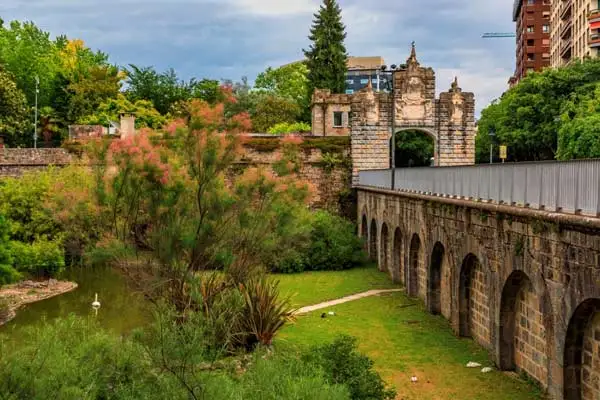
Continue discovering Pamplona's parks by scheduling a visit to Taconera Park. Established in 1830, it is the oldest, yet one of the finest, parks in Pamplona. The French-style orchard is well maintained and has a romantic feel making it the perfect venue for couples. It is surrounded by leafy magnolia trees, beech trees, and a ginkgo Biloba. It's hard to miss the presence of the Japanese pagoda in the quaint Café Vienés. Kids also love it here as the park has a small zoological park. Animals that share the space with the park are swans, ducks, rabbits, peacocks, and deer.
8. Learn More About Pamplona's History at Navarre Museum
Have a trip down memory lane through the archeological and artistic collection found at Navarre Museum. The museum's collection depicts the history of Navarre. The building has been around since the 16th century and was originally the hospital of Nuestra Señora de la Misericordia. In 1910 it was transformed into a museum. It houses pieces from prehistoric times until the 20th century, including Roman artifacts and mosaics. One of the most impressive parts of the collection is a portrait made by Francisco Goya, the Marquis of San Adrián.
9. Discover Scientific Wonders at Pamplona Planetarium
Built in 1993, the Pamplona Planetarium has welcomed hundreds of thousands of visitors every year. It uses a starry sky as a motivating element for scientific dissemination. Visitors have an exciting chance to learn more about astronomy and the mysteries of the universe through state-of-the-art presentations. It also takes pride in having one of the largest projection domes in the world, which offers a realistic view of over 9,000 stars. The planetarium also hosts exhibitions, conferences, courses, events, workshops, and more. People of all ages are inspired and entertained here.
10. Shop to Your Hearts Content in Pamplona
Pamplona has many stores and boutiques to cater to various shopping needs. Searching for some fashionable finds? Head over to the Avenida Carlos III. It is Pamplona’s answer to New York City's Fifth Avenue. The fashion hub of Pamplona offers both local and international brands.
On the other hand, the Old Quarter is home to unique shops. Get a chance to bring home Running of the Bulls paraphernalia from many of the stores here. Casco Viejo contains specialty shops offering hats, vests, woodcarvings, ceramics. Interesting finds such as botas, wineskins, and gerrikos are also available here. Don't know what to get your family and friends? Head over to Vinoteca Murillo so they can have a little taste of Pamplona. You can collect local delicacies here, such as Navarra's distinguished red, white, rosé, and muscatel wines.
5 Reasons to Visit Pamplona
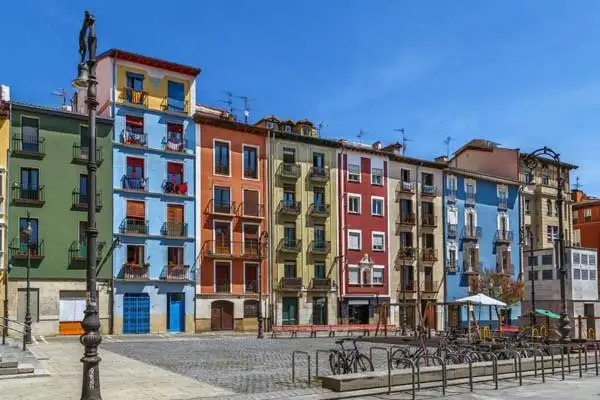
I'm sure you have heard of the famous “Running of the Bulls” in Spain. The renowned festival takes place in Pamplona. However, there is a lot more to this northern Spanish city than just one festival. Take a look at this list of what to expect from the Navarre capital.
1. Fun-Filled, Crazy Festivals
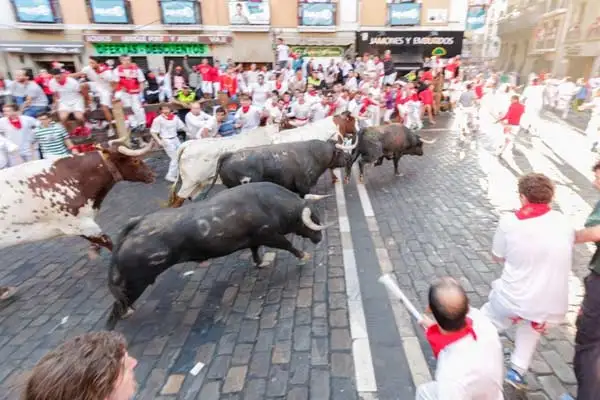
Pamplona is popularly known for the San Fermin bullfighting festival every July. Also known as the "Running of the Bulls," this week-long festival has bulls running every morning. The run starts from Santo Domingo Street to the Old Town streets, an 0.5-mile course. Runners who would like to participate should dress in traditional white clothes with a red bandana. Before the ceremony, runners pray to an image of San Fermín, the patron saint of the festival, and sing a Basque song. Loud rockets sounds are fired, indicating that the bulls are released onto the streets and again to signal it is safe to return to the streets. After the running, people celebrate by eating, drinking, and dancing with nightly firework displays. Aside from the San Fermin Festival, Pamplona has several other festive events that everyone enjoys.
2. Superb Restaurants and Bars
Travel wouldn't be as exciting without indulging in excellent food and drinks. Good thing Pamplona has them all! The city's influence from the Basque Country is evident in the variety of cuisines offered here. These are some of the must-try dishes in Pamplona:
Pintxos are a popular appetizer in Spain, particularly in the northern Basque Country. They are similar to tapas, typically served with a toothpick or skewer, and often displayed on the tops of bars. Also, they are best eaten with a glass of beer or wine. Pintxos consist of meat, seafood, local produce, anchovies, and other ingredients. One of the favorite types of pintxos in Pamplona is one with foie gras.
Txistorra is a quickly cured sausage renowned in Navarre and neighboring areas like Aragon and the Basque Country. It is similar to chorizo and packed with flavors of garlic, salt, and paprika. Txistorra can be fried, grilled, or baked. It can even be served on tapas, like pintxos, or partnered with vegetables or scrambled eggs.
Bull's Tail Stew
Pamplona is famous for its bull runs, so it's not surprising to have a bull specialty in town. Stews are popular in Pamplona, and one trendy dish you should try is the estofado de toro. This traditional stew is made of bull tails, potatoes, bell peppers, carrots, garlic, onion, tomato sauce, saffron, and red wine. Another kind of stew you shouldn't miss is the cordero al chilindrón, containing lamb and other vegetables.
Fish Specialties
If you're a fish lover, Pamplona won't disappoint. One favorite fish dish is the ajoarriero, wherein the main ingredient is cod. It is salted, mashed up, and fried with onions, garlic, tomatoes, and pepper.
Trucha a la Navarra is another typical fish dish in northern Spain. It is a Navarran-style trout stuffed with ham and fried with flour. The fish is then dusted with parsley and served.
Of course, Pamplona will not leave sweets out of the picture. One of the most beloved desserts in town is churros with chocolate. You can easily buy them in any pastry shop or anywhere in the streets. Torrijas is another famous dessert that is similar to French toast. This traditional dessert is flavored with cinnamon and drenched in syrup or honey. Some even produce torrijas with a crunchy sugar top. Another dessert choice is the canutillos de crema or puff pastry cones filled with cream and dusted with sugar.
When it comes to drinks, wine is one of the locals' favorites. It also helps that Pamplona is near La Rioja, where the best Spanish wine is produced. You'll find plenty of merlot and cabernet sauvignon wines throughout the city. Rosé wines like garnacha are also popular in the region. Tempranillo has a special trademark in the wine industry of Pamplona. Don't forget to try kalimotxo when you're in town. Kalimotxo is a crowd-pleasing drink made from a mix of wine and cola. Locals often drink it in the summer, especially during the San Fermin Festival week. Cider is also a popular drink. While locals don't usually drink strong brandies, there is a unique liqueur called pacharan (patxaran) if you're looking for something substantial. It has a 25-30% alcohol content and is served as a digestif after lunch or dinner. Plus, there's a lot of locally produced craft beers in the area.
3. The Picturesque Old Quarter
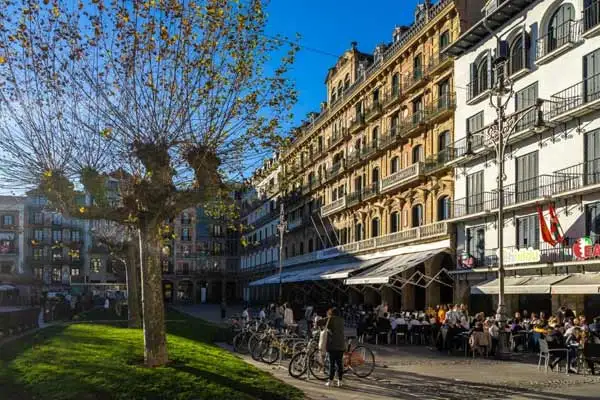
Casco Viejo or Pamplona's Old Quarter is one of the most beautiful parts of the city. In the past, this area was surrounded by a defensive wall. Some sections of it are still visible today. This historical city center is home to palaces, medieval churches, and other important sights. The Castle Square or Plaza del Castillo is where you'll find most of the city's cafes, restaurants, and hotels. Here is where Estafeta street is located, where the "Running of the Bulls" of the San Fermin Festival occurs.
4. One of the Top Sights Along the Camino de Santiago
The Camino de Santiago is a pilgrimage route stretching through Europe and Spain. While it's initially a religious pilgrimage, people walk the path for fitness, mental health, and various other reasons throughout the year. In 1993, it was listed as one of UNESCO's designated World Heritage Sites because of its vital role in encouraging cultural exchanges between the citizens of Europe and other countries. Traversing this route is a once-in-a-lifetime experience. The tour passes through some of Spain's greatest cities, including Leon, Burgos, and Pamplona.
5. Vibrant Nightlife
The day doesn't end when the sun sets in Pamplona. Things start kicking in as the city becomes vibrant at night. The Navarre capital has a lively after-dark scene with locals flocking to bars and clubs. People begin their night in the Navarrería, San Cernin, and San Nicolás districts by sharing pintxos, beer, and wine. Aside from the bars and clubs in the Old Quarter, people can go to the trendy neighborhood of San Juan. Nightclubs, trendy dance clubs, and English pubs playing live music are open all night.
Featured Image Copyright: ©iStock/JackF
Spain Deep Dives
Climate in Spain
Cost of Living in Spain
Healthcare in Spain
Investing in Spain
Live in Spain
Moving to Spain
Real Estate in Spain
Renting in Spain
Retire in Spain
Rolodex of Spain
Taxes in Spain
Tenerife Vs Gran Canaria
Traditions and Culture in Spain
Travel in Spain
Visa and Residency in Spain
Where Is Spain?
City and Area Guide
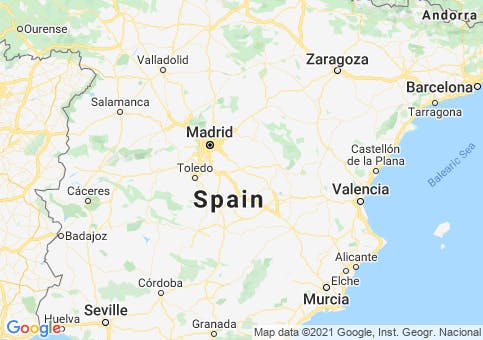

Pamplona Spain
Things To See & Do
Pamplona Spain Visitor & Tourist Information

Pamplona Spain is an ancient city located in the beautiful region of Navarre. The city is brimming with history, culture, and vibrant traditions. From its famous festival to its captivating landmarks, there's something for everyone to enjoy in this charming city.
Pamplona Spain is most renowned for the San Fermín Festival, an exhilarating week-long celebration that takes place in July. The festival is highlighted by the Running of the Bulls , where brave participants sprint through the streets alongside these majestic creatures.
You can join the locals in their traditional white attire and red scarves, and immerse yourself in the lively atmosphere of music, dance, and revelry.
One of the city's iconic attractions is the Pamplona Cathedral , a magnificent Gothic masterpiece. Step inside and marvel at the intricate architectural details, explore the sacred chapels and visit the Treasury Museum to see a collection of religious art and artefacts.
For a peaceful retreat, head to Ciudadela Park, a verdant oasis in the heart of Pamplona.
Take a leisurely stroll through its lush gardens, relax by the tranquil lake, or simply find a spot to have a picnic and soak in the natural beauty.
As you explore the city, don't miss Plaza del Castillo, the bustling central square lined with charming cafes, restaurants, and shops.
Grab a seat at one of the outdoor terraces, sip a coffee or a refreshing drink, and indulge in people-watching as the vibrant city life unfolds before your eyes.
Visiting the City Walls is a must, these ancient fortifications offer panoramic views of the city and provide a glimpse into its storied past.
Take a leisurely walk along the ramparts and imagine the tales of battles and conquests that took place here.
When it comes to cuisine, Pamplona offers a delightful blend of traditional Navarre dishes and Basque influences.
Make sure to try pintxos, a popular local speciality. These small bites of culinary delight are served in bars throughout the city and showcase the region's flavours and creativity. Pair your pintxos with a glass of local Navarre wine for a truly authentic experience.

5 interesting facts about Pamplona
- A popular local dish is called Pisto , a variety of Spanish-type ratatouille with spicy sausage.
- The famous Running of the Bulls festival used to be held in Autumn, this was changed in 1591 due to people being fed up with the wet weather.
- The famous author Ernest Hemingway loved the San Fermin festival , which includes the bull run and was fascinated by bullfighting so spent much time in the city.
- The nearby Roncal Valley is surrounded by several mountains which are more than 2000m high and offer some fabulous photographic opportunities.
- Being so far north Pamplona benefits from a more fertile environment than much of Spain.
Places To Visit In Pamplona Spain

San Fermín Festival: Pamplona is famous for the San Fermín Festival, where the thrilling Running of the Bulls takes place. Experience the excitement and join the locals in this week-long celebration of music, dancing, and traditional events.
Pamplona Cathedral: Admire the stunning Gothic architecture of the Pamplona Cathedral. Explore its intricate interior, including the Chapel of San Fermin and the Treasury Museum.
Ciudadela Park: Relax and unwind in the beautiful Ciudadela Park. Stroll through its lush gardens, enjoy a picnic, or rent a boat to explore the park's charming lake.
Plaza del Castillo: Visit the lively Plaza del Castillo, the heart of Pamplona. This bustling square is lined with cafes, restaurants, and shops, perfect for enjoying a cup of coffee or indulging in some retail therapy.
Pamplona City Walls: Discover the ancient city walls that surround Pamplona Spain. Take a leisurely walk along the fortified ramparts and enjoy panoramic views of the city.
Museo de Navarra: Immerse yourself in the art and history of the Navarre region at the Museo de Navarra. Marvel at the collection of Roman artefacts, medieval art, and contemporary works.
Café Iruna: Step into the historic Café Iruna and soak in the ambience of this iconic establishment. Enjoy a coffee or a traditional pintxo while admiring the stunning Belle Époque decor.
Yamaguchi Park: Escape the city bustle and unwind in the tranquil Yamaguchi Park. This Japanese-inspired garden features beautiful cherry blossom trees, serene ponds, and peaceful walking paths.
Baluarte Congress Centre: If you're interested in modern architecture, visit the Baluarte Congress Centre. Its striking design and cultural events make it a prominent landmark in the city.
Navarrería Quarter: Explore the historic Navarrería Quarter, known for its narrow streets, medieval buildings, and charming squares. Don't miss the Church of San Saturnino and the impressive Arch of Cuchillería.
The Grand Cathedral

Work on this Grand cathedral began in the thirteenth century and took one hundred and fifty years to fully complete. Some new additions to the cathedral happened as recently as the early nineteenth century.
The cathedral is a cultural masterpiece showing several elements of architectural styles including Gothic, Neoclassical, and Renaissance. It also houses the second-largest bell in Spain, several religious artefacts, and a crypt that holds the remains of several Spanish Kings and Queens.
The Palace of Navarra

This is the most visible piece of Pamplona’s heritage, designed by José de Nagusia in 1840. It is now an administrative centre, although visits to the palace can be scheduled by appointment.
The exterior of the building is home to two great sculptures representing King Sancho the Great and King Sancho VII the Strong.
There is also a sculpture of Navarre’s coat of arms flanked by one man from the north of Navarre and another man from Navarre’s mountain region.
The interior of the Palace of Navarra building is just as exquisite, here you will find the Throne Room, the Session Room, the Chapel, and the President’s office.
The Museum of Navarra

The Navarra Museum stands opposite the Royal Palace and is well worth visiting, it houses the greatest art collections and archaeological findings in Navarra. Some date back to pre-historical periods while most fall within the Roman, Medieval, Renaissance and Baroque periods.
The most prized works of art at this museum include the Mosaic of Theseus, Goya’s portrait of the Marqués de San Adrián, and the Chest from Leyre
Saint Nicholas Church

Built-in the twelfth century, the Saint Nicholas church had both religious and military functions. Its purpose was to dissuade opposing forces from attacking Pamplona.
This is why the church has unusually thick walls, three watchtowers, and wrought iron nails.
The interior of the church is Gothic. It also has a Baroque organ considered to be the most important in Pamplona Spain.
The Town Hall

The City Hall is located in the heart of the Old Quarter and is where thousands of people gather on the 6th of July each year to welcome the start of the San Fermin Fiestas.
This historic 13th building was the baser from which King Carlos III enacted a law to stop the centuries of infighting between the three boroughs of the area, Navarrería, San Saturnino and San Nicolas.
The building has been renovated on numerous occasions but none took away its beautiful Baroque and neoclassical facade.

If there is one authentic bar/restaurant you should visit in Pamplona, then it has to be Cafe Iruna , one of Ernest Hemingway's favourite haunts.
A great place to hang out and enjoy a local beer, tapas or a delicious daily menu.
The decor and authentic atmosphere at the Cafe Iruna are quite unique, you can even relax in Hemmingway's corner, an area dedicated to its famous patron.
If you want to follow in the footsteps of Hemmingway head off to the Plaza Castillo where you find his favourite bars such as Bar Txoko , Hotel Quintana, Hotel La Perla , and Cafe Suizo.
The City Walls
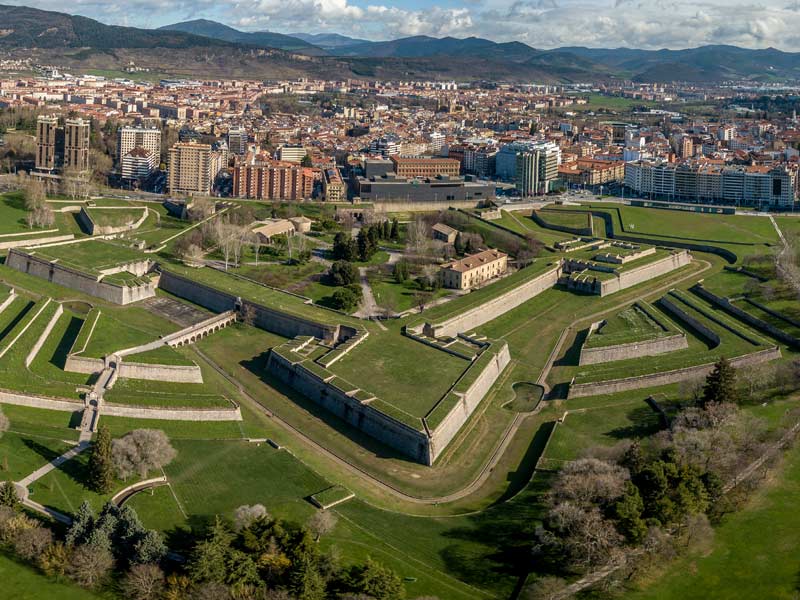
The city walls were integral to Pamplona's past with the Spanish government designated them as a national monument in 1937.
The people of Pamplona built these walls during the Roman conquest, French invasions and war with invading Muslims.
Only three-quarters of the old city walls survived these various onslaughts even though they were repeatedly rebuilt. You can find “The French Entrance,” the Taconera Gardens, and “The Old Fortress” along these City Walls.
Historic Parks

Another must-visit in the city is Pamplona’s exquisite gardens, some of which date as far back as Roman times when Pompey, the great general of Rome, built a base in the area to fight Sertorius, a great adversary of Rome.
Taconera Park is one of the oldest parks in this city offering wide paths for pedestrians, sculptures at every corner and pretty ornamental flower beds. Other picturesque parks include Media Luna Park, Yamaguchi and Arga Park.
The Gastronomy of Pamplona Spain

Pamplona has a rich gastronomic tradition that draws on both Spanish and Basque culinary influences. One of the most famous local specialities is pintxos, small snacks typically served on bread with a variety of toppings.
Popular dishes in Pamplona include lamb stew (cordero al chilindrón), made with tomatoes and peppers, and cod (bacalao) prepared in a variety of ways. Chistorra, a type of spicy sausage is another favourite that's often served with bread or roasted peppers.
Pamplona is also known for its excellent wine, with the Navarra region producing a wide variety of high-quality wines. Visitors can enjoy wine tastings and tours at bodegas throughout the region, including Bodegas Irache and Bodegas Ochoa.
Overall, Pamplona is a foodie's paradise, offering a range of delicious local specialities and culinary experiences that should be tried and enjoyed at every possible occasion.
Some of the most popular dishes in Pamplona and the Navarre Region are:
- Winter vegetables: Navarre is known for its high-quality vegetables, such as asparagus, artichokes, and leeks. They are usually cooked with olive oil, garlic and salt, and sometimes with ham or eggs. They are a delicacy that can be enjoyed from January to February.
- Idiazabal cheese: This is a cheese made from raw sheep's milk that has a smoky and slightly spicy flavour. It is protected by a designation of origin and can be eaten with quince paste or honey. It is one of the most typical cheeses of the region, along with Roncal cheese.
- Chistorra: This is a thin sausage made from pork, garlic, salt and paprika. It is cured for a short time and then fried or grilled. It can be eaten as a snack, as part of a sandwich or as an ingredient in other dishes, such as scrambled eggs.
- Ajoarriero: This is a dish made from salt cod, potatoes, garlic, eggs and oil. It is cooked slowly until it becomes a creamy paste that can be spread on bread or eaten with a spoon. It is said that this dish was invented by mule drivers who carried salt cod across the mountains.
- Cazuelica: This is a small clay pot filled with a stew or soup made with local ingredients, such as meat, vegetables, beans or mushrooms. It is usually accompanied by bread. It is a traditional dish that can be found in many bars and restaurants, especially during Cazuelica Week in October.
- Canutillos: These are sweet pastries made from thin dough that is rolled into tubes and filled with cream or custard. They are then fried and sprinkled with sugar or honey. They are typical of Pamplona and are often eaten during the San Fermín festival.
Recommended Bars & Restaurants
Cafe Iruna: A favourite haunt of Ernest Hemingway a great place to enjoy excellent coffee and a quick homemade tapa.
Restaurant Besseriberri: This is a popular fine dining restaurant offering unique cuisine prepared by the amazing young chef Inaki Andradas. This master chef offers a gastronomic infusion of food with its roots firmly in the Navarra region. You will need to make your reservation well in advance to avoid disappointment.
Restaurant Jostexo: This is a family-run eatery offering traditional recipes creatively served. Another one named after the famous patron saint of Pamplona is the Restaurant San Fermin which serves a variety of dishes from the Navarra region.
Getting to Pamplona Spain
Pamplona is well-connected to the rest of Spain and Europe by a variety of transportation options. The city has its own airport, Pamplona Airport , which is located about 6 kilometres from the city center. It offers flights to destinations within Spain as well as to other major European cities such as London and Paris.
Pamplona is also well-connected by train, with the main train station, Pamplona Station, located in the city center. It offers daily connections to major cities in Spain such as Barcelona, Madrid, and Bilbao.
For those traveling by car, Pamplona can be accessed via the AP-15 motorway, which connects the city to other major cities in the region. The A-12 motorway also connects Pamplona to Logroño and Burgos.
In addition, the city has a central bus station, Pamplona Bus Station, which offers connections to cities throughout Spain and other European countries.
Overall, Pamplona is easily accessible by air, train, bus, and car, making it a convenient destination for travellers from around the world.
FAQs - Frequently Asked Questions
Is it worth visiting pamplona.
Yes, most certainly Pamplona is well worth visiting. The city is most famous for its annual Running of the Bulls during the San Fermín Festival in July, a spectacle that draws massive crowds. Beyond this event, Pamplona has a charming old town, beautiful parks, and historic sites like the Pamplona Cathedral. The city also offers a rich culinary scene that includes delicious tapas bars. It's a smaller city compared to other Spanish destinations like Barcelona or Madrid, but it provides a unique cultural experience, especially if you're interested in Basque and Navarrese traditions.
What is Pamplona Spain mostly known for?
Pamplona is most famous for the Running of the Bulls, part of the San Fermín Festival held every July. This centuries-old tradition attracts thrill-seekers and spectators from around the world. The city is also known for its historic architecture and rich Basque and Navarrese culture.
Is Pamplona walkable?
Yes, Pamplona is a highly walkable city, especially its historic center. The narrow streets, squares, and parks make for pleasant strolls. Most attractions, like the famous Plaza del Castillo and the Pamplona Cathedral, are within walking distance of each other, making it convenient for visitors.
How many days do you need in Pamplona?
The number of days needed in Pamplona largely depends on what you wish to see and do. However, for a basic experience that covers major attractions like Plaza del Castillo, Pamplona Cathedral, and perhaps a bullfight if in season, a 2-3 day visit is generally sufficient.
How do you get around in Pamplona?
Getting around Pamplona is fairly easy, as it's a compact city with a walkable center. Public buses are also available for longer distances. Taxis and rideshare services are convenient options as well. Biking is another viable means of transportation, with bike lanes throughout the city.
Is Pamplona on the Camino de Santiago?
Yes, Pamplona is a significant stop on the Camino de Santiago, specifically on the French Way (Camino Frances) route. Many pilgrims choose to start or rest here, as the city offers various amenities, historical landmarks, and a rich cultural experience that adds to the Camino journey.
How far is Pamplona from the sea?
Pamplona is located inland and is approximately 80-85 kilometres away from the Bay of Biscay, the nearest sea. The closest coastal city is San Sebastian. A drive from Pamplona to San Sebastian would take about 1 to 1.5 hours, depending on traffic and route.
Is Pamplona a small town?
Pamplona is not a small town; it is the capital of the Navarre region in northern Spain. With a population of around 200,000, it's a medium-sized city offering a blend of historical landmarks, modern amenities, and cultural activities.
Recommended Pamplona Hotels
Whether you're seeking luxury, mid-range comfort, or budget-friendly accommodations, Pamplona has a variety of options to suit your needs:
Gran Hotel La Perla : Located on Plaza del Castillo, this iconic hotel has hosted famous guests like Ernest Hemingway. It offers luxurious rooms, exquisite dining, and a rooftop terrace with stunning views of the city.
Hotel Tres Reyes : This elegant hotel features spacious rooms, a swimming pool, and a lovely garden area. It's a great choice for travellers seeking a comfortable stay with easy access to Pamplona's attractions.
Plaza Catedral Hostel : Ideal for budget-conscious travellers, this hostel offers dormitory-style rooms and private options. It provides a friendly atmosphere and is within walking distance of the city's highlights.
Pamplona Weather
Here's a brief overview of the weather in Pamplona through the seasons:
Spring (March to May): Spring in Pamplona is generally mild and pleasant. Temperatures start to warm up, with daytime highs ranging from 12°C to 20°C (54°F to 68°F). Spring showers are common, making the city's lush greenery come to life. It's a lovely time to visit as flowers bloom, and outdoor activities become more enjoyable.
Summer (June to August): Pamplona's summers are warm and relatively dry. Daytime temperatures range from 25°C to 30°C (77°F to 86°F). It's a popular time for tourists, especially during the San Fermín festival in July when temperatures can soar. Clear skies and warm evenings make it perfect for outdoor dining and exploring the city.
Autumn (September to November): Autumn in Pamplona is characterized by mild temperatures that gradually cool down. Daytime highs range from 19°C to 14°C (66°F to 57°F) in September, dropping to 10°C to 14°C (50°F to 57°F) by November. It's a great season for exploring the city's historic sites as crowds thin out.
Winter (December to February): Winters in Pamplona are chilly and occasionally snowy. Daytime temperatures hover between 6°C and 11°C (43°F to 52°F), while nighttime temperatures often drop below freezing. It's a quieter time for tourism, but the city's cosy cafes and cultural attractions are still inviting.
Download FREE official travel and tourism board brochures

Travel Smarter - Not Harder
Download free e-guides and travel tips.
Start your Journey today and get access to exclusive FREE content.
Disclosure: Please note that some of the links included in the above content may be affiliate links. We may earn a commission if you make a purchase at no extra cost to you. Rest assured, we only recommend products and services that we personally use or have used and are happy to recommend. Any commission we earn helps toward the site's running costs.
Username or Email Address
Remember Me
- WHY VISIT SPAIN?
- TRAVELLING TO SPAIN
- SPAIN ON A BUDGET
- TRAVEL REQUIREMENTS – ETIAS
- SPAIN ENTRY REQUIREMENTS
- SPANISH CUISINE
- SPANISH FOOD
- HOLIDAY IDEAS
- PUBLIC HOLIDAYS
- TOURISM BOARDS
- AIRPORT GUIDE
- DRIVING IN SPAIN
- WEATHER IN SPAIN
- FREE WEB CAMS
- BEST BEACHES SPAIN
- FESTIVALS & FIESTAS
- MUSEUMS IN SPAIN
- CAMPING IN SPAIN
- MARINAS IN SPAIN
- SKIING IN SPAIN
- WATER PARKS
- UNESCO WORLD HERITAGE SITES
- 80 BEST ATTRACTIONS
- 71 BEST PLACES TO VISIT
- REGIONS OF SPAIN
- COSTA DEL SOL
- CANARY ISLANDS
- SAN SEBASTIAN
- Complete List:
- SAGRADA FAMILIA BARCELONA
- BARCELONA FC STADIUM TOUR
- BARCELONA FLAMENCO SHOW
- SEVILLE FLAMENCO SHOW
- SEVILLE CATHEDRAL
- GAUDI`S CASA BATLLO
- THE ALHAMBRA GRANADA
- SANTIAGO CATHEDRAL
- CITY OF ARTS & SCIENCE VALENCIA
- MOSQUE-CATHEDRAL CORDOBA
- CAMINITO DEL REY
- PRADO MUSEUM MADRID
- REINA SOFIA ART MUSEUM
- SCUBA DIVING
- BEST TAPAS TOURS
- BEST WINE TASTING TOURS
- TOUR GUIDES
- HOTELS IN SPAIN
- LUXURY HOTELS
- LUXURY BEACH HOTELS
- HOLIDAY RENTALS
- PARADOR HOTELS
- CHEAP FLIGHTS
- TRAVEL INSURANCE
- FREE TRAVEL BROCHURES
- WIN FREE HOLIDAYS

Visit Pamplona, Spain; a travel guide to the bull-running city of Pamplona

Visit Pamplona
Pamplona, called Iruna in Basque, is the capital of the province of Navarra in the Basque Country of Spain. Pamplona is an attractive city at any time of the year but it is for the Fiestas de San Fermin, Pamplona's famous bull running festival in July, that the visitors flock in.
Explore Pamplona
Pamplona has an attractive old town at the centre of which is the Plaza del Castillo. This is edged with bars and restaurants and is an excellent spot to stop for a coffee or a meal and watch the world go by. Bullfights once took place in this square until these were moved to Plaza de Toros.
In the streets radiating out from the Plaza del Castillo there are lots of sights to see. In particular look out for the Santa Maria cathedral. The cathedral is largely gothic but has an 18th century neo-classical facade. Inside are the tombs of Carlos III and Elanor and there is a fabulous gothic cloister. Particularly noteworthy is its southern entrance doorway, the Puerta de la Preciosa with its beautiful carvings.

The cathedral's Museo Discesano is housed in the very interesting kitchen and refectory and display Gothic altarpieces and statues from Navarro. Behind the cathedral is the best section of the remaining city walls. From these you can get excellent views of Pamplona and of the Rio Arga which lies on the other side of the walls.
Another highlight is the Palacio de Navarra which is a Baroque building and has an ornate throne room used by the kings of Navarra. The town hall also has an impressive Baroque facade.
Be sure to head for the ruins of the Citadel and take a stroll in the surrounding gardens.
Even if you are not here for the bull-running, take a look at the Plaza de Toros - Pamplona's bullring.
The San Fermin Festival
The Fiestas de San Fermin takes place from midnight on the 6th July to midnight on the 14th July and during this period there is a non-stop party. The 'encierro' or bull-running takes place each morning at 8am when six bulls are released near the plaza Santo Domingo and 'run' to the bullring. They run through the narrow cobbled streets with hundreds of locals and tourists braving their horns to run with them.
During the week there are fairs, parades, music and dancing. If you get the chance make sure you go!
The Fiesta became popular with tourists after Hemingway described it in his book 'The Sun Also Rises'.

Museums in Pamplona
The Museo de Navarra is housed in a beautiful old hospital building and has displays relating to Navarra including a painting of the Marques de San Adrian by Goya.
Places to visit nearby
Nearby Olite has a lovely medieval centre and a splendid Royal palace.
Sanguesa is an attractive medieval town and often full of pilgrims walking the 'Way of Saint James'. Hondarribia on the border with France has a lovely old town and a beautiful parador.
You can find more local travel ideas in and the Navarra, La Rioja, Basque Country guide .
See also Find Pamplona hotels
Photos of Pamplona
Click any picture to start the gallery

Map of Pamplona and places to visit
Pamplona places to visit.

Olite has a lovely medieval centre and a stunning Gothic palace to explore.

Sanguesa is a very interesting town with lovely old streets, mansions and churches and the remains of a royal palace.

Hondarribia
Hondarribia on the border with France has a beautiful old town. Its buildings are decorated with fine wooded balconies.

San Sebastian
San Sebastian is a beautiful town on the edge of the La Concha beach which is often said to be one of the best in Europe.

Centre and Romantic Districts of San Sebastian
Donostia-San Sebastian is a beautiful seaside city and the Romantic and Centre Districts are full of fabulous Belle-Epoque buildings.

Old town of San Sebastian
San Sebastian is a beautiful city and its old town is a thriving district with bars and pintxos and a charming harbour.
Select your language
Spain This Way - copyright 2009 - 2024
- privacy policy
Travel Safe
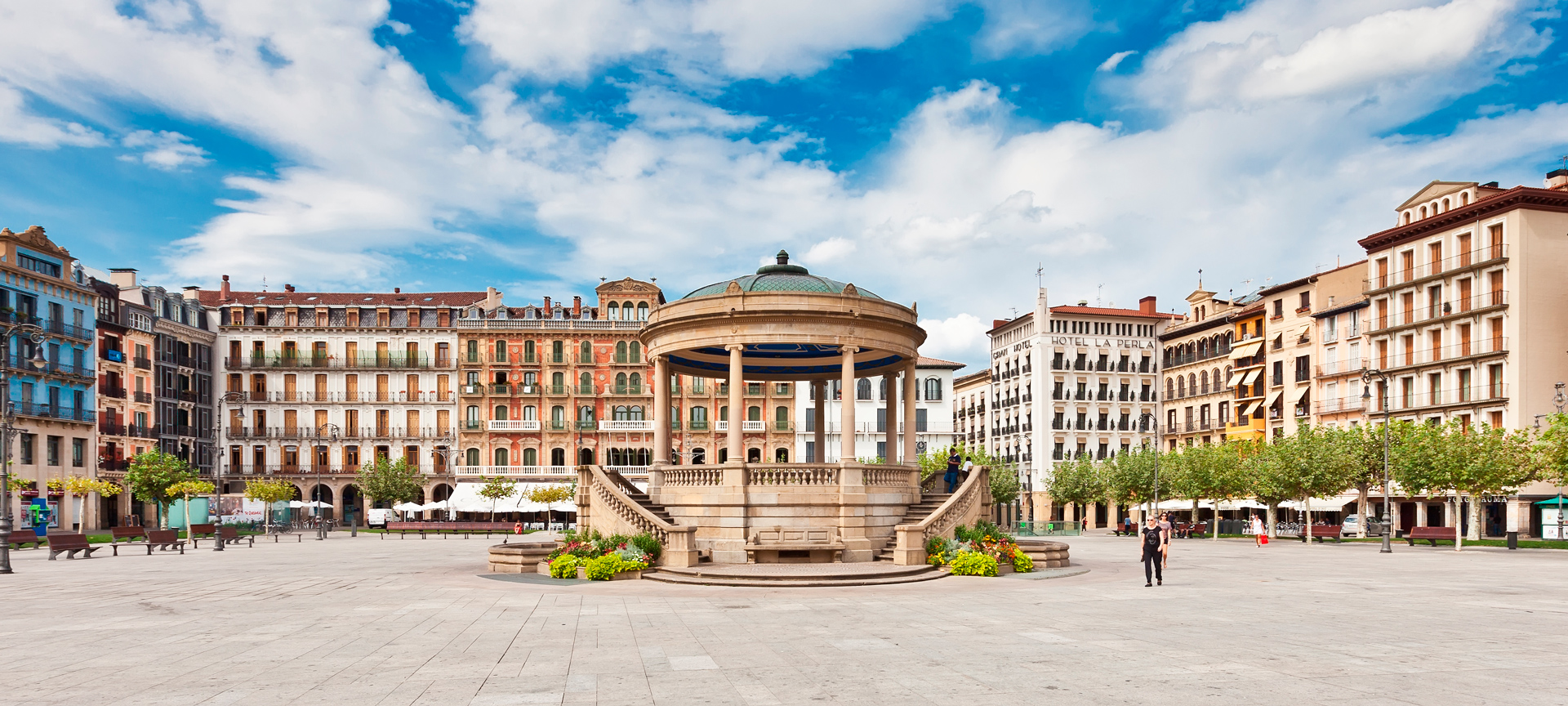
A stroll through the heart of Pamplona
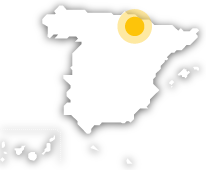
Plaza del Castillo square
Iconic square in the south of the old town. Also known as the “living room” of the Pamplonicans, it is considered the heart of the city and the centre of social life for the locals. Go there and sit on one of its numerous terraces to enjoy a fried “pamplonica”: a typical delicacy of the Navarre cuisine that you will love.
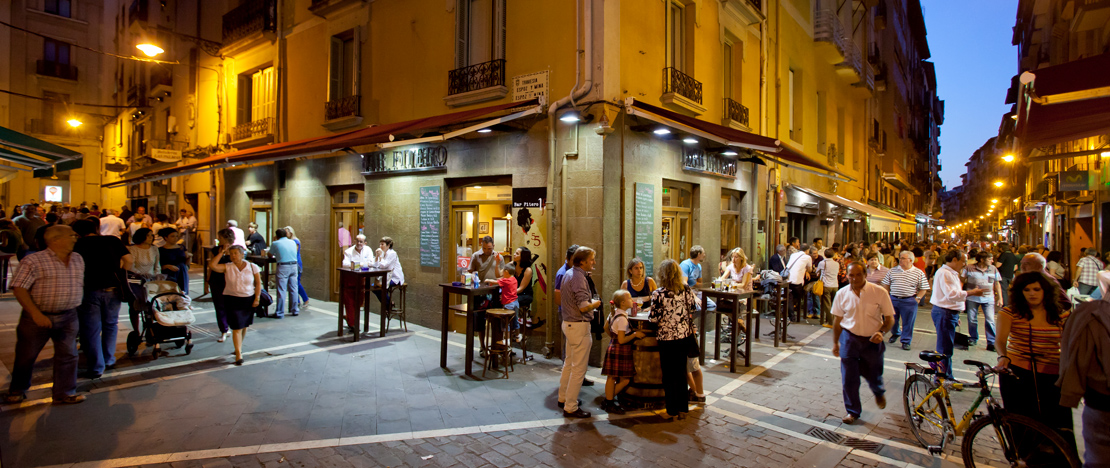
Calle Estafeta
Very close to the Plaza del Castillo, you will discover the famous calle Estafeta. It may sound familiar since it is one of main locations for the running of the bulls during the festivities of San Fermín . This narrow street boasts many shops and bars, a typical sight in the city. Visit it on a Thursday and you can enjoy the “juevintxo”: many bars in the city offer a pincho and drink (wine or zurito) for two euros. Fun and good food are guaranteed.
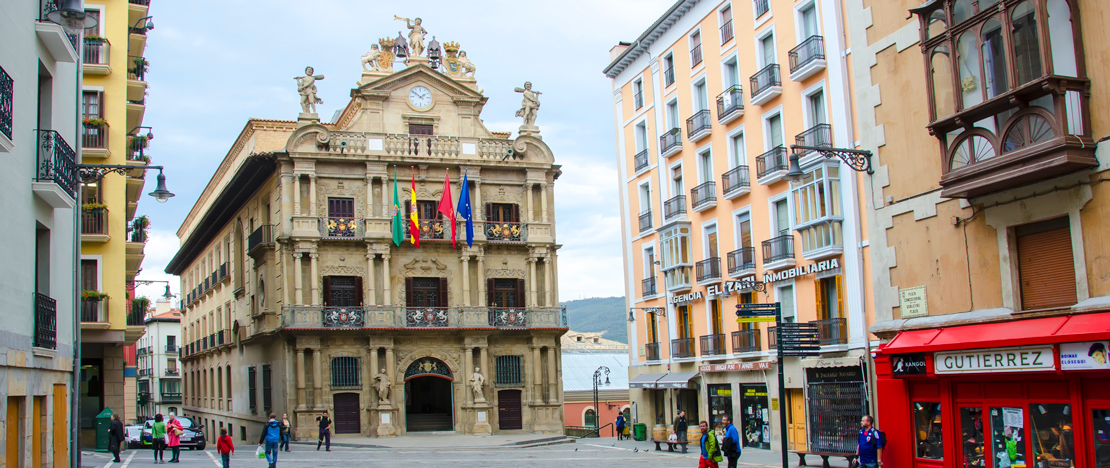
When you travel to a city , seeing the facade of the City Hall is a must. Pamplona's dates back to the year 1423, although the current building was rebuilt in 1951. This location is cherished by all Pamplonicans, since it is the stage where the Chupinazo is launched every 6 July to announce the start of San Fermín.
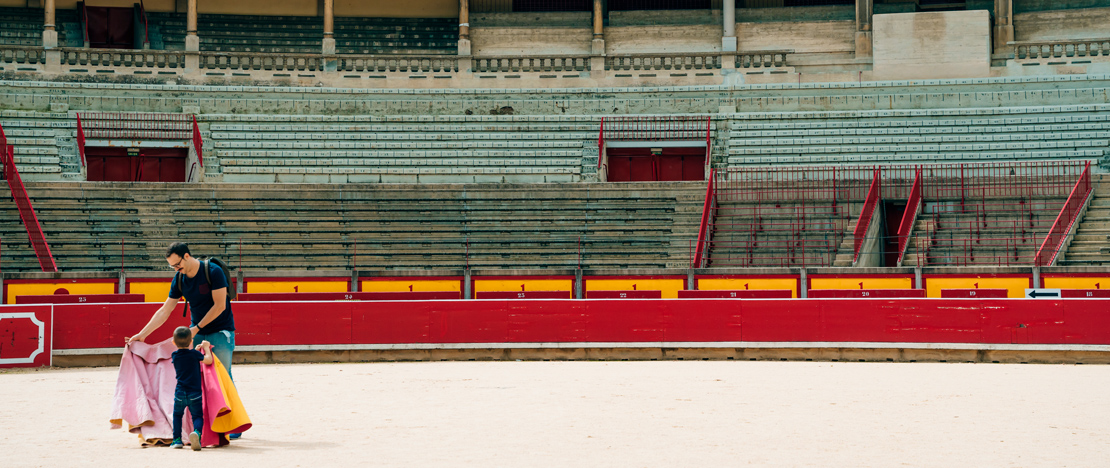
Keep strolling through the old town and you will come to the Pamplona bullring, inaugurated on 7 July 1922. It is the second largest bullring in Spain (after the bullring in Madrid) and it can sit approximately 20,000 spectators. Every year it hosts the bullfights of San Fermín and also marks the end of the running of the bulls held every morning.
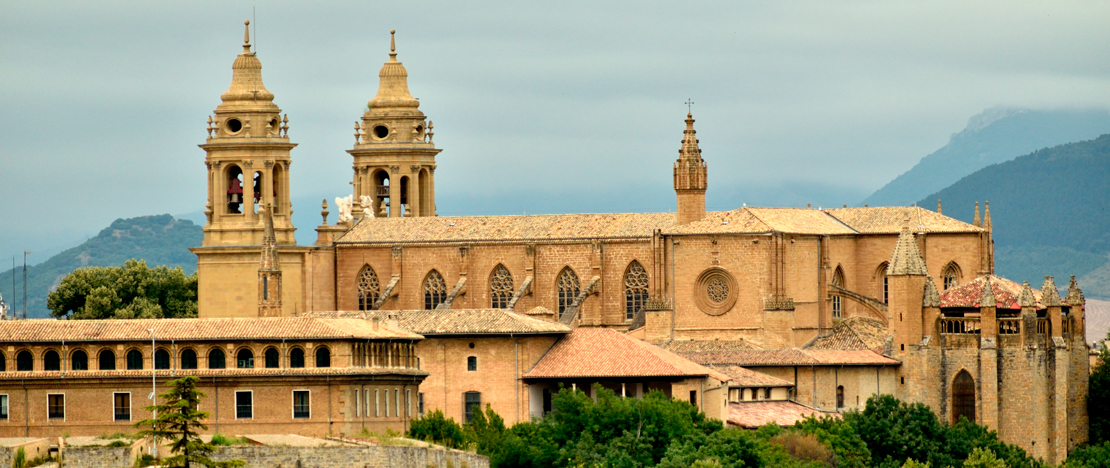
Cathedral of Pamplona
The Cathedral of Santa María la Real is also part of the old town. Gothic in style and with a neoclassical façade, it is the most complete, preserved cathedral in Spain, as it maintains unique rooms such as the stalls, the refectory, the chapter house and the bedroom. Each room was built at a different time, so visiting this place is an extraordinary historical journey. If you are planning a two-day urban route through Navarre's capital, its cathedral must be on your itinerary!
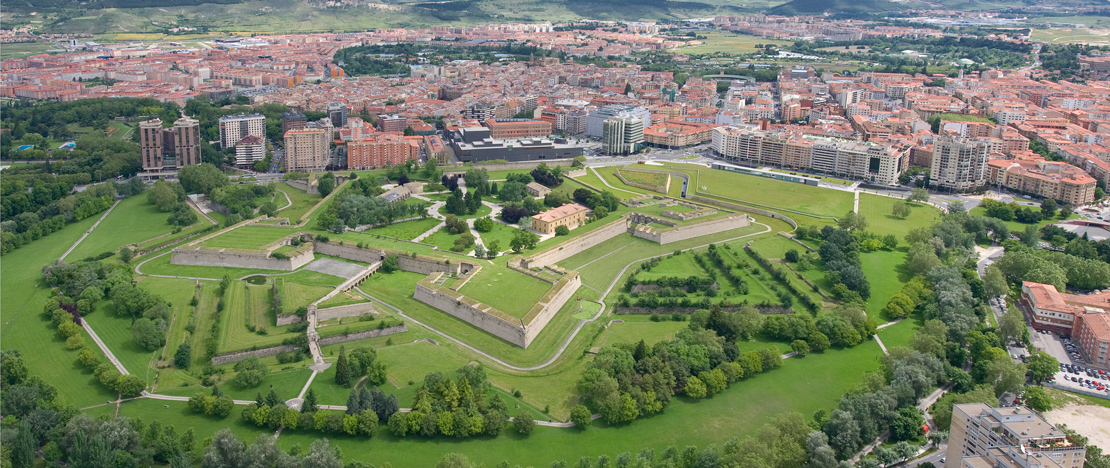
The walls and the citadel of Pamplona
If you wish to visit medieval areas of Spain , make sure of explore the walls of Pamplona and the Renaissance fortification of its citadel. Do not hesitate to take a walk and admire its more than five kilometres: you will love the atmosphere and feel like you travelled back in time! These are just some of the hidden gems in the old town of Pamplona. Undoubtedly, a unique destination for those who love city plans steeped in history. Fancy visiting the heart of the capital of Navarre?
Travel plans for inspiring you
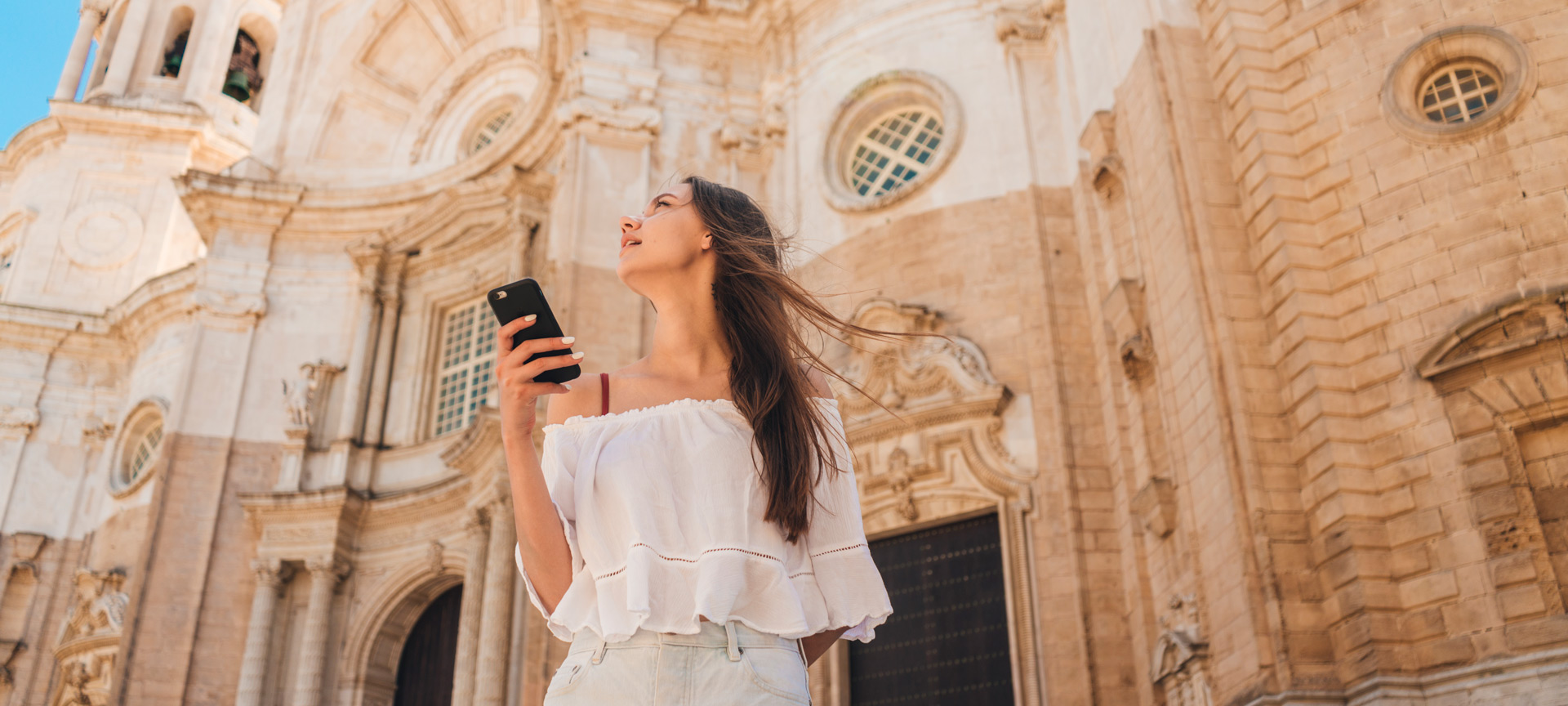
Urban tourism
What to see in the city of Cadiz in one day
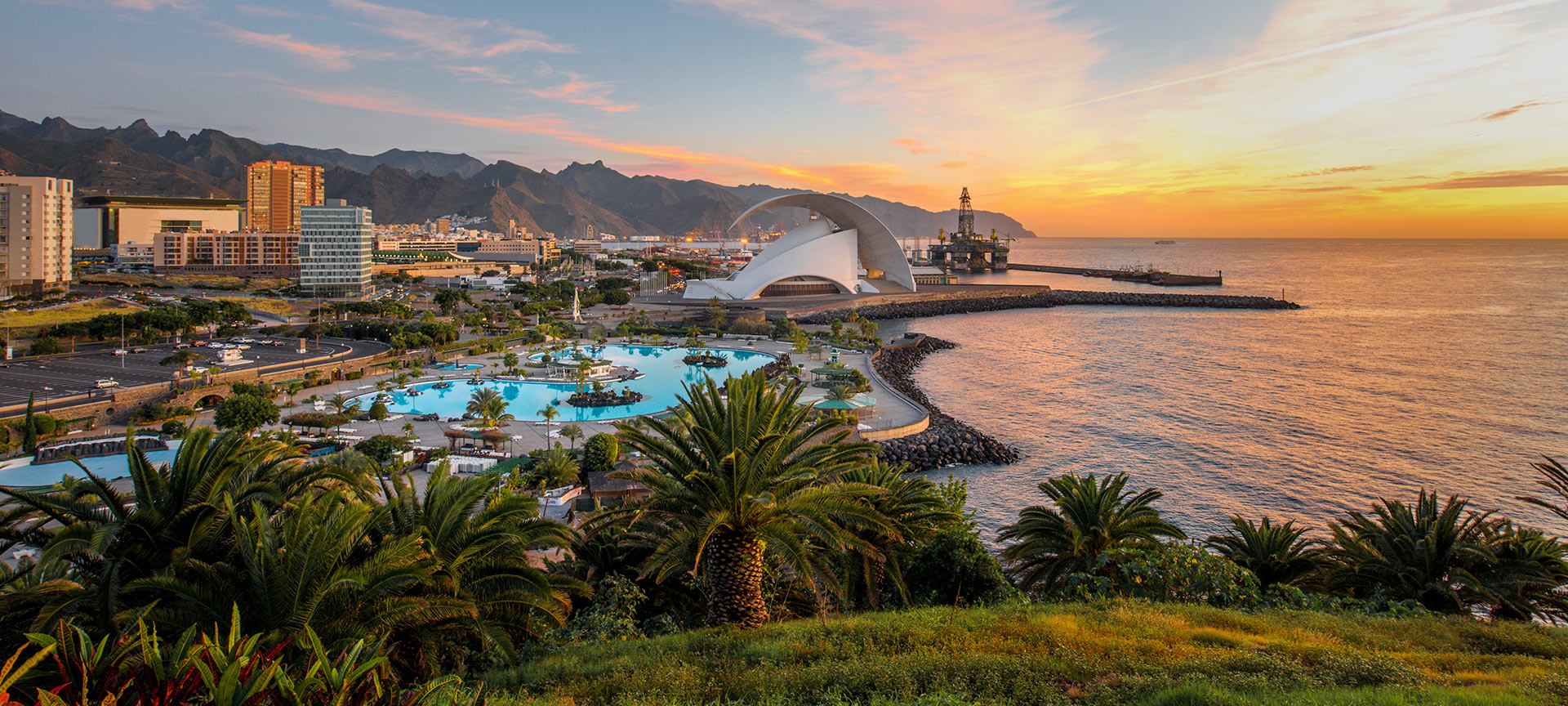
A day in Santa Cruz de Tenerife
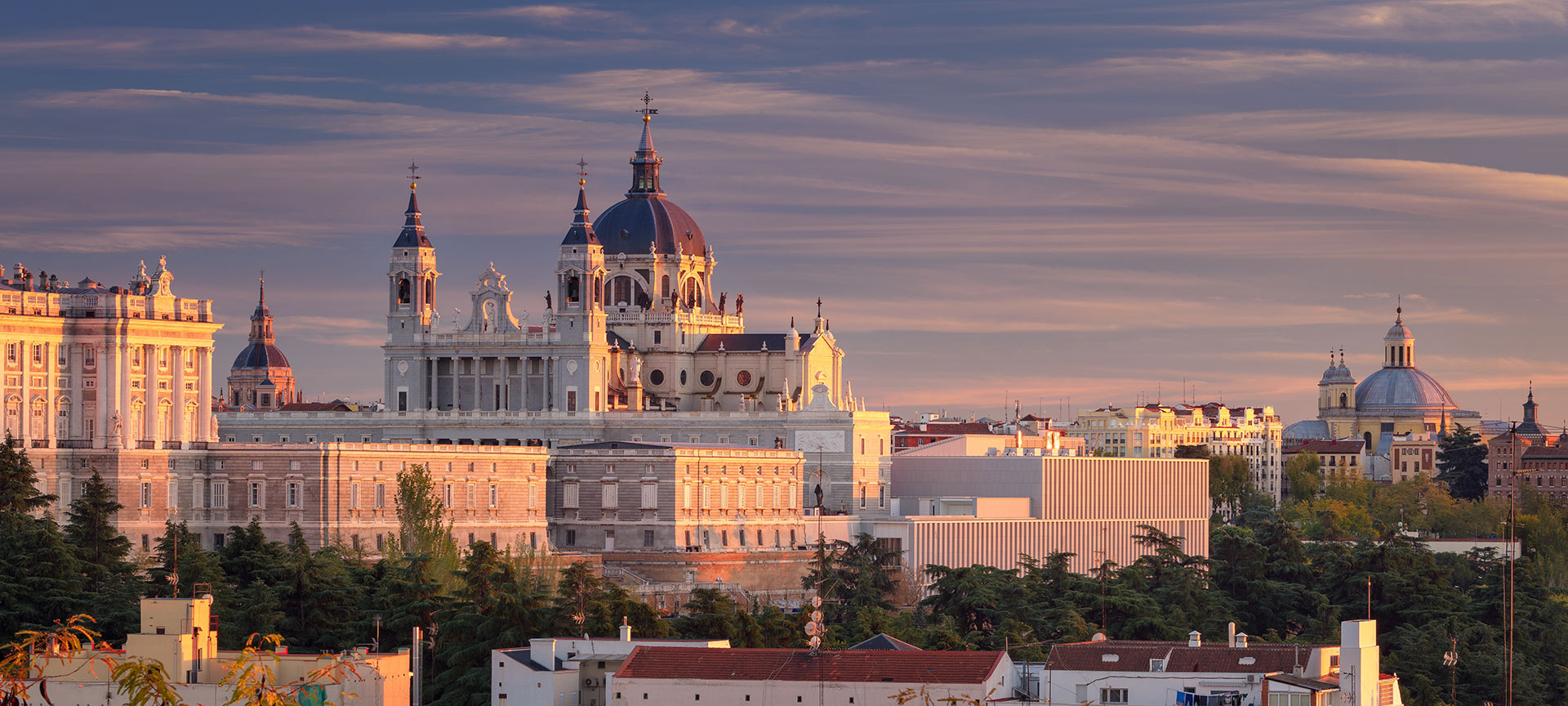
Two days in Madrid

Choose between thousands of activities to live your best life on holiday.
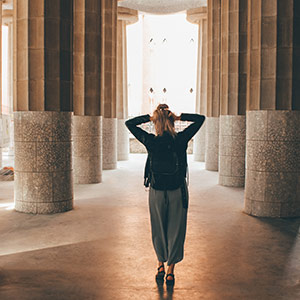

About Pamplona
- Introduction to Pamplona
- Why Visit Pamplona?
- History & People
- Food & Drink
- Photo Gallery
Planning Your Trip
- Travel to Pamplona
- City Transport
- Car Rentals
- Property & Real Estate
- Study Spanish!
- Summer Language Camps
- Accommodations
- Visas & Embassies
- Safety & Emergencies
- La Navarrería
- San Cernin & San Nicolás
- La Ciudadela
Culture & the Arts
- Architecture
Out & About
- Restaurants
Trips from Pamplona
- Roncesvalles
- Puente de la Reina
- San Sebastian
- Irati Forest
Spain Travel Guides
- Alicante Guide
- Cadiz Guide
- Cordoba Guide
- Granada Guide
- Ibiza Guide
- Madrid Guide
- Malaga Guide
- Marbella Guide
- Pamplona Guide
- Salamanca Guide
- San Sebastian Guide
- Sevilla Guide
- Tenerife Guide
- Valencia Guide
- Zaragoza Guide
Pamplona City Guide

Where to Go
Pamplona is the capital city and transportation hub of Navarra and, as such, welcomes visitors traveling via all modes of transportation. Read more

What to See
Pamplona enjoys rather mild temperatures moderated by its proximity to the Cantabrian coastline. Read more

With top-notch theaters, surprising museums, centuries-old architecture and one of the world's most famous festivals, the decidedly smallish city of Pamplona has a cultural scene befitting of a metropolis three times its size! Read more
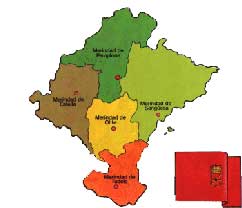
Learn here about Pamplona intricate yet compelling history.
Culture & the Arts
What Pamplona lacks in size it more than makes up for with its cultural scene, where Spanish and Basque cultures converge in the way of festivals. Read more
we have all the Pamplona travel information you need- and more! Read more
Occupying a unique setting in a valley already part of the Pyrenees foothills, and crossed by three rivers, the main of them called Arga, Pamplona is a city that has much more to offer the visitor than the world-renowned San Fermin festivity: a town of contrast, where the old and the new mix creating an incomparable blend.
This Pamplona guide will help you to discover the tradition in the modern reality of the city.
How to Use this Guide
We want to share with you only the most precise and updated information, from what you should take into account before you arrive in Pamplona - Planning Your Trip - to the different leisure and cultural options in Out & About .
We've also added some other valuable details, such as a History section and a Culture section to give you some more background on a unique Spanish city.
What Pamplona
What Pamplona is part of our collection of our "What" travel guides to countries and / or cities of Spain and Latin America. We provide practical, tourist and cultural information, which allows you to organize your trip. Enjoy and come back up with lots of beautiful memories for life!
© 2011 whatpamplona.com All rights reserved
Pamplona City Guide | Contact us | Site Map
Our What travel guide collection
- Latin America Guide
- Argentina Guide
- Costa Rica Guide
- Mexico Guide
- Chile Guide
- Spain Guide
- Paris Guide
- New York Guide
Book your individual trip , stress-free with local travel experts
Select Month
- roughguides.com
- euskal-herria-the-pais-vasco-and-navarra
- Travel guide
- Itineraries
- Local Experts
- Travel Advice
- Accommodation
Plan your tailor-made trip with a local expert
Book securely with money-back guarantee
Travel stress-free with local assistance and 24/7 support
Maureen C, USA
The hotels were fabulous and we were greeted and treated with care. The itinerary proved outstanding. The drivers were wonderful. He was always on time, ma...
A prosperous city of just under 200,000, Pamplona (Iruña) is a robust, visceral place, with a rough-hewn edge and a strong streak of macho self-confidence. Having started out as a powerful fortress town defending the northern approaches to Spain at the foothills of the Pyrenees (the city takes its name from the Roman general Pompey), it later became capital of Navarra – often a semi-autonomous state – and an important stop on the Camino de Santiago. With plenty to offer around its Casco Antiguo – enticing churches, a beautiful park and the massive citadel – Pamplona makes an appealing year-round destination, though for anyone who has been here during the thrilling week of the Fiestas de San Fermín a visit at any other time can only be an anticlimax.
Fiestas de San Fermin
Everything you’re likely to want to see in Pamplona lies within its remarkably compact Casco Antiguo. Centring on the Plaza del Castillo, ringed with fashionable cafés, it’s a glorious and very much lived-in jumble of buildings from all eras, where every twisting stone lane is worth exploring and intriguingly tatty old shops and bars lie concealed behind medieval shutters.
Travel ideas for Spain, created by local experts

Andalucía Explored
Discover the best of Andalucía's breathtaking palaces, churches, museums, vineyards, and more, as you travel through spectacular scenery dotted with pueblos blancos and bordered by rugged mountains and coast en route to Granada, Seville, Ronda and Jerez de la Frontera.

A culinary experience in Seville
Explore the cuisine and surroundings of Seville in Andalucia. From Iberian ham over sherry wines to the production and secrets of olive oil, this tour is an ideal weekend getaway. Decide yourself if you prefer a rental car or a chauffeur-driven car to explore the beauty of Andalucia.

Spanish Honeymoon
Discover Andalusia, starting with the cultural city of Seville, then on to Córdoba and Granada, home of the stunning Alhambra Palace. Next you'll visit Granada and the Albayzin Arab quarter, then enjoy a stunning hot-air balloon ride, before ending your trip with a luxury boat trip from Marbella!
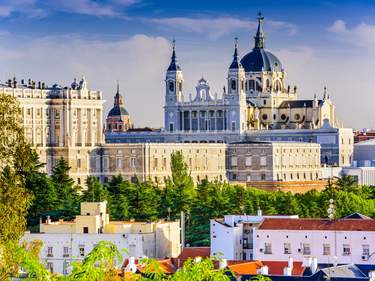
Made for Madrid
Take to the Spanish capital for art, culture and a taste of life in the city, Madrileño-style. Explore age-old churches and pretty plazas, stroll through the lovely Buen Retiro Park and visit captivating Toledo. Then, come sundown, discover the city's vibrant barrios and lively nightlife.
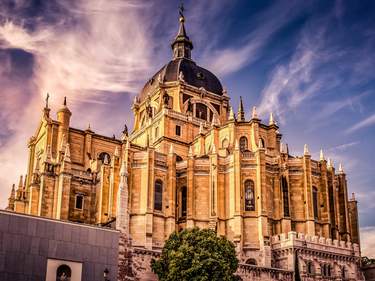
A Madrid getaway
Spend four days discovering the wonders of Spain's capital Madrid: from fascinating museums like El Prado and Reina Sofia over exploring unknown corners with your private guide to a day trip to the surroundings, this itinerary packs the best of Madrid.

Hidden Spain - From Barcelona to Basque Country
Do you want to explore highlights in Spain while staying in nature at the same time? Look no further. Start your Spanish adventure in Barcelona before heading off to the mountains - drive your rental car to Andorra and further on to Basque Country. Decide between driving yourself or guided tours.
Pamplona's legendary Fiestas de San Fermín, or Sanfermines, known to the rest of the world as the Running of the Bulls and popularized by Ernest Hemingway's The Sun Also Rises (1926), lasts from noon on July 6 until midnight on July 14. The daily early-morning bull-run, or encierro, is just one component of nine days of riotous celebration, which also features bands, parades and 24-hour dancing in the streets. For details, see w sanfermin.com .
El encierro
The encierro, the Running of the Bulls, takes place every morning. Six bulls are released at 8am, to run from the Corralillos near Plaza Santo Domingo to the bullring, where they will fight that evening. They take around four minutes to race a fenced-off course of just over 800m, through Plaza Consistorial and along c/Estafeta; official pastores (shepherds) armed with sticks make sure they keep going. A second batch of more placid animals follows, to help round up stragglers. In front, around and occasionally beneath the bulls run the hundreds of locals and tourists who are foolish or drunk enough to test their daring against the horns.
Other San Fermín events
Pamplona offers plenty of other hazardous pursuits. Many visitors have fun hurling themselves from the central fountain on Plaza Consistorial or surrounding buildings, in the all-too-often vain hope that their friends will catch them. Other events include live music nightly from midnight in the bars and at Plaza del Castillo, continuing until about 4am in the fairground on the Avenida de Bayona, 1km southwest of the centre. Fireworks go off every evening in the Ciudadela park (about 11pm), and there's a funfair on the open ground alongside. Competing bands stagger through the streets all day playing to anyone who'll listen.
Two days before the encierro, animal-rights charity PETA puts on the annual Running of the Nudes in which naked protestors draw attention to the conditions endured by the bulls and what happens to them afterwards.
Bullfighting itself take place daily at 6.30pm. Tickets (€15–75) go on sale at the Plaza de Toros at 8am the day before. At the end of the week (midnight July 14), the festivities are officially wound up for another year with a mournful candlelit procession, the Pobre De Mi (Poor Me). For more on bullfighting see Sports and activities.
Among the best of the other Basque towns where fiestas involve some form of encierro are Tudela (July 24–28), Estella (first weekend of Aug, with no official ban on women participants), and Tafalla (mid-Aug).
If you're planning a trip to Spain, don't miss our Spain itineraries and information on how to get there .
The Rough Guides to Spain and related travel guides
In-depth, easy-to-use travel guides filled with expert advice.
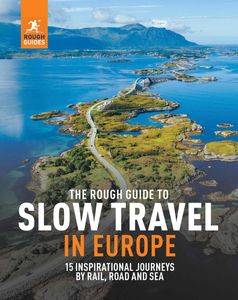
Find even more inspiration for Spain here

Planning your own trip? Prepare for your trip
Use Rough Guides' trusted partners for great rates
written by Rough Guides Editors
updated 05.06.2024
Ready to travel and discover Spain?
Get support from our local experts for stress-free planning & worry-free travels.
- Where to stay
- Travel advice

IMAGES
VIDEO
COMMENTS
Tourism in Pamplona. What to see. Tourist information
The highlight of the interior is the magnificent baroque organ, considered the best of its kind in Pamplona. 7. Running of the Bulls. Source: wikipedia. Running of the Bulls. This is the spectacle that most people associate with the city, first brought to foreign attention by Hemingway's classic The Sun Also Rises.
Also the exterior of the church has intricate carvings over the main entrance. The church does not have a typical alter... See way to experience (1) 10. Museo Universidad de Navarra. 80. Speciality Museums. By 936judil. The Museo Universidad de Navarra opened in 2015 and is a museum of abstract art.
Best Things to Do in Pamplona. 1. Experience the running of the Bulls at the San Fermin Festival. San Fermin is one of the biggest fiestas in the world, held in Pamplona from the 6th to the 14th of July. This famous festival is dedicated to Saint Fermín, and the main event in San Fermin is the running of the bulls.
Thrill-seeking tourists flock to Pamplona to experience the famous Running of the Bulls event, a wild and rowdy spectacle that is part of the San Fermín Festival in July. Pamplona is also a worthwhile destination in itself. Still partly surrounded by medieval walls, Pamplona's historic center is filled with architectural gems like its Gothic cathedral, 16th-century citadel, and Baroque town hall.
Pamplona travel - Navarra, Spain, Europe
THE 30 BEST Things to Do in Pamplona, Spain. Places to Visit in Pamplona. Check out must-see sights and activities: Catedral de Pamplona, ... Other Top Attractions around Pamplona. 2024. La Concha Beach. 9,259. 63 km away. San Sebastian - Donostia. Beaches. 2024. Tierra Rapaz. 1,502. 63 km away. Calahorra. Amusement & Theme Parks. 2024. Parte ...
Pamplona. If you're not in town during the running of the bulls, you can get a dramatic sense of the action at this life-size bronze sculpture. Stretching 4m wide…. Discover the best attractions in Pamplona including Museo de Navarra, Catedral de Santa María, and Ciudadela.
Things to Do in Pamplona, Spain: See Tripadvisor's 79,975 traveller reviews and photos of Pamplona tourist attractions. Find what to do today, this weekend, or in August. ... Top Attractions in Pamplona. Map. See all. These rankings are informed by Tripadvisor data—we consider traveller reviews, ratings, number of page views, and user location.
The capital of the Navarra region in northern Spain, just one hour south of San Sebastian, the city of Pamplona is packed full of mediaeval charm a lovely old town, ... After just 1 hour by car or 1.5 hours by train, you can travel from Pamplona to the vibrant city of Logroño. The capital of the Rioja region, you would be correct to assume ...
Tourism guide for Pamplona, Spain, famous for its San Fermin Festival & the Running of the Bulls. It has also a beautiful old town, a citadel park & more. The Best of the Basque Country ... Everything from the Old Town to visiting the Santa Maria Cathedral - if it deals with Pamplona tourism, we've got you covered. 1 Casco Viejo - Old Town.
Pamplona, Spain is the birthplace of Basque culture. It is also one of the most visited places in the Basque world. ... The city of Pamplona has many beautiful parks and attractions but none of them are like Yamaguchi Park. This Japanese inspired park is expansive and offers many relaxing elements along with over 1,000 different species of ...
41,513. Pamplona, Spain. More than just a stage for the annual "Running of the Bulls" festival, Pamplona offers a rich taste of Spain's northern Navarre region. Medieval walls surround a walkable old town, where Basque-style tapas bars rub shoulders with Gothic cathedrals and abundant green spaces. Read more.
Top Things to Do in Pamplona, Spain: See Tripadvisor's 80,261 traveller reviews and photos of Pamplona tourist attractions. Find what to do today, this weekend, or in September. We have reviews of the best places to see in Pamplona. Visit top-rated & must-see attractions.
Natural Feature. Spanning a whopping total of nearly a million square meters, Pamplona's Riverside Park is the lung of this great city. Leaving behind the stone enclosure of the ancient city walls, you can enjoy a leisurely walk in the outdoors along the 17 kilometers of pathway meandering the banks of the Arga, Elorz and Sadar rivers.
The original building was demolished in 1752 but was reconstructed and had an exceptional baroque civil architectural style. The building was again torn down in 1951, but the façade was preserved with its baroque style while the top section has a neoclassical style. 5. Get Lost in the City Walls of Pamplona.
Pamplona Spain Visitor & Tourist Information. Pamplona Spain is an ancient city located in the beautiful region of Navarre. The city is brimming with history, culture, and vibrant traditions. From its famous festival to its captivating landmarks, there's something for everyone to enjoy in this charming city.
Visit Pamplona. Pamplona, called Iruna in Basque, is the capital of the province of Navarra in the Basque Country of Spain. Pamplona is an attractive city at any time of the year but it is for the Fiestas de San Fermin, Pamplona's famous bull running festival in July, that the visitors flock in.
Keep strolling through the old town and you will come to the Pamplona bullring, inaugurated on 7 July 1922. It is the second largest bullring in Spain (after the bullring in Madrid) and it can sit approximately 20,000 spectators. Every year it hosts the bullfights of San Fermín and also marks the end of the running of the bulls held every morning.
10. Museo Universidad de Navarra. 80. Speciality Museums. By 936judil. The Museo Universidad de Navarra opened in 2015 and is a museum of abstract art. It is located on the University of... 11. Parque de Yamaguchi.
Frequent trains connect Pamplona to Madrid, with travel times of three to five hours and ticket costs of €25-60. Barcelona is four or five hours by train, and tickets cost €35-60. The nearby regional hub of San Sebastián is two hours by rail (€16-25) and the Basque capital of Vitoria-Gasteiz just one hour away (€6-10).
Occupying a unique setting in a valley already part of the Pyrenees foothills, and crossed by three rivers, the main of them called Arga, Pamplona is a city that has much more to offer the visitor than the world-renowned San Fermin festivity: a town of contrast, where the old and the new mix creating an incomparable blend. This Pamplona guide ...
This site is owned by Apa Digital AG, Bahnhofplatz 6, 8854 Siebnen, Switzerland. Rough Guides® is a trademark owned by Apa Group with its headquarters at 7 Bell Yard London WC2A 2JR, United Kingdom. Plan your visit to Pamplona, Spain: find out where to go and what to do in Pamplona with Rough Guides.